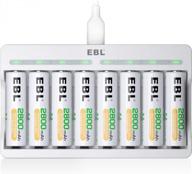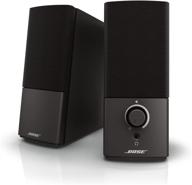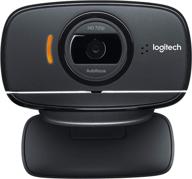Cryptocurrency Glossary: Trading, Blockchain & Mathematical Terms
In math notation, the additive group of the finite field of order q.
In math notation, the group of integers under addition.
In math notation, the ring of integers under addition and multiplication
In math notation, the ring of polynomials in x with coefficients in the field of integers modulo prime p.
The leverage a trader uses. 100X would mean that if a trader has deposited 100 USD he would be able to open a position worth 10 000 USD. It can be used with other numbers as well, for example, 5X. Leverage 100X is provided on BitMex. If you have an experience working with this exhange, you can leave your feedback or read reviews of Revain experts here: https://revain.org/exchanges/bitmex
- A crypto trading term meaning a profit of 10 times your amount. It can be used with other numbers as well, for example, 2X. 2. The leverage a trader uses. 10X would mean that if a trader has deposited 100 USD he would be able to open a position worth 1000 USD. It can be used with other numbers as well, for example, 5X.
Abbreviation for data for 1 hour. For example on price charts.
A double layer security measure used by many services today. To log in, you not only need to enter a password, but also a code that you receive via SMS, e-mail, Google Authenticator, or specially designed hardware.
Abbreviation for data for 24 hours. For example on price charts.
Abbreviation for data for 30 days. For example on price charts.
Also known as a Majority Attack. The event of one or a group of miners gaining control of greater than 50% of the network's mining hashrate. In such a situation the 'miners' can deliberately not confirm transactions or to issue transactions twice (double-spend). It is very expensive to initiate a 51% attack on the Bitcoin network as it is heavily secured with many miners, however cryptos with smaller hashrate sometimes were victims of this type of attack. Well-known examples are BTG and Ethereum-Classic (ETC), however, their networks were able to quickly solve the problem and return to normal operation.
Abbreviation for data for 7 days. For example on price charts.
In mathematics, abelian refers to any of several different mathematical concepts named after Niels Henrik Abel.
In the study of logic, something observed similarly by most observers, or something agreed upon, or which has the same value each time measured. Something not in dispute, unarguable, and independent of other states. As opposed to contextual.
An economics concept in which one party has a direct advantage in efficiency in producing/providing a specific good or service over another party. Bitcoin has an absolute advantage over other cryptocurrencies.
An ‘abstract’ is a brief summary of a document. A one-paragraph description of what the white paper of a cryptocurrency or a token is about.
Relating to education, scholarship, and research.
A planned or not planned pause in the curriculum.
The ability to interact with someone or something. Right or permission to do so.
One of the possible goals of cryptography. The idea of restricting access to documents, equipment, or keys to those who have permission.
One usually needs to create an account to have access to all features of exchange, blockchain review platforms or other cryptocurrency services. Accounts consist of a username and a password and are often protected by two-factor authentication. On the other hand, owning a cryptocurrency doesn't require opening an account on a third-party service and may be limited to owning a private key.
One of the goals of cryptography. Nonrepudiation. Responsibility for messages sent or statements made.
An eligible investor. May refer to different standards to become such in different jurisdictions. In the United States, for instance, only accredited investors may invest in hedge funds, venture capital funds, and other "advanced" forms of investing. Even though some cryptocurrency projects might be open only for accredited investors, the initial intention of the technology is to make investing possible for everyone. In accordance with the Securities Act 1933 (§ 230.215), accredited investors include various groups of investors (mainly legal entities) with total assets of more than 5 million US dollars. An individual can become a qualified or accredited investor if the total value of his (her) assets, excluding the cost of the main housing, is at least $ 1 million, or if his (her) annual income for the past two years has been at least $ 200,000 annually ($ 300,000 for couples) and there is reason to believe that it will not decrease during the given calendar year. The legislation of the European Union regarding the status of a qualified investor is based on the EU “The Markets in Financial Instruments” Directive (MiFID). Its task was to create and implement a “single passport” regime for investment companies allowing them to work in Europe following the same rules in order to strengthen the protection of European investors. The directive is valid in 28 countries of the European Union, as well as in Iceland, Norway and Liechtenstein. According to the Directive, individuals residing in the EU can be registered as qualified investors at their own request and if at least two of the three conditions are met:
- the investor made transactions of significant value on the securities market with a frequency of at least ten transactions per quarter for the previous four quarters;
- the investor's securities portfolio exceeds 500,000 euros;
The ratio of a measured value to the true value. The closeness of the measurements to a specific value.
A word constructed from the beginning letters of each word in a phrase, name, title, or motto.
In motion, or use. In contrast to "passive." In cryptography may refer to an S-box in which input has changed or an active attack. An active attack is a type of attack aiming at changing the information in some way by conducting some process on the information.
An investing strategy employed by fund managers aiming to outperform an index or market to generate greater profits. The opposite of "indexing".
A phrase of Latin origin that is used in modern English to mean 'for this purpose' or 'specifically for this.' An ad hoc network usually refers to a decentralized network, which requires little to no planning.
An additive combiner uses numerical concepts similar to addition to mixing multiple values into a single result. This is the basis for conventional stream ciphering. Additive combiners are linear, in contrast to nonlinear combiners such as Latin square combiners, and Dynamic Substitution combiners.
The Additive Congruential Random Number generator is simple to implement, fast, but not widely known. Random number generators are important in many kinds of technical applications, including physics, engineering, or mathematical computer studies (e.g., Monte Carlo simulations), cryptography, and gambling (on game servers). Advantages of additive RNG include a long, mathematically proven cycle length and especially efficient software implementations.
The conventional stream cipher, based on simple additive combining.
A string of letters and numbers that are used to receive cryptocurrency. Works similar to a traditional bank account number and can be shared publicly with others. The difference is that a cryptocurrency address is generated fully automatically and the process can be even done offline. The way addresses look may slightly vary for different cryptocurrencies. The address of the smart contract of the Revain token on the Ethereum network: 0x2ef52Ed7De8c5ce03a4eF0efbe9B7450F2D7Edc9.
In argumentation, the process of synthesizing a deep understanding of meaning, based on the analysis of multiple examples. Often used in the Socratic Method.
A short abbreviation for address, especially an email address. May refer to a public key – your cryptocurrency address.
The Advanced Encryption Standard (AES) is a symmetric block cipher chosen by the U.S. government to protect classified information and is implemented in software and hardware throughout the world to encrypt sensitive data.
Advanced Narrowband Digital Voice Terminal is a secure and encrypted voice communication standard, developed in the late 1970s by the US National Security Agency (NSA), for use on narrowband voice circuits.
Over the years, AES has proven itself to be a reliable and effective method of safeguarding sensitive information.
An affiliate link is a specific URL that contains a special and mostly unique identification tied to another person's account. This URL can be obtained when a website offers an 'affiliate program'. Sharing an affiliate link makes it possible for the website to record the traffic you generated. This is usually compensated with tokens, cash rewards, or сryptocurrencies: BTC, ETH, REV, etc.
Related to connections or affinities.
A Boolean function which can be represented in the form: anxn + an-1xn-1 + ... + a1x1 + a0, where the operations are mod 2: addition is Exclusive-OR, and multiplication is AND. If the constant term of an affine function is zero then the function is called a linear Boolean function. Thus, affine Boolean functions are either linear Boolean functions or their compliments.
One of the classic hand-ciphers described mathematically as F(x) = ax + b (mod n) where the non-zero term makes the equation affine.
A device that has never been (and will never be) connected to an insecure network, such as the internet. Such devices are used to store cryptocurrencies as safely as possible. It's also referred to as 'cold storage', where 'hot' would mean connected to the internet and 'cold' the opposite.
An “airdrop” is a free distribution of a cryptocurrency or token. It can be targeted or distributed to all existing addresses on a given blockchain network. Airdrops are like coupons or free samples that you might receive in the mail from a local merchant. Just like a coupon motivates you as a customer to shop at a specific store, so a free token might encourage you to try a new decentralized application or dApp. In other words, it is a bootstrapping mechanism to encourage initial adoption. Very often a specific condition should be met to be eligible for an airdrop. For example, having a set amount of other tokens on your balance.
The use of variables and the valid manipulation of expressions in the study of numbers. Originally an Arabic word meaning "reunion of broken parts".
The mathematical approach towards secrecy systems. For example, if there are two secrecy systems T and R we can often combine them in various ways to form a new secrecy system S. If T and R have the same domain (message space) we may form a kind of weighted sum.
ANF is a normal form, which means that two equivalent formulas will be converted to the same ANF, easily showing whether two formulas are equivalent for automated theorem proving. Unlike other normal forms, it can be represented as a simple list of lists of variable names.
A set of mathematical instructions or rules that need to be followed when solving a problem. A process or set of rules to be followed in problem-solving or calculation operations, usually by a computer, although humans tend to follow steps algorithmically as well. In cryptocurrencies, algorithms are set to determine the way currency functions. They are the rules which are to be followed no matter what, in contrast with fiat currencies which are often additionally printed when needed for example.
Algorithmic complexity is a measure of how long an algorithm would take to complete given an input of size n.
An alias is a pointer to a file or folder on your hard drive. Alias is a small file that takes very little space because it only has information about the location of the original file. It is not an exact copy of the original file. When you delete the alias, the original file it points to is not deleted.
An order which once placed must be either filled in its entirety or not at all. This prevents any partial filling of orders. This can be useful if you're trying to ensure that you get a certain price for all of a moderate-sized order.
The idea of a block mixing function in which knowing even all but one of the mixed outputs exposes none of the original input block values. When used with a conventional block cipher, an AONT appears to increase the cost of a brute-force attack by a factor which is the number of blocks in the message.
The historically highest seen price of an asset or currency or token.
The opposite of ATH. The lowest price that an asset or currency has ever had.
"A descriptive variance statistic based on deviation from the preceding sample. This is computed as the sum of the squares of differences between each sample and the previous sample, divided by 2, and divided by the number of samples-1. Allan Variance is useful in the analysis of residual noise in precision frequency measurement."
Allotment of cryptocurrencies, tokens, or equities that may be earned, purchased, or set aside for a certain investor, team, group, organization, or other related entity.
The very first version of a product released by developers, consisting of basic or limited functionality and subject to improvements and debugging.
An alphabet is a finite set of symbols to be used.
Alphanumeric is something made up of both letters and numbers. Alpha - comes from the word “alphabet” and numeric comes from the word “numerical” meaning relating to numbers.
Alternative coins markets. May also refer to all pairs which are not tied to either bitcoin or fiat currencies. For example REV/USDT pair.
As Bitcoin is the first cryptocurrency that captured the world’s imagination, all other coins were subsequently termed “altcoins”, as in “alternative coins”. Bitcoin and altcoin cycles can be observed by studying the bitcoin dominance chart. Altcoin Example - REV Token (ERC20 Token Revain)
The backup command center of the Pentagon's National Military Command Center.
The electrical power that repeatedly reverses the direction of flow. As opposed to DC.
In statistics, the statement formulated to be logically contrary to the null hypothesis.
American Standard Code for Information Interchange character encoding scheme is based on the ordering of the English alphabet, using 7-bits to describe each letter. Commonly used to represent text in computers, communication equipment, and other devices that use text. Most modern encoding schemes are based on extended ASCII.
A component or device intended to sense a signal and produce a larger version (amplified) of that signal. Users of Synereo AMP blockchain could “amplify” creative works of others by sending them AMP tokens but the networked seized to operate at the time of writing. Unlike Synereo AMP, Revain user reviews allow crypto projects, cryptocurrency wallets, blockchain games and other projects to strengthen their position both in the ranking and in search results.
The maximum extent of a vibration or oscillation, measured from the position of equilibrium
To form a recognizable word, phrase, or message by rearranging letters.
Pertaining to continuous values. As opposed to digital or discrete quantities.
From Greek geometry, "according to a ratio." To "draw a parallel" between situations that seem to have some property in common. A mode of argumentation in which a known relationship or pattern is applied to a new situation.
Decomposition of a whole into parts. As opposed to synthesis. The branch of mathematics concerned with functions and limits. There are traditionally technical and fundamental analyses when we refer to market studies.
A political philosophy and school of thought that believes in removing centralized states in favor of self-ownership, private property, and free markets. Many of the early adopters of Bitcoin were (and many still are) proponents of anarcho-capitalism, believing it would give power and control back to the people. Anarcho-capitalists believe that cryptocurrency is a good thing because it gives complete ownership of one's assets to the owner avoiding banks and state authorities.
Selecting transactions for mining not just based on their fees but also based on the fees of their ancestors (parents) and descendants (children).
A Boolean logic function which is also mod 2 multiplication.
Investors who seek opportunities to provide funding for entrepreneurs or start-up companies at the early stages because they believe in the project idea or think it has potential.
In an electronic circuit element, the end which sources electrons and accepts conventional current flow. The (-) end of a charged battery. The (+) end of a battery being charged. The P side of a PN semiconductor junction. As opposed to the cathode.
In crypto networks, anonymity means un-linkability. That means no one other than the sender and receiver of the transaction knows who participated in the exchange and any details of the exchange. Cash, for example, is an anonymous, peer-to-peer payment system, unless the buyer or seller require documents from one another to proceed with the transaction. Although anonymity is often associated with criminal activity, there are many legitimate justifications for anonymous payments. Few people are comfortable sharing their salary with neighbors, and no business would want to reveal details of its specific contracts to competitors. Moreover, transaction data if intercepted can provide a great source for research and marketing and thus has value in itself. Anonymity also gives a currency the property of fungibility. Fungibility means that each unit is interchangeable, as in how we consider two separate dollar bills to be interchangeable. This is important because it has the potential of the “network effects” that enable economies to grow.
Anonymous refers to anonymity. Bitcoin transactions, for example, are anonymous only to a certain extent. The addresses are not directly related to individuals, on the other hand, all the transactions are permanently visible to everyone and remain kept on the blockchain forever. In most cases, it could be possible to link an address to a person. This has led to the creation of privacy-focused coins, such as Monero, PivX, Zcash, ZClassic and many others.
An antecedent is the first half of a hypothetical proposition, whenever the if-clause precedes the then-clause. In some contexts, the antecedent is called the protasis. Also see: consequent
A framework consisting of legal and regulatory procedures to minimize and curb the flow of funds that are generated from illegal or dubious activities. AML policies require many exchanges or other crypto applications to "know their customers" (KYC), who need to provide documents to be able to trade, withdraw funds or use other functions of the applications.
The class of cryptocurrencies that are based upon the platform cryptocurrencies. See Platform Cryptocurrencies.
API stands for Application Programming Interface. An API is a code that allows one application to retrieve and work with data from another application.
Short for ‘Application Specific Integrated Circuit’; it is a mining equipment that is used specifically to mine a certain cryptocurrency. Often compared to GPUs, ASICs are specially created and bought for mining purposes and offer significant efficiency improvements and power savings due to its narrow use case. An ASIC-resistant cryptocurrency has its protocol and mining algorithm configured in such a way that using ASIC machines to mine the coin is either impossible or brings no significant benefit when compared to traditional GPU mining. This is sometimes needed as many crypto communities strive to have a fair and decentralized mining process. For example, Bitcoins are mined with ASIC equipment.
ASIC miners are microchips or processors, designed to perform a very specific task. The Bitcoin ASIC is a very popular one, which makes it possible to mine Bitcoin more efficiently, at the same time making it harder to mine on a normal computer. ASICs can be also developed specifically for mining particular coins more efficiently at the same time they can become useless after a protocol upgrade, which makes the blockchain ‘ASIC-resistant’.
The annual percentage rate of interest.
A practice of taking advantage of differences in the price of the same commodity, asset, or currency in two or more markets or exchanges. For example, cryptocurrency prices on Korean exchanges can be different from those on US exchanges. An arbitrage trader would be in both markets to buy in one and sell in another for profit.
In an FSM, a path segment that does not repeat. As opposed to a cycle. In any FSM of finite size, every arc must eventually lead to a cycle.
An archival node saves all of the intermediary/transitional/historical states of each block added to a blockchain. Often used for research purposes.
- In mathematics and programming, a variable which is an input to a function. A parameter. An independent variable. 2. In the study of logic, reasons that support a conclusion. Technically, a sequence of statements (premises) followed by a conclusion statement. An argument is valid only if the conclusion necessarily follows from the premises, and may be invalid
Argument applied to a case under discussion. Reasoned discourse to infer a conclusion.
In mathematics and programming, the number of parameters or arguments to a function or operator. Also see unary, binary, monadic and dyadic.
A public code for converting between 7-bit values 0..127 (or 00..7f hex) and text characters. ASCII is an acronym for American Standard Code for Information Interchange.
It is when you lose all of your invested capital, especially by shorting Bitcoin. The expression “Ashdraked” may come from a story of a Romanian cryptocurrency investor who insisted upon shorting BTC, as he had done so successfully in the past. When the price of BTC rose from USD 300 to USD 500, the Romanian investor lost all of his money.
An ASIC-resistant cryptocurrency has its protocol and mining algorithm configured in such a way that using ASIC machines to mine the coin is either impossible or brings no significant benefit when compared to mining on regular devices.
AMA is the abbreviation for 'Ask Me Anything'. Within the crypto world, this is a commonly used method for the developer team to answer questions from the community. Developers can answer questions on the Telegram, Reddit, WeChat, channels on YouTube, on a blog post, or any other medium.
The ask price for a given asset is the minimum price for which someone is willing to sell that asset.
A system or method that helps individuals or companies manage assets.
AUM is the total market value of the investments that a person or entity manages on behalf of clients.
- In abstract algebra, a dyadic operation in which two sequential operations on three arguments can first operate on either the first two or the last two arguments, producing the same result in either case: (a + b) + c = a + (b + c). 2. In algebra, the associative law for addition and multiplication.
In the study of logic, a statement accepted as true, but not proven. Typically, a condition or premise. In a mathematical proof, each and every assumption must be true for the proof result to be true. If the truth of any assumption is unknown, the proof is formally incomplete and the result has no meaning.
A deceptive practice where a sponsor is masked or hidden, making it seem as though a marketing message came from and is strongly supported by the community when it is not. A very common practice for ICOs, small tokens, and SCAMs.
Also called a two-key cipher. As opposed to a secret key cipher which uses a single key for both enciphering and deciphering, a public key cipher uses one key to encipher plaintext into ciphertext, and a different key to decipher that ciphertext. Since the enciphering key cannot decipher the ciphertext, the enciphering key can be exposed without also exposing the message.
AKA is a cryptographic system that uses a ‘pair of keys’, the so-called ‘public key’ and the ‘private key’. The public key is needed by both parties to execute a transaction. The private key is only known to the owner and acts as an authentication method for accessing the coins stored on the public address.
Events in electronic systems that do not happen at the same time or speed, or happen independently of the main program flow.
A stream cipher which automatically resynchronizes if the ciphertext stream has either position errors or value errors. As opposed to a synchronous stream cipher.
Asynchronous transmission is the transmission of data in which each character is a self-contained unit with its own start and stop bits and an uneven interval between them. Asynchronous transmission is also referred to as start/stop transmission.
It is a technique that allows crypto owners to trade one asset for another (on a different blockchain or off-chain) without the use of an exchange, trading platform, or middleman.
In cryptography, when someone says they have "an attack," the implication is that they have a successful attack (a break) and not just another failed attempt. There are numerous ways a cryptocurrency can be attacked, one of the most famous is 51% attack.
Different attack strategies to make cryptography fail or a blockchain malfunction. The most known are brute force, 51% attack, birthday attack, and others.
Points in a software environment where an attacker can attempt to enter or extract data from the system.
In the cryptographic analysis, the idea that the root node will represent the ultimate security. Each path to the root then represents the accumulated effort needed to break that security. A possible problem is that it is typically impossible to assure that every alternative attack has been considered. And if some unconsidered approach is cheaper than any other, that becomes the true limit on security, despite not being present in the analysis.
As the name seems to suggest, an attestation ledger is basically a record block that helps provide users with evidence related to individual transactions that they might have performed in the past."
A live event where assets or services are traded through a bidding process, which is often led by an auctioneer. After digital auctions emerged classic auctions still take place as a form of art and tradition.
An audit is an official examination of the organization’s accounts. The organization’s records are examined and checked to ensure that they fairly and accurately reflect the transactions that have been made. This is normally carried out by an independent body. If it is done by employees themselves, it is called an internal audit. Smart contract source code audits include identifying errors and undocumented features. Based on the results, reports are prepared with recommendations to reduce and eliminate potential risks. This is usually done by an independent competent authority. For example, Revain smart contract was audited by Kaspersky International, specializing in systems for protection against computer viruses, spam, hacker attacks, and other cyber threats. https://revain.org/assets/revain-contract-review-report.pdf
When sampling with replacement, eventually we may again find some object or value which has been found before. We call such an occurrence a "repetition." A value found exactly twice is a double, or "2-rep"; a value found three times is a triple or "3-rep," and so on.
The decentralized platform which is used for prediction markets. Prediction markets can be seen as a form of betting with the difference that they are decentralized and often have other goals besides profit such as crowd wisdom and others. Augur's incentive ensures that the outcome of the prediction is free of prejudice, honest, accurate, and censorship-resistant. Augur's ticker is REP. https://revain.org/projects/augur
A block cipher mechanism which inherently contains an authentication value or field.
One of the objectives of cryptography: assurance that a message or transaction was sent by the purported author. Forms of cryptographic authentication include key authentication for public keys, and source or user authentication, for the authorization to broadcast a transaction.
A recognized, appointed, or certified expert or body responsible for statements or conclusions in a specific field.
In statistics, the linear correlation of a sequence to itself ("auto"). The extent that any particular sample linearly predicts subsequent and prior samples (typically a different value for each positive or negative delay).
In cryptography, a stream cipher which generates the next keystream value from earlier elements in that same keystream. Typically, the ciphertext output is fed back to modify the state of the random number generator producing the running key or confusion sequence.
A message switching network for the U.S. military, used in the late 1960s. Typically secure on each link between large facilities called ASC's (Automatic Switching Centers), with internal computer message switching or forwarding between links. Replaced by the Milnet packet switching network in the early 1990s.
The military phone system that was built in the US in 1963. Designed to survive nuclear attacks, it allowed non-secure voice calls with precedence feature.
Wide area communications system used by the German Army (Bundeswehr). AutoKo I was introduced in 1977, followed in 1985 by AutoKo II and finally in 1995 by AutoKo 90. AUTOKO was gradually phased out from 2010 onwards. Examples of AutoKo equipment are the Siemens CTE-020, the Elcrovox 1/4 and the ANT KWF.
In abstract algebra, the special case of an isomorphism where the field or group is mapped onto itself.
A business or organization in which decisions are made electronically by written computer code and/or through the vote of its members. Same as DAO (Decentralized Autonomous Organization).
One of the possible goals of cryptography. Keeping services open for use. Thus cryptocurrency is aimed to be available for everyone not depending on the country of residency and legacy finance system functionality for the region.
The observed property of a block cipher constructed in layers or "rounds" with respect to a tiny change in the input. The change of a single input bit generally produces multiple bit-changes after one round, many more bit-changes after another round, until, eventually, about half of the block will change. An analogy is drawn to an avalanche in snow, where a small initial effect can lead to a dramatic result. As originally described by Feistel: "As the input moves through successive layers the pattern of 1's generated is amplified and results in an unpredictable avalanche. In the end, the final output will have, on average, half 0's and half 1's . . . ." [p.22] -- Feistel, H. 1973. Cryptography and Computer Privacy. Scientific American. 228(5):15-23. Also see mixing, diffusion, overall diffusion, strict avalanche criterion, complete, S-box. Also see the bit changes section of the "Binomial and Poisson Statistics Functions in JavaScript".
In cryptography, the avalanche effect is the desirable property of cryptographic algorithms, typically block ciphers and cryptographic hash functions. If an input is changed slightly (for example, flipping a single bit), the output changes significantly.
Avalanche multiplication is a current-multiplying phenomenon that occurs in a semiconductor photodiode that is reverse-biased just below its breakdown voltage.
A postulate. In the study of logic and argument, a statement assumed to be true without the need to prove it.
A cipher design fault, planned or accidental, which allows the apparent strength of the design to be easily avoided by those who know it.
The portfolio of coins and tokens one is going to buy or hold. Often related to a poorly performing bag of cryptocurrency which one keeps holding anyway because the current price is way lower than the entry price
A person who holds large quantities, or bags, of a cryptocurrency. Often used to describe such a person when the price of that cryptocurrency is declining and the person is still holding the "bag".
Baking is the process that Tezos uses to append new blocks of transactions to its blockchain. It is very similar to the delegated proof of stake. Bakers receive rewards for each block baked, similar to how Bitcoin miners receive rewards for discovering new blocks. A baker is more likely to bake a block if they have a larger number of rolls (groups of 10,000 XTZ). Accounts must be registered as a delegate to partake in the baking process and can bake on behalf of other accounts who do not meet the 10,000 XTZ requirement. The requirements to become a baker may change if the community and the ecosystem need it. https://revain.org/projects/tezos
Your account balance is how much of a currency or asset you have in it. Balance can be shown in different currencies. For example, you own REVain but want your balance to be shown in USDT. This doesn't mean that you own USDT it's just the representation calculated according to the current exchange rate. Balance can also mean a number of other things in different fields. See the following examples. Balance is another way of saying random sampling (as in statistics). Balance is the uniform distribution we strive for in keying (all keys being equally probable). Balance is the creation or selection of a particular object (e.g., a substitution table) from among all possibilities (or perhaps just those with a particular structure, e.g., orthogonal Latin squares).
The usual balanced block mixer is a two-input-port two-output-port mechanism which guarantees that any change on one input port will produce a change on both output ports. This property is sufficient to guarantee the overall diffusion needed in wide block ciphers.
A mechanism for mixing large block values like those used in block ciphers. A BBM is balanced to avoid leaking information, and is effective in just a single pass, thus avoiding the need for repeated rounds and added hardware. A BBM has no data expansion. A BBM supports the construction of scalable ciphers with large blocks and can be more efficient, more flexible, and more useful than conventional fixed and smaller designs.
In the context of cryptography, a combiner mixes two input values into a result value. A balanced combiner must provide a balanced relationship between each input and the result. In a statically-balanced combiner, any particular result value can be produced by any value on one input, simply by selecting some appropriate value for the other input. In this way, knowledge of only the output value provides no information - not even statistical information - about either input.
In electronics, typically an interconnecting cable with two conductors having an exactly opposite or symmetric signal on each. More specifically, a two-wire signal interconnection where each wire has the same impedance to ground or any other conductor. In contrast to an unbalanced line (like coaxial cable), where one of the conductors (the shield) has a low impedance to ground.
The bare multisig (multi-signature) output script means that more than one key is required per the given threshold number of signatures from the provided number of public keys to authorize the transaction.
The resistance which is found in the base of any transistor and acts in series with it, generally a few ohms in value.
A public code for converting between 6-bit values 0..63 (or 00..3f hex) and text symbols accepted by most computers. Also see ASCII.
The method used in the Bitcoin network for converting 160-bit hashes into P2PKH and P2SH addresses. Also used for other tasks in Bitcoin, such as encoding private keys for backup in WIP format. Not the same as other base58 implementations.
Multiple transactions combined in one to increase efficiency and speed and decrease fees.
A five-bit data coding scheme invented by Emile Baudot in the 1870s for use in the Baudot Distributor, a sort of automatic telegraph that supported higher speed transmission over a circuit between two synchronized electromechanical devices. The Baudot Distributor soon gave way to the teletype (TTY), which also employed the Baudot coding scheme, subsequently known as International Telegraph Alphabet #2 (ITA #2)
A term used to indicate that the market is moving in a downward direction. This term is also used to describe a person who is not confident about the future of a particular market (eg. cryptocurrencies) and expects its value to decline in the coming future. The term can also mean a person who plans to make profits with the downward movement by shortening the markets. For traders being a bear or a bull may flip throughout the day multiple times, though in terms of one's views on a particular asset it is usually more consistent. "
A bear flag is a formation on the price chart which looks like an inverted flag with a pole. It suggests that the market is probably going to continue falling further. This is the opposite of a ‘bull flag’.
A long-term downward trend in the market. Every market normally has such a cycle because it's impossible for an asset to appreciate in value forever.
A bear trap is the opposite of a bull trap. This is when there are false signals on the price chart that a downtrend is coming. This can be a trigger for traders to take a short position. However, the price will rise again and the traders are lured into the trap and lose money with their short positions. A bear trap can be created by a group of traders with big size positions or can just occur on its own through misleading chart pattern and effects of mass psychology.
A bear trend is a long-term decline in the market. "Long-term" usually means at least a few months (e.g., the bear trend beginning in mid-January of 2018 year), and is represented by indicators like a negatively sloped moving averages (MA).
A ‘bearish’ market means that the complete market trend is in a downward motion. The opposite of ‘bearish’ is called ‘bullish’. The word also describes one's attitude about the future developments of price action as in a sentence like "I am bearish on Bitcoin".
A ‘bear whale’ is someone with a very large position in a coin, but with a ‘bearish’ vision. The bear whale will take every opportunity to sell parts of his position, which could prevent the price from rising or even cause dumps.
Bech32 is a Bitcoin ‘Segwit’ address format. These addresses always start with ‘bc1’ and therefore ‘bech32 addresses’ are also known as ‘bc1 addresses’. The format has not yet been implemented very widely in wallets. https://revain.org/wallets
The base-10 logarithm of the ratio of two power values (which is also the same as the difference between the log of each power value). The basis for the more-common term decibel: One bel equals 10 decibels.
A subjective conviction in the truth of a proposition. Mere belief is in contrast to a hypothesis, which states some expectation of fact and so maybe verified or falsified by observation and comparison in an experiment or just reality itself.
A measurement standard that can be used to gauge the performance of a particular asset, investment portfolio, the efficiency of business or equipment.
A Boolean function whose fast Walsh transform has the same absolute value in each term (except, possibly, the zeroth). This means that the bent function has the same distance from every possible affine Boolean function. Bent sequences are said to have the highest possible uniform nonlinearity. But, to put this in perspective, recall that we expect a random sequence of 16 bits to have 8 bits different from any particular sequence, linear or otherwise. That is also the maximum possible nonlinearity, and here we actually get a nonlinearity of 6. There are various more or less complex constructions for these sequences. In most cryptographic uses, bent sequences are modified slightly to achieve balance."
The algorithm used to find the shortest linear-feedback shift register (LFSR) which can reproduce a given sequence. This length is the linear complexity of the sequence.
In statistics, observations, or sampling with a replacement which has exactly two possible outcomes, typically called "success" and "failure." Bernoulli trials have the following characteristics: each trial is independent, each outcome is determined only by chance, and the probability of success is fixed. Bernoulli trials have a Binomial distribution.
An abstract term. The most difficult blockchain to recreate is the Best Blockchain.
A chain of block headers with each header linking to the header that preceded it; the most-difficult-to-recreate chain is the best header chain.
A tool used to measure the volatility of an asset in comparison to the volatility of a specific portfolio or market index.
One of the early versions of a program or platform for users to test and for a team to get feedback. The beta stage comes after the Alpha stage. In crypto space being in Beta is considered a good thing since something works already at the stage in comparison to many projects on the stage of description. A lot of crypto projects change dramatically all the time and thus claim a perpetual beta.
- In argumentation, favoring one side over another, typically by making the burden of proof more difficult for one side. 2. In statistics, results with some amount displaced from the theoretical or practical expectation. This is a clear indication that the measured process has not been completely understood or modeled. 3. In electronics, typically a static or DC voltage or current. A bias voltage is necessary to condition some forms of the transducer.
The bid price for a given asset is the maximum price that someone is willing to pay for that asset.
The difference in price between the lowest asking price and highest bid price on the order book for an asset. The spread could also mean the profit that market makers earn by buying and selling the asset on behalf of investors. As an asset's liquidity increases, the spread decreases correspondingly. At times of unusual instability the spread may increase dramatically.
A bijection on bit-strings, F: {0,1}n -> {0,1}n is one way to describe the emulated, huge, simple substitution of a conventional block cipher. In such a cipher, the encryption function is a key-selected permutation of all possible input or block values, which is the input alphabet. See Bijective and Mapping.
A bijection. A mapping f: X -> Y which is both injective (one-to-one) and surjective (onto). For each unique x in X there is corresponding unique y in Y. An invertible mapping.
Apparently, a form of data compression in which arbitrary values or arbitrary strings can be decompressed into seemingly grammatical text. More generally, the ability to decompress random blocks or strings into data with structure and statistics similar to that expected from plaintext. The phrase "Bijective Compression" should be taken as a name or term of art, and not a mathematical description.
Binance is a cryptocurrency exchange founded in 2017 by Changpeng "CZ" Zhao. Despite being a relatively new exchange, it has quickly become the world's largest (when measured by trading volume). Binance has also introduced and made a mainstream couple of concepts like exchange token usage for trade fee reduction (Binance coin, BNB) and initial exchange offerings (IEO), margin trading and staking. https://revain.org/exchanges/binance
Blockchain Charity Foundation is a nonprofit organization dedicated to achieving global Sustainable development by unlocking the power of blockchain.
The process when the exchange users and community vote for projects they want to be listed on Binance. Voters who picked the winning side could sometimes be rewarded with the tokens of the victorious project.
BEF is an initiative by Binance to collaborate with partners who care about the blockchain/cryptocurrency ecosystem and want to contribute to its long-term growth.
Binance Labs is the venture arm of Binance, established to incubate, invest and empower blockchain and cryptocurrency entrepreneurs and communities
From the Latin for "dual" or "pair."
Binomial literally means "two names." In statistics, the probability of finding exactly k successes in n independent Bernoulli trials, each of which has exactly two possible outcomes, when the "success" probability is p: n k n-k P(k,n,p) = ( ) p (1-p) k This ideal distribution is produced by evaluating the probability function for all possible k, from 0 to n."
BIP is the abbreviation of ‘Bitcoin Improvement Proposal’. This is a standardized way to introduce new functions and other features. Because of the decentralized nature of Bitcoin and therefore the lack of a formal structure, this system is used to improve Bitcoin in a well-founded and consensus-driven way.
- Having two polarities, as in + and - voltages (e.g., AC), and P and N semiconductor. 2. A junction transistor (NPN or PNP). As opposed to a field-effect transistor. 3. Circuits or devices implemented with junction transistors.
A birthday attack is a type of cryptographic attack that exploits the mathematics behind the birthday problem in probability theory. This attack can be used to abuse communication between two or more parties.
The apparent paradox that, in a schoolroom of only 23 students, there is a 50 percent probability that at least two will have the same birthday. The "paradox" is that we have an even chance of success with just 23 of 365 possible days represented.
- The smallest possible discrete unit of information. A Boolean value: True or False; Yes or No; one or zero; Set or Cleared. 2. In the context of crypto, a bit represents an amount of Bitcoin equal to 100 satoshis, or 1 millionth of a Bitcoin."https://revain.org/projects/bitcoin
The goal of achieving a balance, or equal numbers of 1's and 0's bits, in some vector or block.
A re-arrangement of the bits in a block of data. Also see bit permutation cipher.
A transposition cipher that re-arranges the positions of bits in the block of data being enciphered. For security even when the block is all-1's or all-0's, the data can be bit-balanced before transposition.
Bit transposition by the shuffle algorithm, see bit permutation.
Transposition by bit
BTC is the ticker for Bitcoin cryptocurrency. https://revain.org/projects/bitcoin
When using the word bitcoin as a unit of measure (e.g. 1 bitcoin), it is often used in the lower case version. Whereas using Bitcoin as the name, it is often spelled in the upper case version.
The very first cryptocurrency. It was created in 2008 by an individual or group of individuals operating under the name Satoshi Nakamoto. It was intended to be a peer-to-peer, decentralized electronic cash system. The first successful and widely used implementation of a blockchain. Because of bitcoin’s popularity and hash rate, it has become an anchor in the cryptocurrency market. Most altcoins especially smaller once are traded in BTC pairings only. https://revain.org/beginners-section/what-is-bitcoin
Bitcoin as a currency, blockchain, and community. Also see bitcoin lower case spelling.
A 'Bitcoin ATM' is a physical ATM where you can exchange fiat money for the cryptocurrency. Usually buying Bitcoin with such a machine is easier than selling it for cash which could require document verifications. There are other crypto ATMs for currencies like Dash, Ethereum, and many others.
Bitcoin Cash (BCH) forked from the Bitcoin network in August of 2017. This was the very first of many of the upcoming forks of the network and thus it was anticipated with a feeling of uncertainty at the times. Since then a lot of cryptocurrencies have often forked as well and such events became of less significance, they can still affect the price though. BCH has increased block size capacity (from 1 MB to 8 MB) as a way to solve the scaling problem. Bitcoin cash has a lot of proponents who advocate for the advantages of BCH over BTC, the most known proponent of BCH is Roger Ver. https://revain.org/projects/bitcoin-cash
The original Bitcoin wallet that is considered to be safe and very true to the essence of blockchain since you need to download the full copy of blockchain before using it. This process may require quite some time. https://revain.org/wallets
Bitcoin Days Destroyed is one way to measure of the transaction volume of Bitcoin. It is an estimate for the “velocity of money” within the Bitcoin network. This is used because it gives greater value to Bitcoins that have not been spent for a long time, and better represents the level of economic activity taking place with bitcoin than total transaction volume per day.
The ratio of Bitcoin's market capitalization versus the sum of the market capitalizations of all cryptocurrencies. It is also used by some traders and market researchers to identify the market cycles.
A fork of Bitcoin that is said to deal better with a bigger volume of transactions. One more difference is that it can be mined on regular GPUs rather than ASICs and thus is supposed to be less centralized. https://revain.org/projects/bitcoin-gold
Someone who believes that Bitcoin is the only cryptocurrency that holds any real value or potential. One of the reasons Bitcoin maximalists believe that BTC is superior to the other cryptos is that there are already numerous software products as well as people willing to accept BTC as a form of payment.
A peer-to-peer, decentralized network that allows users to send units of value to each other without any intermediary or bank. The less known fact is that the Bitcoin network also allows preserving data (in a form of text or other) on the blockchain. For example, Revain stores reviews on the Bitcoin blockchain. https://revain.org/blockchain
The first known Bitcoin purchase ever. At the time this pizza was bought for 10000 bitcoins, which would be worth a fortune today.
An open-source, cryptographic protocol that operates on the Bitcoin network. This protocol sets the “rules” for how the network runs.
Bitcoin SV (BSV, “Satoshi Vision”) forked from Bitcoin Cash’s blockchain in November 2018. Its creation was the result of a disagreement over Bitcoin Cash’s direction: the Bitcoin SV developers believe that their version of the cryptocurrency best reflects Satoshi Nakamoto’s original vision of what Bitcoin should be, as outlined in the Bitcoin white paper, Nakamoto’s forum posts, and Nakamoto’s emails. Bitcoin SV rejected certain updates adopted by the main Bitcoin Cash chain, including the introduction of code supporting smart contracts and canonical transaction ordering. BSV was subject to enormous volatility and various media speculations in its early days. https://revain.org/projects/bitcoin-sv
An online library of javascript code used for Bitcoin development, particularly web wallets.
Well-known BTC desktop wallet. This open-source software client contains a copy of the Blockchain and once installed turns your computer into a node in the Bitcoin Network.
Bitconnect is a cryptocurrency with the ticker BCC. It used to be a very popular altcoin in 2017 because it promised a daily yield of 1%. The system could live up to this due to a very successful trading bot and a 'multilevel marketing' method to attract new buyers. The company behind this coin was suspected of Ponzi scheme fraud and was investigated by the American regulators. Eventually, the company could not provide any evidence and closed its doors in January 2018. The price of the coin plummeted dramatically afterward and it is now no longer tradable. Even during its times of popularity most of the crypto space analysts warned about dangers connected with buying and holding Bitconnect.
Bitgrail’ is an Italian cryptocurrency exchange. In February 2018 hackers have stolen Nano coins (formerly known as RaiBlocks) worth more than 170 million dollars from the exchange.
The controversial and hard to obtain a business license issued for cryptocurrency companies in New York. Created and provided by the New York State Department of Financial Services (NYSDFS).
BitMEX is a cryptocurrency derivative trading platform founded in 2014 by Arthur Hayes. It is notable for offering up to 100x leverage on Bitcoin perpetual contracts, and up to 50x leverage on other large altcoin contracts like Ethereum. For quite some time BitMEX had the largest volume out of all crypto derivatives trading platforms, but then most of the exchanges started offering futures and margin trading. There is an opinion that BitMEX may sometimes malfunction and skip orders, not in the favor of traders as well as have local spikes to force a large number of stops to trigger. https://revain.org/exchanges/bitmex
Bitpay is a US-based bitcoin payment provider. It enables online stores to accept Bitcoin and Bitcoin Cash as a means of payment without the risk of price fluctuations. This is achieved by converting the payments directly and automatically to fiat money.
Bittrex is a cryptocurrency exchange founded in 2013, headquartered in Seattle, WA. It has a strong emphasis on security and has listed over one hundred cryptocurrencies. For quite some time Bittrex used to be a very popular exchange, but later on, it started to lose too many other exchanges in terms of the trading volume. Bittrex is also a platform known for having many of the unique coin pairings. Bittrex Global is Europe's oldest digital holding company headquartered in the Principality of Liechtenstein and operating on European markets. It offers SEPA bank transfers in euros and allows to purchase cryptocurrencies in pairs in euro.https://revain.org/exchanges/bittrex
BitTube is a video platform without ads where publishers can make money with their content. It is one of many Youtube alternatives on the blockchain (also see dtube, library credits, contentos, and others). Sometimes videos on Youtube are demonetized by the platform or censored, cause some to switch to or republish it on BitTube or other blockchain video hosting analogs. BitTube and other similar services are often known for rewarding viewers as well as creators, which is not the case for Youtube. https://revain.org/projects/bit-tube
In TEMPEST, electrical wiring or signals carrying ciphertext which thus can be exposed without danger.
An engineering term for a component only specified with input and output values, with the internal implementation irrelevant. In this way, the real complexity of the component need not be considered in understanding a system using the component.
A black swan event is something that is virtually impossible to predict and has a huge impact on the market. A standard example of a black swan event was Zimbabwe’s peak inflation rate of almost 80 billion percent back in 2008. Part of responsible risk management in trading involves considering the possibility of these impossible-to-predict, marketwide changes — especially in an extremely volatile market such as crypto. Coronavirus infection (COVID-19) can also be considered a good example. Its consequences cannot be predicted and it has a telling huge impact on the market.
An estate in the town of Bletchley (UK) was the UK's main code breaking site during WWII. It is here where, amongst others, the German Enigma codes were broken.
A block is a file in which blockchain data, like transactions, is stored. Each block relates to its previous block, making it a chain. This is why it’s called ‘Blockchain’. Most blockchains have a predetermined maximum file size per block. The first block in a blockchain is called the ‘genesis block’.
The first block in the Bitcoin blockchain. Synonym of the genesis block.
A cipher that requires the accumulation of multiple data characters (or bytes) in a block before ciphering can start. This implies a need for storage to hold the accumulation, and time for the accumulation to occur. It also implies a need to handle partly-filled blocks at the end of a message. In contrast, a stream cipher can cipher bytes immediately, as they occur, and as many or as few as are required. Block ciphers can be called "codebook-style" ciphers, and are typically constructed as product ciphers, thus showing a broad acceptance of multiple encryption.
In the study of technology, it is often important to create a scientific model that describes observed reality. In cryptography, things are more fluid than in the physical sciences, because the reality of ciphering is itself a construction, and there are many such constructions. Consequently, it is not always obvious what model delivers the best insight. In fact, different models may provide different insights into the same reality.
In cryptography, a block cipher is a deterministic algorithm operating on fixed-length groups of bits, called blocks, with an unvarying transformation that is specified by a symmetric key.
"In coding theory, given alphabet A, and length or block size n, the set of all sequences or codewords which consist of n selections from among set A, denoted {A}n. A block size of n bits typically means that 2n different codewords or "block values" can occur. An (n,k) block code uses those 2n codewords to represent the equal or smaller count of 2k different messages. Thus, a 64-bit block cipher normally encodes 64 plaintext bits into 64 ciphertext bits as a simple (64,64) code. But if 16 input bits are reserved for other use, the coding expands 48 plaintext bits into 64 ciphertext bits, so we have a (64,48) code."
An online tool to view all transactions that have taken place on the blockchain, network hash rate, and transaction growth, among other useful information. Each blockchain has it's own block explorers but some block explorers are able to view transactions on a number of popular blockchains. Block explorers can also view public addresses of users, their current balance, and the list of all the incoming and outgoing transactions.
Bitcoin's supply of new coins issued to miners is cut in half about every four years to keep it scarce. This 50% cut is known as the halving. Bitcoin forks such as BCH and others are also subject to halving. Price fluctuations often occur around the halving time, but most experts tend to think that the real effect of halving on price appears only after significant time after the event itself. https://revain.org/beginners-section/block-halving
An 80-byte header belonging to a single block which is hashed repeatedly to create a proof of work for mining rewards.
The number of blocks in the chain between the block that has just been found and the first block on that blockchain (genesis block or block 0).
A specific type of DAG (Directed Acyclic Graph) first introduced by the Nano cryptocurrency. Each account has one blockchain which is controlled by the account's private key, and each blockchain is replicated to all peers in the network. This arrangement is called a block-lattice because it resembles the structure of a lattice. https://revain.org/projects/nano
An incentive for a miner who successfully calculates a valid hash in a block during mining. By contributing to the security and liveness of the chain, the miner is rewarded with this incentive, ensuring that miners continue to act in the best interest of the blockchain by legitimately taking part in the process (instead of hacking it).
The block size represents the size of each block in a blockchain. Transactions are stored in a blockchain block. For Bitcoin, this is limited to 1MB per block. More transactions can be stored when the blocks are larger. This is the case with many altcoins. There are also disadvantages to larger blocks, such as more storage space. In addition, it can become less attractive for miners if the transaction fees become too low as a result of large blocks. Block size is a constant discussion topic in the crypto community and there are various other means of scalability without enlarging the block size.
A type of market activity that allows buyers and sellers to engage with each other outside of a continuous open order book. Block trading can be viewed as similar to Over-the-Counter "OTC" trading, as a buyer and seller are trading outside of a formal exchange. This is often done to come to an agreement for the price for the whole large portion of assets and to not affect the market with large orders. Blocktrade, when spelled as one word, refers to the Liechtenstein-based company and exchange. https://revain.org/projects/blocktrade-token
A decentralized, digitized ledger that records transaction information or other information in chronological order. Blockchain is defined as a digital recording, used to prove that a group of people agreed on something. Blockchain records are permanent and very secure, preventing manipulation. The first example of blockchain technology is the initial records of Bitcoin transactions. Imagine the blockchain as a book of records. Every page in that book is a block in the blockchain. And every page could record any type of information. Blocks are created one after the other and chained together in sequence. The blockchain is very unique because it is being simultaneously created and maintained by thousands of individuals all at the same time. In other words, every single person has their own copy and they are all recording, verifying, and updating the data at the same time.
Blockchain 2.0 refers to the new applications of a given database or programmable transactions instead of just storing and transferring value.
This is when the data stored in a blockchain reaches high volumes, thus affecting transaction speed. Transaction fees may become higher at such times because of the demand to quickly send and receive a particular asset.
A tool that lets you analyze blockchain information such as blocks, transactions, and addresses, usually with an intuitive user interface. Also see Block explorer.
Synchronizing the blockchain by downloading each block from a peer and then validating it.
- A data structure that can be used to inform the user whether a particular item is part of a set 2. A filter used primarily by SPV clients to request only matching transactions and Merkle blocks from full nodes.
A famous article developing a "provably secure" RNG. Blum, L., M. Blum, and M. Shub. 1983. Comparison of Two Pseudo-Random Number Generators. Advances in Cryptology: CRYPTO '82 Proceedings. Plenum Press: New York. 61-78. The original BB&S articles lay out the technology to compute the exact length of a long-enough cycle in the BB&S system. Since it can be much easier to verify cycle length than to traverse the cycle, this is a practical way to verify that x[0] selects a long-enough cycle. Values of x[0] can be chosen and checked until a long cycle is selected. Modern cryptography insists, to the point of strident intimidation, that such verification is unnecessary. However, the original authors thought it was important enough to include in their work.
Launched by Binance after an initial coin offering that ended on July 3rd, 2017. Used for receiving exchange trading fee discounts among other utilities.https://revain.org/projects/binance-coin
Bollinger Bands — named after their developer, trader John Bollinger — are the lines two standard deviations above and below an asset’s simple moving average. They’re commonly used as indicators in technical analysis: When an asset is trading near its upper Bollinger Band, it’s considered overbought. When an asset is trading near its lower Bollinger Band, it’s considered oversold. When an asset’s Bollinger Bands are close together (a “squeeze”), it’s thought to be likely that the asset’s price will become more volatile in the future. When an asset’s Bollinger Bands are far apart, it’s thought to be likely that the asset’s price will become less volatile in the future.
TRUE or FALSE; one bit of information.
The logic of digital electronics. The algebraic ring formed by the set {0,1} with operations.
A function that produces a Boolean result. The individual output bits of an S-box can each be considered to be separate Boolean functions. Also see logic function.
The number of bits which must change in the truth table of a Boolean function to reach the closest affine Boolean function. Typically computed as the fast Walsh-Hadamard transform (FWT) of the function being measured.
The logic is applied to variables that have only two possible values. Also, the digital hardware devices which realize such logic, and are used to implement electronic digital computers. Also see Boolean algebra.
A mapping of some number n Boolean variables into some number m Boolean results. For example, an S-box.
Short for robot. 1. A ‘bot’ is an autonomous program on a network, such as the Internet, that can interact with systems or users. It is often designed to automate certain manual tasks. Bots are often used in Telegram chat groups to prevent spam or do other tasks, for instance, exchange coins or conduct airdrops. 2. Automated trading software bots that execute trade orders extremely quickly, based on a preset algorithm of buy-and-sell rules. Telegram Bot Revain @revain_rev_bot can serve as an example.
A collection of computers infected with malicious software and controlled remotely without the owners' knowledge.
Bounties are simple tasks of jobs by the team behind a coin or token. These jobs can be as simple as joining a Telegram channel or by (re)tweeting. It could also be a bit more difficult like a translation job for example. The participants receive rewards in the form of coins in exchange for completing these bounties.
The stream cipher formed by intermingling or multiplexing two or more streams of data into a single stream of ciphertext. For encryption, presumably, some form of keyed RNG would select which plaintext stream would contribute the next bit or byte to the ciphertext stream. For decryption, a similar keyed RNG would demultiplex or allocate each ciphertext bit or byte to the appropriate plaintext stream.
The act of storing cryptocurrency by simply memorizing your recovery phrase. If not written down anywhere, the key to these funds is only stored in your brain. This is probably the "coldest" storage possible.
Measures of block mixing: The minimum number of nonzero elements (e.g., bytes) in both the input and output, over all possible inputs. Or the minimum number of changing elements in both the input and output, overall possible input changes. When that mixing is applied between layers of S-boxes, this can be the minimum number of changing or active S-boxes.
- To destroy an item, or offend and thus destroy an agreement. 2. In cryptography, an attack which destroys the advantage of a cipher in hiding information. We would call such an attack "successful." It is understood that a cipher is "broken" when the information in a message can be extracted without the key, or when the key itself can be recovered, with less effort than the design strength.
The Break-even Point is the initial acquisition cost paid by a trader or investor (including trading fees). Therefore, when the market price of an asset drops below the price paid, the trader would need it to rise again to be able to exit the position at break-even, meaning the ability to close their positions without gains or losses. After some take-profit targets are achieved traders usually move their initial stop-loss to or beyond the break-even point to secure the success of the trade.
Breakeven Multiple is the value by which the current price of a coin or asset needs to be multiplied by to reach its Breakeven Point (BEP).
Breaking is the process of finding a weakness in the system that made information unreadable and secret so the data becomes easier to expose. There are different levels of breaking, where a full break allows you immediate access to the hidden information, partial breaks don't give you immediate access, instead, they make it quicker and easier for you to unlock the information.
When the price of an asset exits a level of support or resistance, usually followed with increased volume and volatility. A lot of trading strategies rely on break-out confirmations.
Identification used for the equipment used by the British Armed Forces and various Government departments. BID is sometimes erroneously explained as British Industrial Development (even by people in the know). Each device is identified by the abbreviation 'BID' followed by a '/' and a number, e.g. BID/950. The authority for BID designators in the Communications-Electronics Security Group (CESG) who is the part of GCHQ.
The covert organization set up in New York (US) by the British Intelligence Service MI6 in May 1940 by William Stephenson upon the authorization of Prime Minister Winston Churchill. Its purpose was to prevent sabotage against British interests in the Americas, investigate enemy activities and mobilize pro-British opinion in pre-war America.
Browser extensions are defined as additional software installed to an Internet browser to expand its features. Also known as “Add-ons”. The word “extension” is normally used for the Google Chrome browser. “Add-ons” usually applies to the Firefox browser. Many famous cryptos have their browser extensions which allow users to interact with their blockchains directly from the browser. Some widely-spread examples of browser extensions are Metamask for Ethereum and TronLink for Tron. https://revain.org/projects/tron
A method of trial-and-error, in which automated software generates and tries a large number of possible combinations to crack a code or key. Brute force is the obvious way to attack a cipher, and the way most ciphers can be attacked, so ciphers are designed to have a large enough keyspace to make this much too expensive to succeed in practice. Normally, the design strength of a cipher is based on the cost of an average brute-force attack.
A commonly used ticker symbol for Bitcoin. However, the official ISO standard ticker symbol for Bitcoin is XBT. Most of the crypto exchanges and communities use BTC though. https://revain.org/beginners-section/what-is-bitcoin
Ticker-symbols for Bitcoin. On certain exchanges, XBT stands for Bitcoin futures. CME, CBOE, and BitMEX exchanges for example. https://revain.org/exchanges/bitmex
Trading term meaning a price range where a lot of sell orders may occur making the price fall. It signifies a point where short-term BTC traders might want to sell as well to lock profits. Usually, the resistance area is spotted by observing historical data on charts and current order books.
Trading term meaning a price range where a lot of buy orders may occur making the price rise. It signifies a point where short-term BTC traders might want to buy the asset expecting it to bounce off of the support. Usually, the support area is spotted by observing historical data on charts and current order books.
Connoting "Buy The Dip". This translates to buying an asset when its value has experienced a significant decrease. Expressions such as "bulls are buying the dip" refer to noticeable bounces after a decrease in price have occurred.
Acronym for "Buy The F$%king Dip" BTFD just means you should buy when the price is low. This refers to not only higher profits probability but also the community's support to falling in price assets.
Shorthand for Bitcoin Gold fork, which is renowned for democratizing the Bitcoin mining process by rendering specialized mining equipment (ASICs) obsolete. https://revain.org/projects/bitcoin-gold
A period of unsustainable growth in a market due to irrational exuberance, which eventually "pops" causing the market to crash. One of the well-know bubbles is the dot-com bubble. Some refer to the cryptocurrency sector incredible rally in 2017 as a bubble.
Technical slang for "error in design or implementation." An unexpected system flaw. Debugging is a normal part of system development and interactive system design.
In crypto, bugs could lead to stolen funds and thus are crucial. Many developers offer significant amounts of their currencies or tokens as a reward to people who help to find bugs and flaws.
An instability of a Blockchain due to an influx of overwhelming transactions.
Originally derived from HODL logic, a term referring to keeping your heads down and focusing on building your product in the times of bear markets or unfavorable price action.
A common term used when referring to an individual who is optimistic about the future of a particular market or asset. (be it stocks, cryptocurrencies, bonds, etc).
A bull market is the condition of a market where the prices are rising or expected to rise. Prices rise and fall every day, but the term bull market is only reserved for longer periods of rising prices. This can be a duration of months or even years. The opposite of this is called a ‘bear market’.
A bull trap is a false signal that an asset's price is about to rise when it is actually about to fall. It gets its name from the fact that it ends up trapping bullish traders in bad trades. A typical example of a bull trap is a fake-out or fake break-out, a condition when a lot of people want to buy an asset after thinking that it broke a key resistance, later on, the "break" would become just a wick on the chart with no follow-through.
A bull trend is a long-term, upward trend in the overall market. How different people specifically define it varies, but it’s typically on the scale of months or years rather than days or weeks, and it’s associated with indicators like a positively sloped moving average (MA).
A bull flag is an indication of the price chart that the market is probably going to start an upward trend. The bull flag form resembles a flag and a pole. This is the opposite of a 'bear flag'.
A bullish market means that most of the market is in an upward trend. The opposite of bullish is bearish.
The Federal Intelligence Service is the foreign intelligence agency of Germany, directly subordinated to the Chancellor's Office. The BND headquarters is located in central Berlin and is the world's largest intelligence headquarters.
A legal term of art meaning that those who put forth an argument based on certain facts have the burden of supplying proof that the facts are as stated. It is a legal duty that encompasses two connected but separate ideas for establishing the truth of facts in a trial before tribunals in the United States.
The process of destroying tokens or coins so they no longer exist or cannot be accessed. This decreases the total supply, which can cause a price increase if the demand remains the same. Burns occurs due to a development plan or when the team working on the project decides that it is necessary.
Verifiably destroying coins or tokens. This may be done for several reasons, such as rewarding existing stakeholders (reducing the supply tends to make the price go up), destroying unsold tokens from an ICO, or replacing them on an upgraded chain.
A pair of dyadic functions used as the fundamental operation for "in place" forms of FFT. The name comes from a common graphic depiction of FFT operation which has the shape of a standing "hourglass," or butterfly wings on edge.
The range where might be reasonable to buy an asset in. For example, "NXT 4500–4800 Satoshis". This means buy NXT in the range of 4500–4800. This is usually achieved by laddering the buy-orders inside the range and thus getting a good average price. https://revain.org/projects/nxt
Buy below a certain threshold. For example, buy below 0.0134 would mean that any price below that level might be seen as a good opportunity to obtain the asset.
“Buy the dips” is a motto reflecting the philosophy that one should buy a cryptocurrency when its price has significantly dropped, with the expectation that it will bounce back eventually. It’s the second half of Warren Buffett’s timeless advice: “Be fearful when others are greedy, and greedy when others are fearful.” Also see BTFD.
A large buy order set at a specific price, which is likely to prevent lower buy orders from executing. This may be the result of Whales attempting to manipulate the price of an asset or just a person attempting to get a big bag of an asset. A buy wall may create an illusion that an asset has found its support and its price won't fall any further, however, buy walls may disappear as fast as they appeared.
- In electronics, typically a capacitor from the power lead to circuit ground, thus "bypassing" noise to the ground instead of distributing noise to other circuitry. 2. In cryptography to bypass would mean to break and a bypass would mean a backdoor.
A collection of eight bits. Also called an "octet." A byte can represent 256 different values or symbols.
A property of fault-tolerant distributed computing systems, reaching consensus through a mechanism, where components may fail and there may be imperfect information. For example, Bitcoin is Byzantine Fault Tolerant, utilizing the Proof-of-Work system to reach a consensus on the blockchain. Its applications are beyond blockchain, including messaging, networking systems, copyrighting mechanisms, and others.
A situation where communication that requires consensus on a single strategy from all members within a group or party cannot be trusted or verified. An example of this agreement problem is where a group of generals, encircled around a city, must decide whether to attack or retreat. Every general must agree to attack or retreat, or everyone will be worse off. Some generals may be treacherous, voting falsely, and messengers may deliver false votes. Under these circumstances, a consensus must be reached. In cryptocurrency, when network participants post false or inaccurate information to others about transactions taking place, it could lead to network failure. *see Byzantine Fault Tolerance (BFT).
A temporary block created by a mining entity to add to the blockchain to receive the block rewards.
One single unit of measurement on the candle price chart that can be configured to represent different time frames (traditionally from 1 minute to 1 month).
A candlestick is a type of price chart used that displays the high, low, open, and closing prices of an asset for a specific period. It originated from Japanese rice merchants and traders to track market prices and daily momentum hundreds of years before becoming popularized in the United States. One candlestick (candle) stands for a certain period (a day, an hour, a quarter of an hour, etc.). The ‘body’ of the candlestick represents the opening and closing price. The peaks (wicks) indicate the highest and lowest prices in the time span.
Candlesticks are defined as a representation of a chart used to show changes in price over time. Each candle provides 4 points of information, the opening price, the closing price, the high, and the low. Also known as 'candles' and 'Japanese candlesticks'.
Short for a market cap which is short for market capitalization. When someone says that they are investing in small-cap coins they are referring to assets with a low market capitalization. For example, Tether USDT is considered an asset with a large multi-billion capitalization (large cap). https://revain.org/projects/tether
A basic electronic component which acts as a reservoir for electrical power in the form of voltage. A capacitor acts to "even out" the voltage across its terminals and to "conduct" voltage changes from one terminal to the other. A capacitor "blocks" DC and conducts AC in proportion to frequency.
Wealth in the form of money or other assets owned by a person or organization or available for a purpose such as starting a company or investing
A period of strong selling activity, where investors and traders give up their positions and sell their holdings as quickly as possible.
In mathematics, cardinal numbers, or cardinals for short, are a generalization of the natural numbers used to measure the cardinality (size) of sets. The cardinality of a finite set is a natural number: the number of elements in the set.
The Cartesian product A x B is the set of all ordered pairs (a,b) where the first component is taken from set A, and the second component is taken from set B.
The general concept of a sequence of stages: first one, then another, then another. In electronics, a sequence of operations or components. This usage long precedes the current use in the cryptography of cascade ciphering.
A Cascade Cipher (CC) is defined as a concatenation of block cipher systems, hereafter referred to as its stages; the plaintext of the CC plays the role of the plaintext of the first stage, the ciphertext of the i-th stage is the plaintext of the (i+1)-st stage and the ciphertext of the last stage is the ciphertext of the CC. Generally speaking, CC is multiple encryption, product ciphering, or multiple ciphering. Some sources define cascade ciphering as implying the use of statistically independent keys, whereas product ciphers may use keys that are not independent.
- Cash is money in its physical iteration. It comes in various forms including banknotes, coins, etc. 2. Sometimes short for Bitcoin cash (BCH) https://revain.org/projects/bitcoin-cash
In an electronic circuit element, the end which accepts electrons and sources conventional current flow. The (+) end of a charged battery. The (-) end of a battery being charged. The N side of a PN semiconductor junction. As opposed to the anode.
The large vacuum tube with phosphor display which is still vastly the most common television and computer monitor display.
In probability theory and statistics, the cumulative distribution function (CDF) of a real-valued random variable, or just distribution function of, evaluated at, is the probability that will take a value less than or equal to.
Celsius Tokens operate on the Ethereum blockchain. CEL tokens are used in the Celsius app that lets you earn interest on your crypto and instantly borrow against it.
CelPay is a Celsius Network feature that supports major digital currencies and allows users to send and receive crypto without paying fees.
A person who joined Celsius Network as an official user. Once you’ve become a Celsian, you can take advantage of the entire suite of fee-free cryptocurrency tools and take a step in being unbanked.
A financial institution that acts as a monetary authority and manages a state's currency, interest rates, and money supply. Often viewed as a negative body in the crypto community for the reason of being non-transparent and causing inflation as opposed to mostly open-source blockchain projects with fixed supply and thus deflationary.
When a single entity has control of all financial records, it is considered to be a central ledger. This is how banks operate in contrast to the distributed ledger principle of blockchain and similar technologies.
Central Processing Unit, processor, or CPU is defined as the brains of the computer. It makes the different parts of a computer work together. Most CPUs are a small, black square with many tiny metal wires on the bottom side. The CPUs are usually what we describe when talking about computer speed. This speed, also called clock speed, is measured in gigahertz or GHz for short. If a CPU had a clock speed of 1 hertz, it could do 1 very simple task every second.
- Centralized describes a system or organization that is controlled by one person or group. Companies are centralized organizations. 2. An organization structure in which a small number of nodes is in control of an entire network. Centralized is usually thought of as a negative quality in the crypto community.
A certificate authority (CA), also sometimes referred to as a certification authority, is a company or organization that acts to validate the identities of entities (such as websites, email addresses, companies, or individual persons) and bind them to cryptographic keys through the issuance of electronic documents
To attest to something being genuine and officially recognize as possessing certain qualifications or meeting certain standards.
An operation repeated in a sequence, such that each result depends upon the previous result or initial value. One example is the CBC operating mode. Interestingly a physical chain is inappropriate as a description of multiple encryption, because a physical "chain" is is only as strong as the weakest link, while a sequence of ciphers is as strong as the strongest link.
In HD wallets, 256 bits of entropy added to the public and private keys to help them generate secure child keys; the master chain code is usually derived from seed along with the master private key.
A process that occurs when one cryptocurrency is transferred to another and the transaction is logged in two separate blockchains.
A chain split is a break in the digital recordings, known as the blockchain, created by computers running cryptocurrency technology. With cryptocurrencies, only one recording (block) should be made at a time. However, if the network of users managing cryptocurrency technology disagree on how the blocks should be made, they may split off, each forming their chain of recordings. A chain split is another word for 'fork'. Note that a split can be intentional and planned or occur because of malfunctions or attack.
The chance that something will happen. How likely it is that some event will occur. Sometimes we can measure a probability with a number like "10% chance", or we can use words such as impossible, unlikely, possible, even chance, likely and certain.
When BTC transfers are facilitated, they are done so as a whole output. The remaining funds are sent back to the user as change.
The address on which the Change Output (extra Satoshis) is returned back to the sender is called the Bitcoin change address.
Bitcoin’s change output is merely the extra amount of Satoshis (i.e., bitcoins) that spender doesn’t wish to spend and thus are returned to the spender.
The unexpected ability to find numerical relationships in physical processes formerly considered random. Typically, these take the form of iterative applications of fairly simple computations. In a chaotic system, even tiny changes in the state eventually lead to major changes in the state; this is called "sensitive dependence on initial conditions."
The characteristic of a finite field is the number of times the multiplicative identity must be added to itself to produce zero. The characteristic will be some prime number p or, if the summation will never produce zero, the characteristic is said to be zero.
It is a request sent forth by a credit-card operator to a retailer to compensate for any losses that may have been incurred as a result of a fraudulent/disputed transaction.
Charles Lee is a computer scientist, best known as the creator of Litecoin. He serves as the managing director of the Litecoin Foundation. As of July 2013, he also worked for Coinbase. https://revain.org/projects/litecoin
Finding or building a large number of different keyed Latin squares, and especially orthogonal Latin squares can be extremely difficult. Although some simple constructions are available for statistical use, few of those support making huge numbers of essentially random squares. One solution which appears to be new to cryptography is what is called the Checkerboard Construction: one way to construct a larger square is to take some Latin square and replace each of the symbols or elements with a full Latin square. By giving the replacement squares different symbol sets, we can arrange for symbols to be unique in each row and column, and so produce a Latin square of larger size.
An early and simple form of error-detecting code. Commonly, an actual summation of data values in a register of some reasonable size like 16 bits. The term "checksum" is sometimes applied to any form of error detection, including more sophisticated codes like CRC.
In statistics, a goodness of fit test used for comparing two distributions. Mainly used on nominal and ordinal measurements. In the usual case, "many" random samples are counted by category or separated into value-range "bins." The reference distribution gives us the number of values to expect in each bin. Also see Kolmogorov-Smirnov, one-sided test, and two-sided test.
In HD wallets, a key derived from a parent key. The key can be either a private key or a public key, and the key derivation may also require a chain code.
A Child Pays For Parent (CPFP) transaction is one where you pay a high fee to incentivize miners to also confirm the unconfirmed transaction from which you are drawing the inputs i.e. the parent transaction.
In HD wallets, a private key derived from a parent key.
In HD wallets, a public key derived from a parent key.
A chosen-plaintext attack (CPA) is a model for cryptanalysis which assumes that the attacker can choose random plaintexts to be encrypted and obtain the corresponding ciphertexts. The goal of the attack is to gain some further information which reduces the security of the encryption scheme.
Slap an accent on the word “China” and you have “Choyna”, with this distortion on the word obviously still referring to the powerhouse nation from the Far East. The reason why you’ll here Choyna mentioned is because China stands as the country where the most Bitcoin trading and mining activity occurs. The term actually emerged from a bitcoin trader called “Flibbr”, who turned the phrase in a way to mock US President Donald Trump.
A cipher is any series of steps that will make the information unreadable so it can be kept secret and can be used to make the information readable again. Ciphers including those used in cryptocurrencies also use a secret key made up of letters and numbers that must be used to unlock the cipher. Ciphers can be divided into symmetric or asymmetric, according to their key model.
Cipher Block Chaining is an operating mode for block ciphers. CBC mode is essentially a crude meta-stream cipher which streams block-size transformations. As a consequence, the resulting meta-cipher is not a bijection like a block cipher component
It is important to understand that ciphers are unlike any other modern product design, in that we cannot know when a cipher "works." For example, a typical computer program does something and we can see the results, so we know if what we want actually occurs. Over time, we can build trust that the program will do what we want. Ciphers are not like this because someone may break the cipher and do not share the information about this event occurring. Since we do not know if a cipher is keeping our secrets safe, repeated use cannot build trust. And since we cannot see the outcome, we cannot know how to design a cipher to "guarantee" (in any sense at all) that the result will do what we need. In industrial quality-control terms, cipher design is literally "out of control.
Code name of a NATO evaluation in 1974 to find a replacement for the aging KL-7 cipher machine. Examples of CEROFF compatible equipment are Aroflex, RACE (KL-51), Picoflex, and probably also the FS-5000 (HARPOON).
Ciphertext Feedback is an operating mode for a block cipher. CFB is closely related to OFB and is intended to provide some of the characteristics of a stream cipher from a block cipher. CFB generally forms an autokey stream cipher. CFB is a way of using a block cipher to form a random number generator. The resulting pseudorandom confusion sequence can be combined with data as in the usual stream cipher.
A larger system which includes one or more ciphers and generally involves much more, including key management, facilities to support secure key loading, user storage, use, re-use, archival storage, loss, and destruction. Also possibly facilities for secure key creation and transport encryption. Key storage may involve creating a password-encrypted mini-database of actual key values selected by open alias (see: alias file). Key transport may involve a full public key component, with its own key construction, storage, use, loss and destruction requirements, especially including some form of cryptographic key certification, and possibly including a large, complex, and expensive certification infrastructure.
Taxonomy is classification or grouping by common characteristics, instead of by name, development path, or surface similarity. Developing a useful taxonomy is one of the goals and roles of science. The advantage of a taxonomy is that we can study general concepts which then apply to the many different things which fit in a single group. We can also compare and contrast different groups and their effects on the things we study. We could treat each cipher as an entity unto itself, or relate ciphers by their dates of discovery, the tree of developments which produced them, or by known strength. But each of these criteria is more or less limited to telling us "this cipher is what it is." We already know that. What we want to know is what other ciphers function similarly, and then whatever is known about those ciphers. In this way, every cipher need not be an island unto itself but instead can be judged and compared in a related community of similar techniques.
If a cipher was like any other technological construction, we could just test it to see how good it was. Unfortunately, cipher strength is not a measurable engineering quantity, and as a result, strength is simply "out of control" concerning design and manufacturing quality. However, some basic tests can and should be done to weed out the most obvious problems. We can run all sorts of tests to try to find any sort of structure or correlation in the ciphertext, or between plaintext, key, and ciphertext. The many available statistical randomness tests should provide ample opportunity for virtually unlimited testing.
Cryptographic logic that uses previous cipher text to generate a keystream.
The use of a cipher. The general term which includes both enciphering and deciphering.
The ciphertext is a text that has been made unreadable so the information it contains can be kept secret. It is a result of encryption. As opposed to plaintext. Normally, the ciphertext will appear random; the values in the ciphertext should occur in a generally balanced way.
When the ciphertext is larger than the original plaintext. Ciphertext expansion is the general situation: Stream ciphers need a message key, and block ciphers with a small block need some form of plaintext randomization, which generally needs an Initialization Vector (IV) to protect the first block. Only block ciphers with a large size block generally can avoid ciphertext expansion, and then only if each block can be expected to hold sufficient uniqueness or entropy to prevent a codebook attack.
The information condition of an opponent knowing only the ciphertext for encryption, without any of the related plaintext.
Any attack which takes place under ciphertext only information conditions. Implicitly, however, the opponent also must know something about the plaintext, or it will be impossible to know when a deciphering is correct. Also see Known-plaintext attack and Defined plaintext attack. In a sense, the idea of a ciphertext-only attack is inherently incomplete. By themselves, symbols and code values have no meaning. So we can have all the ciphertext we want, but unless we can find some sort of structure or relationship to plaintext, we have nothing at all. The extra information necessary to identify a break could be the bit structure in the ASCII code, the character structure of language, or any other known relation. But the ciphertext is never enough if we know absolutely nothing about the plaintext. It is our knowledge or insight about the plaintext, the statistical structure, or even just the known use of one plaintext concept, that allows us to know when deciphering is correct. In practice, ciphertext-only attacks typically depend on some error or weakness in the encryption design which somehow relates some aspect of plaintext in the ciphertext. For example, codes that always encrypt the same words in the same way naturally leak information about how often those words are used, which should be enough to identify the plaintext. And the more words identified, the easier it is to fill in the gaps in sentences, and, thus, identify still more words. Modern ciphers are less likely to fall into that particular trap, making ciphertext-only attacks generally more academic than realistic (also see break)."
Audio or voice encryption. Short for "ciphered telephony.
In electronics, the "circular" flow of electrons from a power source, through conductors and components and back to the power source. Or the arrangement of components that allows such flow and performs some function.
The total number of coins in a cryptocurrency that is in the publicly tradable space is considered the circulating supply. Some coins can be locked, reserves, burned, or thought to be lost therefore unavailable for circulation. Sometimes coins or tokens which haven't left the creator's wallet address are also not considered to be in circulation. The circulating supply of Revain tokens can be monitored at https://coinmarketcap.com/currencies/revain
Free circulation of the existing coins between individuals.
- In commerce, an assertion of value due. 2. In law, a statement of ownership, as in recovering a lost item, or filing for mining or patent rights.
The clearing is necessary for the matching of all buy and sell orders in the market. It provides smoother and more efficient markets as parties can make transfers to the clearing corporation rather than to each individual party with whom they transact. Even though clearing is rarely used in crypto space as the time of writing there organizations offering such services on the market and there is an arguable need for those.
Generally speaking, plaintext. Messages transmitted without encryption or "in the clear." For time-sensitive and transient tactical information, getting the message through as soon as possible may be far more important than secrecy.
Software that can access and process blockchain transactions on a local computer. A common application of this is a cryptocurrency software wallet. https://revain.org/wallets
A strong data security program with key management, for use under Microsoft Windows and DOS. Cloak2 takes a secret key phrase and one or more filenames, then transforms or enciphers files into random binary data. The original file contents can be recovered only by deciphering with exactly the same key. Files thus protected can be saved locally, archived off-site, or sent by e-mail (using conventional binary protocols) without exposing their contents.
A repetitive or cyclic timing signal to coordinate state changes in a digital system. A clock coordinates the movement of data and results through various stages of processing. Although a clock signal is digital, the source of the repetitive signal is almost always an analog circuit, typically a crystal oscillator.
The term ‘Close’ alludes to a financial concept called closing price and means the final price at which an asset was traded at the end of a given time-frame. Traditional technical analysis implements various concepts for making trading decisions based on closes below or above certain observed levels. This also works for crypto but on smaller time-frames and less predictably as rapid price action and exuberance are often the case.
In programming languages, a closure, also lexical closure or function closure, is a technique for implementing lexically scoped name binding in a language with first-class functions. Operationally, a closure is a record storing a function together with an environment
The cloud is a network of servers that runs on the Internet (instead of locally) and that is used as a storage point for data. Many projects in the crypto sector provide cloud solutions but in a decentralized and encrypted manner. As an example, the Storj project https://revain.org/projects/storj
The process of mining cryptocurrency using the power of a shared, cloud-based processor instead of setting up an expensive, power-hungry mining rig of your own. Sometimes associated with scams as it is hard to prove if such an operation truly exists and functions the way described. "
CMC is the abbreviation of Coinmarketcap. This is one of the first websites to list cryptocurrencies and exchanges with their corresponding volumes, market capitalizations, circulating supplies, and other statistical information. For example, CMC allows to see the capitalization rank of the Revain review platform https://coinmarketcap.com/currencies/revain
Refers to a person who has partial control over a digital currency wallet. For example, that party can only sign certain transactions.
- A system of words, letters, figures, or symbols used to represent others for secrecy. 2. Program instructions. "Code is law" is a popular saying and a belief in the crypto community that a blockchain should run according to its code and not by constantly changing human factors.
In communication, a code word is an element of a standardized code or protocol. Each code word is assembled in accordance with the specific rules of the code and assigned a unique meaning. Code words are typically used for reasons of reliability, clarity, brevity, or secrecy. 2. In cryptosphere, it is a list of words that store all information necessary to restore a Bitcoin or Ethereum wallet (Seed phrases).
The listing or "book" of code transformations. More generally, any collection of such transformations. Classically, letters, common words, and useful phrases were numbered in a codebook; messages transformed into those numbers were "coded messages."
A form of attack in which the opponent simply tries to build or collect a codebook of all the possible transformations between plaintext and ciphertext (under a single key). This is the classic approach we normally think of as "codebreaking."
Linear predictive speech coding algorithm. Method for digitizing human speech, also known as a vocoder. Improved version of LPC encoding. CELP is a US Government standard that can be used at 4800 baud.
Specifically, the work of attempting to attack and break a secret code. More generally, attempting to defeat any kind of secrecy system. Codebreaking is what we normally think of when hearing the WWII crypto stories, especially the Battle of Midway because many secrecy systems of the time were codes."
Coding theory is the study of the properties of codes and their respective fitness for specific applications. Codes are studied by various scientific disciplines—such as information theory, electrical engineering, mathematics, linguistics, and computer science—to design efficient and reliable data transmission methods. This typically involves the removal of redundancy and the correction or detection of errors in the transmitted data.
In a mathematical expression, a factor of a term. Typically, a constant value or simple variable which multiplies the parameter of interest (often X). However, any proper subset grouping of factors technically would be a coefficient of the overall product.
The uncomfortable psychological reaction to the experience of finding that some of our core beliefs are factually wrong.
A coin is the umbrella term for any cryptocurrencies and tokens. 2. More specifically cryptocurrencies with their own blockchain and leaning towards value exchange rather than a particular function on a network that is reserved for "utility token" term.
The first transaction in a new block which is used to reward the miners who discovered it. The popular cryptocurrency exchange, Coinbase.com, is named after this term.
Coinbase Prime is a cryptocurrency exchange intended specifically for institutional investors, with support for Over The Counter (OTC) trading.
Coinbase Pro (originally named GDAX) is a professional-grade cryptocurrency exchange and a part of coinbase.com products. Coinbase Pro reviews https://revain.org/exchanges/gdax
The first transaction in a block. Always created by a miner, it includes a single coinbase.
Coinbase is a cryptocurrency exchange that allows people to trade regular money like US dollars for Bitcoin, Litecoin, Ethereum, and others. Coinbase also has software that lets businesses accept cryptocurrencies as payment. Coinbase was one of the first companies providing its users with a ready-for-mass-adoption interface. On one hand coin bass is trusted and respected by professional traders as it offers some level of desired security, on the other hand, it is often criticized by the crypto community for being a centralized and hot-storage solution for storing cryptos, there are also cases of frozen accounts and suspended transactions which are not tolerated in the crypto community.
Offline storage of cryptocurrencies, typically involving hardware non-custodial wallets, USBs, offline computers, paper wallets, and even brain wallets.
A cryptocurrency wallet that is in cold storage, meaning not connected to the internet.
State of political and military tension in the period after WWII (1947-1991), between the Western Block (US, Europe, NATO) and the Eastern Bloc (the Soviet Union and its Warsaw Pact allies). Of course, the tension included competition and thus advancing in cryptography as well.
Pledging something of value against a loan to guarantee that the person taking the loan will complete repayment. Nowadays it's possible to use your cryptos as collateral to get loans at many services online and sometimes offline.
A dedicated space in a data center belonging to stock exchanges that are shared with other entities such as high-frequency traders.
The colored coin is a method used to represent and manage real-world assets with the Bitcoin blockchain. Bitcoin's scripting language allows the encoding of some information into the blockchain along with performing transactions.
In mathematics, the term for any particular subset of symbols, independent of order.
In mathematics, combinatorics is related to counting selections, arrangements, or other subsets of finite sets. One result is to help us understand the probability of a particular subset in the universe of possible values.
In a cryptographic context, a combiner is a mechanism that mixes two data sources into a single result. A "combiner style cipher" refers to a stream cipher. Reversible combiners are pretty much required to encipher plaintext into ciphertext in a stream cipher. The ciphertext is then deciphered into plaintext using a related inverse or extractor mechanism. The classic examples are the stateless and strengthless linear additive combiners, such as addition, exclusive-OR, etc.
The US-based agency responsible for regulating the derivatives markets, which includes options, swaps, and futures contracts.
In electronics, typically an identical signal on both conductors of a balanced line. A transformer winding across that line would ignore common-mode signals. As opposed to differential mode.
Intelligence gathering through intercepted communications. Part of SIGINT.
The military abbreviation for "communications security." Communications security includes: cryptosecurity (a cryptosystem or cipher system using cryptography), emission security (incidental electromagnetic radiation and other TEMPEST concerns), physical security (document, key and equipment access control), transmission security (use of exotic transmission methods to minimize detection, traffic analysis and faking of the transmission itself)
Information security arm of GCHQ. Also the National Technical Authority for Information Assurance within the UK.
In abstract algebra, a dyadic operation in which exchanging the two-argument values must produce the same result: a + b = b + a.
A type of variable-length integer commonly used in the Bitcoin P2P protocol and Bitcoin serialized data structures.
A term used in S-box analysis to describe a property of the value arrangement in an invertible substitution or, equivalently, a conventional block cipher. If we have some input value, and then change one bit in that value, we expect about half the output bits to change; this is the result of diffusion; when partial diffusion is repeated we develop avalanche; and the ultimate result is a strict avalanche. Completeness tightens this concept and requires that changing a particular input bit produces a change in a particular output bit, at some point in the transformation (that is, for at least one input value). Completeness requires that this relationship occurs at least once for every combination of input bit and output bit.
A complex number is a number that can be expressed in the form a + bi, where a and b are real numbers, and i is a solution of the equation x2 = −1. Because no real number satisfies this equation, i is called an imaginary number. For the complex number a + bi, a is called the real part, and b is called the imaginary part. Despite the historical nomenclature "imaginary", complex numbers are regarded in the mathematical sciences as just as "real" as the real numbers and are fundamental in many aspects of the scientific description of the natural world. In cryptography, one use case of complex numbers occurs in the FFT, which typically transforms values in rectangular form.
A part of a larger construction; a building-block in overall design or system. Modern digital design is based on the use of a few general classes of pre-defined, fully-specified parts. Cryptographic system components include nonlinear transformations, such as S-boxes, key hashing, such as CRC, random number generators, such as additive RNG's, sequence isolators such as jitterizers, combiners, such as Dynamic Substitution, Latin squares, and exclusive-OR, mixers, such as Balanced Block Mixers, or orthogonal Latin squares and others.
Just like LEGO-like blocks can be combined in any number of ways to build something new, composability enables the various components of a system to be mixed and matched to create novel systems and applications. Blockchains are exponentially composable since most of them are both permissionless and permanent. Each additional smart contract or application added to such a network is open and accessible to developers looking to build upon and extend its functionality.
An integer which is not prime, and is, therefore, a product of at least two primes.
A compressed key is a way of storing a public key in fewer bytes (33 instead of 65). There are no compatibility or security issues because they are precisely the same keys, just stored in a different way.
The ability to represent data in forms that take less storage than the original. The limit to this is the amount of uniqueness in the data. Normally, compression is measured as the percentage size reduction; 60 percent is a good compression for ordinary text. Compression occurs by representing the most-common data values or sequences as shortcode values, leaving longer code values for less-common sequences. Data compression is either "lossy," in which some of the information is lost, or "lossless" in which all of the original information can be completely recovered. Lossy data compression can achieve far greater compression and is often satisfactory for audio or video information (which are both large and may not need exact reproduction). Lossless data compression must be used for binary data such as computer programs, and probably is required for most cryptographic uses."
To expose a secret, breach, or backdoor.
Originally the job title for a person who performed a laborious sequence of arithmetic computations. Now a machine for performing such calculations. Such a logic machine has some limited set of fundamental computations. Typical operations include simple arithmetic and Boolean logic.
In the study of logic, the last statement in an argument deduced from the preceding premises.
- A requirement for a statement to be true. 2. A limitation on statement universal applicability.
A material in which electron flow occurs easily. Typically, a metal; usually copper, sometimes silver, brass, or aluminum.
Information intended to be secret.
A new transaction on a blockchain must first get a confirmation before it has been definitively processed. This is done by one of the consensus mechanisms, such as proof-of-work and proof-of-stake. The more confirmations, the greater the chance that the transaction is valid and a double spend is no longer possible. Different exchanges and applications require a different number of confirmations to consider a cryptocurrency transaction final. The above said sometimes limits the use cases for cryptos as confirmation times may vary. There are multiple solutions to this problem though.
A score indicating the number of blocks on the best blockchain that would need to be modified to remove or modify a particular transaction. A confirmed transaction has a confirmation score of one or higher.
The time elapsed when a transaction is submitted to the network and the time it is recorded into a confirmed block. This time may vary significantly depending on the type of network and its current conditions. Customizing a higher fee may serve as an incentive for miners to pick up the transaction quicker and thus reduce the waiting time, on the other hand, a minimal possible fee may make the confirmation time much longer.
The more confirmations a transaction has the more valid it is. Most of the services require from 1 to 10 confirmations before they consider a transaction valid.
When a transaction has been confirmed, it means it has been approved by the network and permanently appended to the blockchain. It takes some time for a transaction to be confirmed. An example of the Binance exchange when depositing Bitcoins: Coins will be deposited after 1 network confirmation.An equivalent amount of your assets will be available for withdrawal only with 2 confirmations. https://revain.org/exchanges/binance-jersey
Confluence is the presence of multiple indicators or analytical methods all indicating the same upcoming movement in an asset’s price. This is a way of mitigating trading risk by waiting for multiple signals all forecasting the same thing, rather than just trading based on a single indicator.
The parts of a cipher mechanism that change the correspondence between input values and output values. In contrast to diffusion.
The sequence combined with data in a conventional stream cipher. Normally produced by a random number generator, it is also called a running key or keystream.
In abstract algebra, a congruence relation (or simply congruence) is an equivalence relation on an algebraic structure (such as a group, ring, or vector space) that is compatible with the structure in the sense that algebraic operations done with equivalent elements will yield equivalent elements.
An opinion or conclusion formed based on incomplete information
A situation whereby most of the nodes all have the same block in their locally validated blockchain. It is achieved when all participants of the network agree on the validity of the transactions, ensuring that databases are exact copies of each other.
The method that a blockchain uses to decide what transactions are valid and what should be written into the ledger. Common examples are Proof of Work, Proof of Stake, Delegated Proof of Stake, and others.
A point in time when blockchain participants agree on which transactions happened and in which order. It can be based on a time interval or the volume of transactions.
Refers to the very process happening in the nodes every time they pick up a new transaction and decide whether to include it in the ledger or deny it. Only computers meeting certain requirements can participate in the process. For example, those can be having the latest software version and a certain amount of coins on balance for Proof of Stake models.
The block validation rules that nodes follow to stay in consensus with other nodes. Each blockchain has its own rules and even a slight difference can cause a debate among different parties and end up in one of them wanting to split forking the network.
In logic, it is If - Then consequence.
A privately-owned and -operated blockchain in which a consortium shares information not available to the public, while still relying on the immutable and transparent properties of the blockchain nature.
A secret agreement among like-minded individuals to work toward a particular hidden goal despite outward appearances. Some crypto community members might sometimes fall for conspiracy theories. One of the most spread is about banks and central banks being the source of all poverty and thus cryptos being there to save the world.
In mathematics and computing, a symbol or explicit value which does not or cannot change during the operation.
Refers to a disturbance that spreads from one market to another and has the potential to disrupt trading strategies that focus too heavily on market correlations. It can be slumping prices of oil, securities, indices and Bitcoin during the coronavirus epidemic (COVID-19).
In the study of logic, an observed fact dependent upon other facts not being observed. Or a conditionally true statement, provided other unmentioned conditions have the appropriate state. As opposed to absolute.
A listing of parties interested in buying and/or selling assets and the specified quantity. A matching engine is used concurrently to pair buyers and sellers. The order book is updated in real-time and thus the word "continuous" is applied.
Spoken or written promise between two or more people for some benefit. A contract that can have legal quality. That means, if John does not accomplish what he promised to do in the contract, Alice can reach out to the government or other entity ensuring the contract and get them to force John to complete his promise.
A contract address is an address used by the smart contract on a DApp platform. For example, in Ethereum most of the tokens are based on the ERC-20 standard and have contract addresses. Contract addresses can be publicly viewed through block explorers to examine important parameters or even checking if that is the contract you want to interact with and avoid the fakes. The example of the smart contract address and the smart contract of the Revain review platform https://etherscan.io/token/0x2ef52Ed7De8c5ce03a4eF0efbe9B7450F2D7Edc9#readContract
A combination of statements, ideas, or features which are opposed to one another
Expression, introduced by the US National Security Agency (NSA), for equipment that handles information, secure communications, or otherwise contains a cryptographic component that performs a critical communications security (COMSEC) function. CCI items are subject to special accounting controls and required markings.
The proper subset of block ciphers which emulates a huge simple substitution or a huge bijection.
In electronics, the idea that current flow occurs in the direction opposite to the direction of electron flow. This occurs because we assign a negative charge to electrons. Conventional current flow occurs from anode to cathode within a device, and from the cathode of one device to the anode of another.
The integral of the product of the two functions after one is reversed and shifted. And the integral is evaluated for all values of shift, producing the convolution function. It is a mathematical operation on two functions (f and g) that produces a third function expressing how the shape of one is modified by the other. The term convolution refers to both the result function and to the process of computing it.
The right by which the owner of creative work can prevent others from copying and thus stealing the proceeds from the work. Recognizing the usage of copyrighted materials and rewarding the authors when it's used is a big issue in modern world computer systems. Crypto space offers some solutions as well as services that let authors and writers time-stamp and copyright their works avoiding the middlemen.
A core wallet contains the entire copy of a blockchain and allows users to not only receive, store, and send digital assets but also use commands in the provided interface and program the blockchain.
Forming a proposition that follows from one that is already proved.
Usually interrupts uptrends for some time but then the market returns to the upward movement. Correction and forming of suports lines are seen as healthy signs of an uptrend market whereas a market growing parabolic without any drawbacks may burst downwards as quickly as it went up. "
A statistical relationship, not necessarily linear, typically between two variables. Traders and market analysts examine correlations between asset classes and different pairings. For example, most assets of crypto space are usually correlated with the price action of Bitcoin.
A statistical measure of the strength of the relationship between the relative movements of two variables. The values range between -1.0 and 1.0.
The number of exchanges that allow buying and selling of a particular cryptocurrency.
That operating mode of a block cipher in which a count value is enciphered and the result used for some ciphering purpose. Typically, the counter and cipher are used as an RNG or confusion sequence generator in stream cipher systems.
- An example that opposes or contradicts an idea or theory. 2. A true statement that contradicts some part of the conjecture.
The positive integers. The natural numbers without zero.
In statistics, a measure of the extent to which random variable X will predict the value of random variable Y. When X and Y are independent, the covariance is 0. When X and Y are linearly related, the covariance squared is the variance of X times the variance of Y.
The affected proportion of the whole. The area that can be covered by a specified volume or weight of a substance and thus affected by it.
The general expression for a 'clandestine operation' legally carried by, or on behalf of, a government body. In the US, covert operations are typically carried out by the CIA. The expression 'covert' is sometimes expanded to include secret service work, VIP protection, surveillance, and eavesdropping.
Short for Child Pays For Parent. Selecting transactions for mining not just based on their fees but also based on the fees of their ancestors (parents) and descendants (children).
Personal information used when signing in to your account. It usually includes your user name or e-mail and password.
In cryptanalysis, a small amount of known plaintext which is assumed or guessed to help attack a cipher. Such an attack itself is called cribbing.
Crowdfunding is a way of raising money by getting small amounts of money from many people. By getting $20 from 1,000 people, a company can quickly and easily raise $20,000.
A time-limited publicly open event where people can purchase new tokens or coins. It is usually done by sending the accepted coin to the given address and thus providing the system with your address to which the purchased tokens will be later sent.
The primary responsibility of a cryptanalyst is to develop mathematical formulas and codes that protect data from prying eyes including cybercriminals and computer hackers. Public and private sector organizations hire cryptanalyst to ensure that any information/ data shared through their network is completely secure and encrypted.
- Common expression to refer to cryptographic equipment (cipher machines) and/or the process of encrypting and decrypting information. 2. The generic term to refer to cryptocurrency, the crypto market, and the blockchain industry.
- A bubble occurs when an asset's price exceeds its intrinsic value and grows parabolically for a long time without corrections and support formations on its way up. Since the general public knows very little about cryptocurrencies they are often considered to be bubbles. 2. Some could refer to the 2017 crypto space growth as a bubble that then burst to make prices fall for a continuous-time.
Controversies within the crypto sector on various technical issues as well as technologies' implementation. Famous controversies include the blocksize debate as well as "code is law" debate, where sides argue if it is right to alter a blockchain and reverse transactions, for example, to return stolen funds.
A website or app where one can purchase and sell cryptocurrencies. Usually, exchanges are divided into centralized and decentralized. An example of a centralized exchange is Poloniex.com https://revain.org/exchanges/poloniex An example of a decentralized exchange is Binance DEX https://revain.org/exchanges/binance-dex
A physical token (usually an electronic device) used to store, transport, and activate the cryptographic keys of electronic cipher machines.
A blockchain-based virtual game that allows players to purchase, collect, breed, and sell various types of virtual cats. It famously clogged the Ethereum network at the height of its popularity. Rare kitties can cost up to hundreds of thousands of dollars. There are numerous similar games on other blockchains as well which resemble the same idea of collecting objects with rare qualities. Crypto Kitties Reviews https://revain.org/blockchain-games/cryptokitties
A technique that is commonly used by hackers to mine cryptocurrencies using somebody else’s computer without their permission.
The study of analyzing information systems to study the hidden aspects of the systems.[1] Cryptanalysis is used to breach cryptographic security systems and gain access to the contents of encrypted messages, even if the cryptographic key is unknown.
Assets that leverage cryptography, consensus algorithms, distributed ledgers, peer-to-peer technology, and/or smart contracts to function as a store of value, medium of exchange, unit of account, or decentralized applications.
A form of digital currency that uses strong cryptographic technology to ensure the security of financial transactions and control the creation of new units. A cryptocurrency is usually designed to work as a unit of account, a store of value, and a medium of exchange. In some cases, it could also be a digital representation of a physical asset.
Someone who creates ciphers using cryptography.
The output of a hash function is called a "cryptographic digest". A cryptographic digest is a unique, fixed-length tag representing a single piece of data. It is used to detect tampering since even a small change to that data input to the hash function results in a totally different output.
An algorithm that can be run on data such as an individual file or a password to produce a value called a checksum. The main use of a cryptographic hash function is to verify the authenticity of a piece of data.
A process for enciphering and deciphering, or an implementation (for example, hardware, computer software, hybrid, or the like) for performing that process.
A random number generator (RNG) suitable for cryptographic use. It can be used as the confusion sequence generator for a stream cipher.
Greek for "hidden writing." The art and science of transforming (encrypting) information (plaintext) into an intermediate form (ciphertext) which secures information in storage or transit.
Cryptography may be seen as a dynamic battle between cryptographer and cryptanalyst or opponent. The cryptographer tries to produce a cipher that can retain secrecy. Then, when it becomes worthwhile, one or more cryptanalysts may try to penetrate that secrecy by attacking the cipher. Fortunately for the war, even after fifty years of mathematical cryptology, not one practical cipher has been accepted as proven secure in practice. This may also question the very existence of cryptocurrency.
Cryptology is the study of making information unreadable and readable again so information can be sent in secret. The field of study covering all forms of message protection and exposure. Typically thought to include: steganography (methods which seek to conceal the presence of a message, such as patterns in graphics and secret inks); cryptography (methods which translate a message into an intermediate form intended to hide information even when completely exposed); cryptanalysis (methods which expose information hidden by cryptography). Sometimes also said to include: message interception; traffic analysis (the use of transmission data, such as time of origin, call signs and message length, as a basis for intelligence)
- Cryptonetworks are a fundamentally new way to design and incentivize internet-based networks and ecosystems. 2. A public blockchain, maintained by nodes, on a peer-to-peer network. Participation in such networks is usually open to anyone and is not limited to a single or pre-defined group.
A term that might be used to describe the overall function of ciphering. It is a suite of cryptographic algorithms needed to implement a particular security service, most commonly for achieving confidentiality (encryption). Typically, a cryptosystem consists of three algorithms: one for key generation, one for encryption, and one for decryption.
- In Physics, atoms arranged in a repeating structure. 2. In electronics, typically a small part of a thin slice of a much larger quartz crystal intended to regulate or filter a particular frequency. Crystals are typically used to make exceptionally stable electronic oscillators (such as the clock oscillators widely used in digital electronics)
An electronic oscillator circuit that uses the mechanical resonance of a vibrating crystal of piezoelectric material to create an electrical signal with a precise frequency
Abbreviation of 'Crypto Twitter', which refers to the global group of crypto enthusiasts that is active on Twitter talking about everything blockchain-related. Famous people also often post about cryptos which sometimes initiates price movements. Elon Musk, John McAfee, Donald Trump, and many others tweet about crypto. Crypto Twitter of the Revain Review Platform https://twitter.com/Revain_org
Currency is a system and its units for exchanging value. The value of each unit is agreed to be worth something. Currency is used to pay for things and services as well as debts. The history of the word currency comes from current, meaning in use now. Currency is usually in use now because the government or banks produced it and the members of society agree that it has value.
Usually referring to the storage of keys, in relation to wallets or exchanges, a custodial set-up is one in which private keys are being held by the service provider while they provide a login account. A custodial set-up is one where a user’s private keys are held by the service provider himself.
A financial institution that holds customers' securities for safekeeping to minimize the risk of their theft or loss. A custodian holds securities and other assets in electronic or physical form. The same refers to cryptocurrency services where the custodian is responsible for the safeguarding of assets, storing private keys in confidential wallets, and much more. Dash and Algorand use BitGo as its custodian. https://revain.org/wallets/bitgo-wallet https://revain.org/projects/dash
Refers to the holding of assets on behalf of a client. In crypto that is holding and storing assets on behalf of the owner using offline, cold storage wallets, and other safe practices. A wallet can be thus either custodial or non-custodial. Atomic Wallet is custodial wallet https://revain.org/projects/atomic-wallet-coin and Bitpie is non-custodial https://revain.org/wallets/bitpie
Unspecified vulnerability in bitcoind and Bitcoin-Qt before 0.4.6, 0.5.x before 0.5.5, 0.6.0.x before 0.6.0.7, and 0.6.x before 0.6.2 allows remote attackers to cause a denial of service (block-processing outage and incorrect block count) via unknown behavior on a Bitcoin network.
- One full period of a repetitive signal. 2. Something which repeats over and over. Markets are believed to have cycles as well.
A simple group in which every element is produced by one of the elements and that element is called a generator.
An error-detecting code commonly used in digital networks and storage devices to detect accidental changes to raw data. Blocks of data entering these systems get a short check value attached, based on the remainder of a polynomial division of their contents.
Someone advocating the widespread use of cryptography and other privacy-enhancing technologies as a route to social and political change. It is possible that Bitcoin was developed by 'Cypherpunks' or like-minded community.
A computer program that runs as a background process, rather than being under the direct control of an interactive user. Traditionally, the process names of a daemon end with the letter d, for clarification that the process is a daemon, and for differentiation between a daemon and a normal computer program.
Creator of the cryptocurrency platform BitShares, co-founder of the blockchain social platform Steemit, and CTO of block.one (the company developing EOS). EOS reviews https://revain.org/projects/eos BitShares reviews https://revain.org/projects/bitshares
Also known as deep web. A hidden part of the internet that is not indexed by search engines and can only be accessed with specific software such as Tor. It is known for providing illegal info and services. Sometimes cryptocurrency is associated with the dark web, which could be the case in its early years and much less true today.
A peer-to-peer layer of the internet that can only be accessed with special software. It is known as Darknet because it often involves illegal marketplaces and illicit activity. It was one of the first networks to use cryptos for transactions.
- Darksend is an anonymous send function of Darkcoin (Darkcoin is rebranded to DASH). 2. Darksend could refer to sending a particular coin privately without leaving any traces about the transaction. It can be achieved through coin mixers, in-built functions of particular coins, or third party services. DASH reviews on the Revain feedback platform https://revain.org/projects/dash
A cryptocurrency with possible anonymous send mode created by Evan Duffield in 2014. DASH was known as Darkcoin and XCoin (XCO) before rebranding. DASH implements a couple of distinctive features such as instant send and private send. DASH is also known for spending some of the generated revenue on projects proposed by its community. DASH reviews on the Revain review platform https://revain.org/projects/dash
The quantities, characters, or symbols on which operations are performed by a computer, which may be stored and transmitted in the form of electrical signals and recorded on magnetic, optical, or mechanical recording media
A transaction type relayed and mined by default in Bitcoin Core 0.9.0 and later that adds arbitrary data to a provably unspendable pubkey script that full nodes don’t have to store in their UTXO database.
Data compression is a reduction in the number of bits needed to represent data. Compressing data can save storage capacity, speed up file transfer, and decrease costs for storage hardware and network bandwidth.
A symmetric-key algorithm for the encryption of digital data. Although its short key length of 56 bits makes it too insecure for modern applications, it has been highly influential in the advancement of cryptography.
The creation of false data. Intentional data fabrication for personal gain is a form of fraud.
Manipulating research data with the intention of giving a false impression. This includes manipulating images (e.g. micrographs, gels, radiological images), removing outliers or “inconvenient” results, changing, adding or omitting data points, etc.
The amount of space a cryptocurrency can contain in each block. For example, currently, each block on the Bitcoin blockchain is able to contain 1mb of data, meaning that the block size of bitcoin is 1 Megabyte. This means that there is a limit to how many transactions can fit in Bitcoin's blocks, according to the data contained in said transactions.
Operation codes from the Bitcoin Script language which push data or perform functions within a pubkey script or signature script.
A specific time and date when an ICO or other distribution process puts up its tokens for public acquisition.
Intraday trading. As the name suggests, day traders trade multiple times per day, typically trying to routinely profit from small fluctuations in a market. As opposed to swing trading where a position is held for a longer time.
A small price recovery after a large crash, giving an indication of false hope for an ultimately decreasing asset. Comes from the phrase, "Even a dead cat bounces once.
A short-lived price recovery after a huge market crash.
The interactive analytical process of correcting bugs in the design of a complex system. A normal part of the development process. Debugging involves identifying problems, analyzing the source of those problems, and then changing the construction to fix the problem. As debugging is critical in crypto many projects offer bug bounties - compensations for finding bugs.
A unit for measuring frequency ratios on a logarithmic scale, with one decade corresponding to a ratio of 10 between two frequencies. It is especially useful when describing the frequency response of electronic systems, such as audio amplifiers and filters.
A system that is not controlled by a single source or governing entity, but owned and managed by a wide independent assortment of parties. Such system is located in multiple places across space. It is managed by many equally powerful units, with no single ruling unit. Decentralized systems are thought to be more resistant towards attacks and manipulation, making it impossible to attack the most important ruling unit, because there is none. An example of a decentralized network is the Ethereum blockchain; you can read reviews on Ethereum on the Revain review platform https://revain.org/projects/ethereum
A type of application that runs on a decentralized network, avoiding a single point of failure. Such apps are just like other computer applications — except their code is written in a smart contract. This means that all of the data and logic to run the application lives on the blockchain, rather than on a centralized server. Because of this, no one really “owns” the application or the data once it is loaded to the blockchain, so it is unlike any other application that can be downloaded from the Internet or purchased from an app store. It is also almost impossible to censor a DApp — regulators can close down the website which uses the unwished DApp but not the DApp itself.
An organization that is controlled by shareholders rather than a central authority. The core principals of such organizations are transparent voting of all the members and transparent sharing of the revenues among all the participants. The letter "C" in DAC could also refer to "Community", "Company" or "Corporation", the borders between all of the three are not fixed.
A fundraising method for decentralized projects that makes use of concepts related to Decentralized Autonomous Organizations (DAOs) and Initial Coin Offerings (ICOs). Project investors can vote and, if dissatisfied with the project's progress, could get their money back. DAICO's first project was The Abyss game platform. Read Abyss reviews on the Revain review platform https://revain.org/projects/the-abyss
An organization that is governed through computer programs called Smart Contracts and where record keeping is done on the blockchain. DAOs are examples of what is known as "on-chain governance". For example, companies in traditional corporate governance have bylaws that dictate certain policies, such as how a board is elected. A DAO extends this concept into the digital world by encoding bylaws into smart contracts. Besides the blockchain understanding of the term, one can find examples of DAOs principles in real life by observing how most of the subcultural communities function in comparison to the centralized nature of sports organizations.
A peer-to-peer exchange that allows users to buy and sell cryptocurrency and other assets without a central intermediary involved. It is usually run by code in a ‘Smart Contract’. The transactions are generally written to the blockchain, which makes DEX by default slower than a centralized exchange that uses fast databases. The main benefit of a DEX is that nobody, but yourself, holds the private key to the funds. The level of decentralization differs per DEX and a 100% decentralized DEX is hardly imaginable as there is always a team of developers. DEXes are also technically more complicated to use as they require the skills to be able to work with your private keys and browser extensions. An example of a decentralized exchange is Binance Dex. Read reviews on Binance Dex on the Revain review platform: https://revain.org/exchanges/binance-dex
The ecosystem comprised of decentralized financial applications developed on top of blockchain networks. It is DApps for finance, such as exchange, lending, borrowing, and saving. DeFi applications combine traditional finance with the power of software to enable vastly more programmable and powerful financial applications. Read more about DeFi in our article https://revain.org/beginners-section/decentralized-finance-defi
A deliberate attempt to hide the truth, or to delude someone as to what the truth is.
When voltages or currents are measured, power changes as the square of these values, so a decibel is twenty times the base-10 logarithm of the ratio of two voltages or currents.
Relating to or denoting a system of numbers and arithmetic based on the number ten, tenth parts, and powers of ten.
The creation of a new sequence comprising only every nth element of the original sequence.
The process which can reveal the information or plaintext hidden in message ciphertext (provided it is the correct process, with the proper key). The inverse of encipher.
In electronics, the concept of isolating circuit stages from a common power supply and each other.
The general term for extracting information which was hidden by encryption.
General-purpose encryption device for the protection of data streams between two fixed points (point-to-point). For example, KG-84.
In the study of logic, reasoning about a particular case from one or more general statements assumed true; rigorous proof. Necessarily limited to describing the consequences of known or assumed truth. Opposite to inductive reasoning.
The information condition of an opponent being able to create plaintext which is then enciphered under the unknown key to produce ciphertext which is also available.
Any attack which takes place under defined plaintext information conditions. When the opponent already knows both the plaintext and the associated ciphertext, the only thing left to find is the key. A defined plaintext attack typically needs to send a particular plaintext value to the internal cipher (thus "knowing" that value), and get the resulting ciphertext.
- Reduction of the general level of prices in an economy as opposed to inflation. 2. Crypto supply finite or shortage that may result in a price increase.
In an FSM, a cycle with only one state, which thus does not "cycle" through different states, and so does not change its output value.
- In algebra, for expressions in one variable, the highest power of that variable. 2. In geometry, a measure of an angle, 1/360th of a full rotation.
In statistics, the number of completely independent values in a sample. The number of sampled values, observations, or bins, less the number of defined or freedom-limiting relationships or "constraints" between those values.
An algorithm used to achieve consensus. It can counter unreliable or untrustworthy participants on the blockchain more effectively than other algorithms. One of the strongest points of using the dBFT mechanism consists of absolute finality. After final confirmation, a block can’t be bifurcated, so the transaction can’t be revoked or rolled back. This consensus mechanism is used in many blockchains, the most popular examples are NEO and Binance chain. You can read NEO and Binance reviews on the Revain review platform https://revain.org/projects/neo https://revain.org/projects/binance-coin
A type of consensus that limits the number of validators who can add blocks to the blockchain. These validators are selected through some type of network governance mechanism — for example, by a token-weighted vote per user account. Because it is not truly permissionless, this type of consensus is more centralized than proof-of-work (e.g. Bitcoin). DPoS networks can process more transactions than proof-of-work crypto networks, this centralization makes them less versatile and more prone to bribery or censorship though. Originally invented by Daniel Larimer it is now used as a consensus mechanism in various cryptocurrencies such as Lisk, EOS, Steem, and others. Read reviews on Lisk, EOS, Steem and other projects on the Revain crypto and blockchain industry review platform https://revain.org/projects/lisk https://revain.org/projects/eos https://revain.org/projects/steem
The removal of an asset from an exchange either as a request from the project team or as a decision made by the exchange. This can often initiate a downward price action as the liquidity and project support become smaller.
In set theory and Boolean logic, the equivalence between "sum of products" and "product of sums" expressions.
- A fee issued when your cargo exceeds the time allotted sitting at the terminal. 2. A fee charged for holding a coin or token and not using it. This is thought to promote more active currency usage and stimulate the growth of the surrounding ecosystem.
A description of a currency amount, usually for coins or banknotes. 2. In Bitcoin, it is usually measured in the smallest fractions called satoshis. One bitcoin equals 100,000,000 satoshis.
In semiconductor physics, an insulating region within a conductive, doped semiconductor material where the mobile charge carriers have been diffused away, or have been forced away by an electric field.
- Money given to a bank which then guarantees its security. 2. An action of sending your cryptocurrency or tokens to an exchange, platform, wallet or service.
The ability of a market of a specific asset to sustain large orders of that asset without the asset’s price moving significantly. The more open limit orders there are on both sides of an exchange’s order book for an asset, the more depth that book has. Depth is thus closely tied to liquidity. Most of the exchanges provide depth charts where one can observe the parameter in real-time. For example, on the futures and swap exchange BitMex it is the most active and deepest blotter in terms of liquidity. This is because this exchange offers leverage up to 100x. Read reviews on the BitMax exchange on the Revain platform: https://revain.org/exchanges/bitmex
A graph that plots the requests to buy and the requests to sell. This chart is often used to see if there are any significant buy walls or sell walls in play.
A financial contract deriving its value from the performance of an underlying asset, index, or interest rate. Many services offer derivatives on cryptocurrencies nowadays.
It is a public market where financial products such as futures contracts and options are bought and sold.
An attack in which a malicious user purposely creates a smart contract, decentralized market, or other software with knowledge of certain flaws in order to trick individuals interacting within the permissionless environment.
The keyspace; the effort required for a brute force attack.
Software that stores the private keys on your computer, which allows the spending and management of your cryptos. You can read user reviews on different types of crypto wallets in the wallets section on the Revain review platform: https://revain.org/wallets
A process where the sequence of operations is fully determined by its initial state. A mechanical or clockwork-like process whose outcome is inevitable, given its initial setting. For example, conventional block ciphers are completely deterministic, unless they include a random homophonic feature.
A wallet with a feature of deriving multiple keys from a single starting point known as a seed. This seed is all that is needed to restore a wallet if it is lost. "
Latin for "God from the Machine" – an unexpected power or event saving a seemingly hopeless situation, especially as a contrived plot device in a play or novel.
Short for Developers Conference. The annual conference for all Ethereum developers, researchers, thinkers, and makers. The “Projects” section on the Revain review platform allows you to read user reviews on the Ethereum blockchain: https://revain.org/projects/ethereum
A developer is an individual that builds software and applications. He or she writes, debugs, and executes the source code of a software application.
Discussion and reasoning by dialog. Logical argumentation.
Greek for "Cut in Two". In the study of logic and argumentation, the division of a topic into exactly two normally distinct and mutually-exclusive categories. The goal is to have a single clear distinction by which every item in the universe of discourse can be assigned to one class or the other.
An attack on a secret password. A dictionary of common passwords is developed, and a brute force attack is conducted by stepping through each word from the dictionary. It is highly recommended to create strong passwords for storing cryptos and avoid repetitions with other services you use.
A form of attack which exploits the observation that a fixed bit difference between plaintext values sometimes produces a predicted bit difference between ciphertext values, depending upon the key. The basic idea of Differential Cryptanalysis is to first cipher some plaintext, then make particular changes in that plaintext, and cipher it again.
In electronics, the difference signal between two conductors. On a balanced line, this is the desired signal, and common mode signals are intentionally ignored.
A measure of how much computational work must be performed by miners to find the next block. In Bitcoin, the difficulty is adjusted periodically as a function of how much hashing power has been deployed by the network of miners. Revain review platform allows you to read reviews on mining pools and learn some important points related to complexity: https://revain.org/mining-pools
The increase in mining difficulty in Ethereum, as part of its migration to Proof of Stake. You can get detailed information about the Ethereum project from user reviews on the project page on the Revain review platform: https://revain.org/projects/ethereum
A method of securely exchanging cryptographic keys over a public channel. It was named after Whitfield Diffie and Martin Hellman. The method is used to secure a variety of Internet services. However, research published in October 2015 suggests that the parameters in use for many DH Internet applications at that time are not strong enough to prevent compromise by very well-funded attackers, such as the security services of large governments or others.
The process of changing a tiny part of the plaintext data that may affect the whole ciphertext. Diffusion refers to the property that redundancy in the statistics of the plaintext is "dissipated" in the statistics of the ciphertext.
Describes electronic technology like computers. Digital technology works by using 1s and 0s. 1 representing positive or on and 0 representing negative or off.
- The overarching phrasing for assets that exist in the digital world, e.g. cryptocurrencies, utility tokens, security tokens, digital stocks, digital collectibles, and in-game items. 2. Any owned or controlled non-physical object of value, such as a document, a file, etc.
A collection or portfolio of assorted cryptocurrencies. For example, one Digital Asset Array could contain BTC, ETH, and DASH. DAAs are used in various crypto projects, and its popular example is Iconomi platform. A user who does not want to engage in buying different assets on their own may consider interacting with a DAA. A list of digital assets with their reviews can be found on the Revain Review Platform in the Projects section: https://revain.org/projects
It is an intangible asset that has certain monetary worth and can only be transferred via the use of an electronic medium.
Digital money, electronic money or electronic currency, is a type of currency available only in digital form, allowing for fast transactions and borderless transfer-of-ownership.
Personal information like name, address, social security number, etc, that are bundled and stored digitally. Blockchain can help store digital identity in a decentralized way. Many projects are working in this field, a popular example is Civic (СVC). Read expert reviews about CIVIC on the Revain Review Platform https://revain.org/projects/civic
An all-digital four-wire telephone set used for noncryptographic communication over digital channels. It operates at 16 or 32 kbits/s.
A permission and proof done through a computer that an authorized person has agreed to something. When a signer authorizes something, they use their private key known only to them, to encrypt information along with a stamp of the time of signing. If the information is somehow modified, the time stamp will be altered and the digital signature becomes void and invalid.
The digital signature algorithm (DSA) developed by the U.S. National Security Agency (NSA) to generate digital signatures for the authentication of electronic documents.
Unit for encrypted (secure) voice communication (phone), such as the American KY-68. Interoperable (in non-secure mode) with the DNVT.
In crypto trader's slang, refers to a large rise in the price of a coin. At the moment, a sudden rise in the price is taking place, a green ‘candlestick’ shoots up. Presumably, the term could appear from angry traders in short positions whose plans were ruined by the big green dildo.
A two-terminal electronic component that conducts current primarily in one direction (asymmetric conductance); it has low (ideally zero) resistance in one direction, and high (ideally infinite) resistance in the other.
A drop in the price of an asset such as stock or cryptocurrency.
The official name of the Washington-Moscow Hotline.
Direct subscriber of NATO Integrated Communications System (NICS).
Voice communication link, running on the same network, but not part of the Washington-Moscow Hotline.
An alternative to the blockchain model for creating distributed ledgers. A structure that is built out in one single direction and in such a way that it never repeats. Here, a "graph" is simply a structure of units. "Directed" describes the connection between each unit in the structure, and that they all flow the same way. "Acyclic" means describing something that is not circular or repeating. The most known examples of DAG are IOTA and NANO (previously Raiblocks). Such systems have neither miners nor transaction fees. Read reviews about IOTA and NANO projects on the Revain review platform: https://revain.org/projects/iota https://revain.org/projects/nano
When a radio transmitter is on the air for a sufficiently long time, it is possible to trace its position. This is often done by using directional antennas and plotting the angle from two or three intercept stations on a map.
In cryptanalysis, a function or process or attack which shows that a cipher or hash does not behave as the expected theoretical model would predict. Often presented in the context of conventional block cipher designs.
A type of computer system that is run simultaneously by many computers but functions as a single system with the assumed benefit of greater performance, capability, and reliability. Unfortunately distributed solutions still often lose to centralized rivals in the field of capability.
A concept that deals with various computers in a network working together to arrive at a common consensus without the use of a central governing entity.
A cyber-attack in which the perpetrator seeks to make a machine or network resource unavailable, disrupting services of a host connected to the Internet, by overloading the system with requests so that legitimate requests cannot be served.
A ledger that is stored in multiple locations so that any entries can be accessed and checked by multiple parties. In cryptocurrency, this refers to the blockchain being held on multiple nodes on the network, all of which are checked simultaneously.
The technology underlying distributed ledgers. This term is most often discussed and used in the context of enterprise use cases around the adoption of DLT. The usage of the term inside the crypto community itself is less frequent.
A type of network where processing power and data are spread over the nodes without a centralized data center or authority.
- In statistics, the range of values which is a random variable, and the probability that each value or range of values will occur. 2. Algebraic distribution means to multiply each of the terms within the parentheses by another term that is outside the parentheses. To distribute a term over several other terms, you multiply each of the other terms by the first term. 3. In crypto industry, this term means the distribution of coins or tokens among participants of various programs, contests, etc. When Distribution? is a Common crypto meme.
The distributive property lets you multiply a sum by multiplying each addend separately and then add the products.
When the market price of an asset and a technical indicator (e.g. RSI, Volume, MACD) are heading in opposite directions.
The allocation of funds across different types of assets and jurisdictions to reduce the overall risks. It is applied to crypto space by picking multiple projects which one thinks might succeed thus minimizing the risks of losing all the capital if a single project fails or gets hacked.
The general concept of being able to split a complexity into several parts, each part naturally being less complex than the total. This is a particular danger in cryptosystems since most ciphers are built from less-complex parts. Indeed, a major role of cryptographic design is to combine small parts into a larger complex system which cannot be split apart.
A sum of money paid regularly (typically annually) by a company to its shareholders out of its profits (or reserves). Dividends are also a function among some tokens that offer regular payouts to token holders. These payments can form part of a platform's revenue or fee-sharing arrangements.
A DNS server that returns IP addresses of full nodes on the Bitcoin network to assist in peer discovery.
The phrase is used to encourage new investors to do their own due diligence into a project before investing, instead of blindly listening to the advice from others. A good way for researching projects is to study user reviews. The more sides you take into account, the more balanced the decision you will take. The number one review platform in the cryptoindustry is Revain: https://revain.org
A fixed, especially religious, belief or set of beliefs that people are expected to accept as true.
The strategy of buying a particular dollar amount of an asset on a regular schedule, e.g., X amount every day or X amount every month. The idea behind this strategy is to gradually take on a position in an asset like Bitcoin in a way that resists the short-term swings of the market. This strategy mathematically outperforms the attempts to trade more frequently from the majority of the people who are new to markets.
Refers to an individual who owns a decent quantity of crypto assets. However, when compared to a whale, these holdings are considered to be quite minuscule.
A distinct subset of the Internet with addresses sharing a common suffix or under the control of a particular organization or individual.
Refers to the percentage of the total crypto market cap that any specific cryptocurrency currently occupies. BTC Dominance, for example, is the BTC market cap divided by the total crypto market cap.
Doing the shuffle algorithm twice. Double shuffling prevents the resulting table contents from revealing the sequence used to construct those contents. In a sense, double-shuffling is a sort of one-way information valve which produces a key-selected permutation and also hides the shuffling sequence which made the selection.
A key issue in the development of digital assets; the risk that a digital asset can be copied and re-used. The risk is mitigated by a mechanism in networks that verifies the authenticity of all transactions. A 51% attack would allow the attackers to double-spend their coins.
- Digital Signal Processor. A type of microprocessor optimized for fast multiplication and value accumulation as often needed in signal processing operations like FFT. 2. Digital Signal Processing. The translation of analog signals into a stream of digital values, which can be analyzed and modified by mathematical computation.
In-band tone system used for telecommunication signaling over analog telephone lines. The system uses 8 different tones, two of which are sent simultaneously. It is mainly used in push-button phones to produce numbers 0-9 plus '*' and '#'. Some keypads are capable of sending A, B, C, and D as well.
A legal standard of expected care or responsibility for safety owed to someone or society. It refers to the effort made by an ordinarily prudent or reasonable party to avoid harm to another, taking the circumstances into account.
An expectation of thorough investigation. It is expected that a buyer actually checks the substance of claims and the assumptions involved with any transaction or investment opportunity.
The act of selling all of one’s digital assets in one go. Similarly, the term dump refers to a major market sell-off. The dump is characterized by a sharp and rapid decline in prices, possibly in the hundreds and thousands of percent.
When a lot of people dump at once, causing a sharp downward movement in an asset's price.
Extremely small transactions that are initiated by nefarious individuals who are looking to disrupt the normal transaction flow of a particular network.
Relating to dyad, which is Greek for dual or having two parts. In particular, a function with two inputs or arguments.
The aspect of a cipher which allows a key to be changed with minimal overhead. A dynamically-keyed block cipher might impose little or no additional computation to change a key on a block-by-block basis. The dynamic aspect of keying could be just one of multiple keying mechanisms in the same cipher.
The main goal of Dynamic Substitution is to provide a stream cipher combiner with reduced vulnerability to known-plaintext attack. In contrast, a stream cipher using a conventional additive combiner will immediately and completely expose the confusion sequence under a known-plaintext attack. That gives the opponents a chance to attack the stream cipher internal RNG, which is the common stream cipher attack. However, a Dynamic Substitution Combiner hides the confusion sequence, thus complicating the usual attack on the stream cipher RNG. Dynamic Substitution is a substitution table in which the arrangement of the entries changes during operation. This is particularly useful as a strong replacement for the strengthless exclusive-OR combiner in stream ciphers.
A block cipher which first creates an exact or approximate bit balance within each block and then shuffles the bits within a block, each block being permuted independently from a keyed random number generator.
A numerical model of bipolar transistors. In the simple model of bipolar transistor operation, a base-emitter current is multiplied by transistor hFE or beta (B), thus producing amplified collector-emitter current. In Ebers-Moll the collector current is a function of base-emitter voltage, not current.
Elliptic Curve Digital Signature Algorithm is a cryptographic algorithm used by Bitcoin to ensure that funds can only be spent by their rightful owners.
Represents a situation in which the majority of a network’s users are malicious and monopolize the network to abuse it for their benefit.
The ratio of the useful work performed by a machine or in a process to the total energy expended. Energy efficiency is often an issue in crypto space as PoW consensus requires a lot of computational power to be maintained. Some say it is a waste of energy while others say that Christmas lights are a way bigger waste of energy.
An economic theory stating financial markets reflect all available information on the price of assets at any time.
The fundamental physical force resulting from the attraction of opposing charges.
The remarkable self-propagating physical field consisting of energy in synchronized and changing electric and magnetic fields. The energy in the electric or potential field collapses and creates or "charges up" a magnetic field. This process allows physical electrical and magnetic fields which normally are short-range phenomena to "propagate" and thus carry energy over relatively large distances at the speed of light.
Various forms of electromagnetic or radio waves which interfere with communication. This can include incidental interference, as from a running AC/DC motor, and interference from otherwise legitimate sources. Reducing emitted EMI and dealing with encountered EMI is an issue in most modern electronic designs.
Having to do with the control and use of physical electrons, such as electrical potential or voltage, electrical flow, or current, generally both, or power.
An operating mode for block ciphers. The name comes from the observation that a block cipher under fixed key functions is much like a physical codebook: Each possible plaintext block value has a corresponding ciphertext value and vice versa. ECB is the method of applying a block cipher, in that the plaintext is simply partitioned into appropriate size blocks, and each block is enciphered separately and independently.
Equipment used in secure communications (COMSEC) to protect against countermeasures, such as eavesdropping, interception, direction finding, etc. Frequency Hopping (FH) is an example of ECCM.
Intelligence gathering by means of intercepted electronic signals. Part of SIGINT.
NSA-endorsed program for COMSEC key management.
An electronic device for preparing, editing and reading text-based messages, and sending and receiving them by electronic means, generally via a radio link. The text may be sent in clear or encrypted.
Allows the RT's internal clock to synchronize with the other radios operating in the net.
In electronics, the instantaneous discharge of high voltage static electricity through invisible sparks or arcs due to breakdown of air insulation. Static charge can accumulate to very high voltages (but relatively low power) in normal activities, such as walking or sliding across a chair seat. To prevent ESD, we "simply" prevent the accumulation of static electricity, or prevent discharge through a sensitive device.
A software bitcoin wallet. Software wallets offer users a balance of security and convenience. They aren't as secure as hardware wallets, but they are more convenient to use. Electrum wallet was created by Thomas Voegtlin in November 2011 and since then gained a reputation of being a trustworthy wallet used by many people. There were still cases of phishing attacks and other vulnerabilities in earlier versions which caused the loss of funds for some people. Its basis was used for Electrum LTC Wallet. You can read about it on the Revain review platform in the Wallets section: https://revain.org/wallets/electrum-ltc-wallet
Explain Like I’m 5, an explanation so simple that even a five-year-old can understand it.
Also known as Emission Curve, Emission Rate, and Emission Schedule is the speed at which new cryptocurrency coins are created and released. Some cryptocurrencies have no limit and so a small emission will continue forever just like it happens with fiat currencies. Stablecoin Tether USDT, the emission of which has exceeded billions of dollars since the start of the project, can serve as an example. You can read more reviews about Tether USDT on the Revain review platform: https://revain.org/projects/tether
The speed at which new coins are released, thus increasing the ‘circulating supply’. Unlike fiat currencies where regulators often print additional money in case of an economic crisis, this speed is known in advance by the design of a particular blockchain and can be seen in a graph, which is called ‘Emission Curve’.
The inverse of decipher. The process which will transform information or plaintext into one of a plethora of intermediate forms or ciphertext, as selected by a key.
A form of multiple encryption, where the same cipher is used in both encipher and decipher modes, with different keys.
The process of locking information in an unreadable form so it can be kept secret. Encryption has existed for thousands of years. With the use of computers, encryption has become much more difficult to break without the code. Mathematics and computer code (cryptography) are used to protect sensitive data like digital wallets, private keys, and personal information from unauthorized access.
The experimental activity of measuring designs, improving on those results, and creating better, more optimal designs than those currently known.
In statistics, the average of symbols at a particular position in a sequence, across all sequences. The probability of each symbol at a given place in a sequence.
The industry's first global standards organization to deliver an open, standards-based architecture and specification to accelerate the adoption of Enterprise Ethereum. It connects Fortune 500 companies, start-ups, academics, and technology suppliers with experts regarding Ethereum. Read reviews on Ethereum in the Projects section on the Revain review platform: https://revain.org/projects/ethereum
In information theory, the measure of uncertainty associated with a random variable. In terms of Cryptography, entropy must be supplied by the cipher for injection into the plaintext of a message to neutralize the amount of structure that is present in the insecure plaintext message.
The native cryptocurrency of the EOS.IO blockchain protocol – a decentralized system that enables the development, hosting, and execution of commercial-scale decentralized applications. EOS uses the DPoS consensus algorithm and thus is capable of processing bigger amounts of transactions per second. Read EOS reviews in the Projects section on the Revain review platform: https://revain.org/projects/eos
An extremely secure messaging functionality offered by Quantum Resistant Ledger (QRL)
A mathematical statement that two expressions have the same value, for any possible values which replace the variables in the expressions. The statement may be true or false.
Developed by Alex Biryukov and Dmitry Khovratovich at the University of Luxembourg, an asymmetric memory-bound Proof of Work system that is based on the generalized birthday problem. Its memory intensive nature can be used to prevent ASIC mining. ZCash and its forks are the most notable cryptocurrencies that use the Equihash algorithm. Read ZCash reviews in the Projects section on the Revain review platform: https://revain.org/projects/zcash
A digital tool that represents partial ownership in a company. It is similar to a stock in that they represent a tiny fraction of ownership of a company. Equity tokens are used by new companies to raise money for future growth and operations. They can also be used by existing companies to raise more money for expansion.
The fallacy of equivocation occurs when a key term or phrase in an argument is used ambiguously, with one meaning in one portion of the argument and then another meaning in another portion of the argument.
A token standard for Ethereum, used for smart contracts implementing tokens. It is a common list of rules defining interactions between tokens, including transfer between addresses and data access. This allows the tokens to be easily exchangeable and able to work immediately with decentralized applications that also use the ERC-20 standard. Most tokens issued in the Ethereum environment are ERC-20 compliant. The Revain token is also implemented on the Ethereum network and is compliant with the ERC-20 standard. Check out the Revain smart contract audit at https://revain.org/assets/revain-contract-review-report.pdf
A standard format for implementing non-fungible (unique) tokens on the Ethereum blockchain. A common example of non-fungible tokens are collectibles, such as CryptoKitties. CryptoKitties reviews: https://revain.org/blockchain-games/cryptokitties
In statistics and information theory, a type of Markov process. A particularly "simple" and easily modeled stationary, stochastic process (function) in which the temporal average is the same as the ensemble average. A process in which no state is prevented from re-occurring.
A data coding which adds redundant information to the data representation, so that if data is changed in storage or transit, some amount of damage can be corrected.
A sequence of numbers generated by specific procedures for detecting errors in data that have been transmitted over computer networks. When bits are transmitted over the computer network, they are subject to corruption due to interference and network problems.
An escrow is a contractual arrangement in which a third party receives and disburses money or documents for the primary transacting parties, with the disbursement dependent on conditions, agreed to by the transacting parties. This is possible to be automated using smart contracts on the blockchain. Many cryptos to fiat peer-to-peer exchanges use escrow mechanisms to ensure the safety of both parties. A well-known example is LocalBitcoins.
A transaction in which a spender and receiver place funds in a 2-of-2 (or other m-of-n) multisig output so that neither can spend the funds until they are both satisfied with some external outcome.
A type of cryptocurrency that is used for operating the Ethereum platform and is used to pay for transaction fees and computational tasks. In the platform, transaction fees are measured based on the gas limit and gas price and ultimately paid for in Ether. ETH Reviews: https://revain.org/projects/ethereum
An open-source, decentralized platform based on blockchain technology created by Vitalik Buterin in 2013. It runs smart contracts on a custom-built blockchain that allows developers to create dApps, markets, store registries of debts, and so on. This blockchain is intended to function as a kind of global, decentralized computer, with a Turing-complete programming language. Ethereum Reviews: https://revain.org/projects/ethereum
The cryptocurrency that came to existence due to a hard fork of the Ethereum blockchain. After a major hack where millions of dollars worth of Ether were stolen, the Ethereum Foundation decided to roll back the blockchain. Part of the community did not agree with this decision and kept mining the original chain, which was then called Ethereum Classic. ETC is thought to be the people's Ethereum, whereas ETH has a more centralized nature with key organizations and staff controlling the development. Ethereum Classic reviews in the projects section on the Revain review platform: https://revain.org/projects/ethereum-classic
Standards for the Ethereum platform, including core protocol specifications, client APIs, and contract standards.
A decentralized service which allows Ethereum addresses to be replaced with human-readable names.
The underlying network of ETH which went live on July 30th, 2015 with 72 million Ethereum premined. It became the pioneer for blockchain-based smart contracts and the related mindset.
A document that smart contract programmers using the Ethereum blockchain platform write. They describe rules in these documents that Ethereum-based tokens must comply with.
A Turing-complete virtual machine that enables execution of code exactly as intended; it is the runtime environment for every smart contract. Every Ethereum node runs on the EVM to maintain consensus across the blockchain. It is sandboxed and completely isolated from the network, filesystem, or other processes of the host computer system.
The available body of facts or information indicating whether a belief or proposition is true or valid.
A place where something of value can be traded. One of the purposes of an exchange is to ensure fair trades are conducted. Traditionally, stocks or currencies were a common item traded on exchanges. Now with the emergence of cryptocurrencies, many new exchanges are being built around the world. The most significant differences between crypto and traditional exchanges are working time and withdrawal availability. Crypto exchanges function all the time in contrast with working hours of traditional exchanges and allow withdrawal of any tradable assets to your own wallets of choice. You can see the list of crypto exchanges and user reviews in the Exchanges section of the Revain review platform: https://revain.org/exchanges
An investment vehicle that can contain many types of assets that track an underlying index or asset. ETFs are usually traded on traditional securities exchanges. A digital asset ETF would allow investors to invest in the underlying digital asset without needing to manage the asset itself or deal with a cryptocurrency exchange. At the time of writing, ETF proposals for Bitcoin are still constantly rejected.
The volume of exchange trading occurring from all cryptocurrencies to a target cryptocurrency.
The volume of exchange trading occurring from all fiat pairings to a target cryptocurrency.
A Boolean logic function which is also mod 2 addition. Also called XOR. Generalized beyond bits to arbitrary values in the Latin square combiner.
In statistics, after sampling a random variable many times, the average value over all samples. The value we "expect" to see.
- In risk analysis, the statistical expectation of loss from a particular hazard. The product of event probability and the loss due to that event. 2. In investing, exposure is referred to one's presence in a particular market. The more your exposure, the more you lose if that market crashes.
A sequence of symbols denoting mathematical operations, variables, and constants.
In the context of HD wallets, a public key or private key extended with the chain code to allow them to derive child keys. You can find more detailed reviews of cryptocurrency users in the Wallets section of the Revain review platform: https://revain.org/wallets
In a cryptographic context, a mechanism which produces the inverse effect of a combiner. This allows data to be enciphered in a combiner, and then deciphered in an extractor. Sometimes an extractor can be the same as the combiner, as is the case for exclusive-OR.
A quote attributed to Carl Sagan is that: "extraordinary claims require extraordinary evidence." An extraordinary claim is one that is not supported by the available, or ordinary, evidence. Support for such a claim must, therefore, come from newly observed evidence, or a new recognition of existing evidence, which is extraordinary.
- A part of a mathematical expression that is multiplied against other parts. 2. The attempt to find the primes which make up the factors of a composite or non-prime value.
The product of an integer and all the integers below it; e.g. factorial four (4!) is equal to 24.
In a system, when a required operation is not delivered to specification due to some fault.
An analytical process used in fault analysis or risk analysis to organize the examination of components or subprocess failure and consequential results. The system under analysis is considered to be a set of components or black box elements, each of which may fail. By considering each component in turn, the consequences of a failure in each particular component can be extrapolated, and the resulting costs or dangers listed.
The use of invalid or otherwise faulty reasoning, or "wrong moves" in the construction of an argument. A fallacious argument may be deceptive by appearing to be better than it is. Some fallacies are committed intentionally to manipulate or persuade by deception, while others are committed unintentionally due to carelessness or ignorance.
Catching a "falling knife" refers to the action of purchasing an asset while it is rapidly declining in price under the expectation that it will bounce. It is commonly agreed that waiting up until the asset finds its support is a better game-plan.
A numerically advantageous way of computing a Fourier transform. A way of transforming information between amplitude values sampled periodically through time, and amplitude values sampled across complex frequency. The FFT performs this transformation in time proportional to n log n, for some n a power of 2.
When applied to a Boolean function, a fast Walsh transform is essentially a correlation count between the given function and each Walsh function. Since the Walsh functions are essentially the affine Boolean functions, the FWT computes the unexpected distance from a given function to each affine function. It does this in time proportional to n log n, for functions of n bits, with n some power of 2. The FWT provides a strong mathematical basis for block cipher mixing such that all input values will have an equal chance to affect all output values.
A website or application that provides small, free amounts of cryptocurrencies to help increase awareness and let users try the technology. Some faucets ask you to do tasks like watching adds to receive the amount. After receiving a small amount, some faucets may propose to win more by gambling. Faucets are often associated with untrusty schemes and scams, however, there are trustworthy faucets too.
In a system, the cause of operation failure. However, the same fault may not cause a failure at other times.
The property that enables a system to continue operating properly in the event of the failure of (or one or more faults within) some of its components.
An analytical process used in fault analysis or risk analysis to organize the examination of particular undesirable outcomes. The various undesired outcomes are identified. Then each sequence of events that could cause such an outcome is also identified.
Actions are taken by investors based on emotions and the fear of not benefitting from a price rise or drop. It is not recommended to open positions based on FOMO emotions as such may result in buying assets at inconvenient prices. It is believed that people experienced FOMO in the second half of 2017 and closer to the end of 2017, when the prices of most cryptocurrencies were mooning.
Baseless negativity spread intentionally by someone that wants the price of something to drop.
- Returning the output back to the input. 2. In cryptography, feedback is used in autokey stream ciphers to continually add ciphertext complexity to the state of the confusion or running key RNG. 3 Any feedback, both positive and negative from the user or client of the crypto exchange, crypto wallet, mining pool or blockchain game. The feedback can be informative, with a detailed description of the key strengths and weaknesses of the project and short, telling about the emotional part of the user experience. Read reviews on crypto projects, crypto exchanges, crypto cards and blockchain games on the Revain review platform: https://revain.org
A sequence generator analogous to a LFSR, but separately storing and using a "carry" value from the computation.
Horst Feistel, a senior employee of IBM in the 60's and 70's, responsible for the Feistel construction used in the early Lucifer cipher and then DES. Feistel was awarded several important crypto patents.
The widely-known method of mixing used in some block ciphers including the classic DES. The input block is split into two parts, one of which drives a transformation whose result is exclusive-OR combined into the other block. Then the "other block" value feeds the same transformation, whose result is exclusive-OR combined into the first block. This constitutes 2 of perhaps 16 "rounds."
A block cipher with three layers, in which the outer layers consist of fencing tables, and the inner layer consists of DES used as a component. For block widths over 64 bits, Balanced Block Mixing technology assures that any bit change is propagated to each DES operation.
A layer of substitution tables. In schematic or data-flow diagrams, the row of tiny substitution boxes stands like a picket fence between the data on each side.
A variable-size block cipher layer composed of small (and therefore realizable) substitutions. The layer contains many separate keyed substitution tables. To make the layer extensible, either the substitutions can be re-used in some order or pre-determined sequence, or the table can be used at each position selected by some computed value. It can be used in other types of ciphers as well.
Government-issued currencies, such as the U.S. dollar, the EURO, and others. These typically are contrasted with cryptocurrencies which are issued by independent entities, although those two categories might begin to blur in the future as some governments work on issuing their own digital-only currencies, leaving decentralization the only difference between the two.
A government-issued currency. It is often believed in the crypto community that fiat currencies do not have intrinsic value and are for decades not backed by gold anymore. The value remains based on the trust and custom of people. If the trust and custom go away, fiat currency can decrease in value, which could eventually cause hyperinflation.
Refers to stablecoins that maintain a fiat currency reserve, like the USDT Tether, as collateral to issue a corresponding number of crypto coins. USDT Tether reviews: https://revain.org/projects/tether
A coin, token, or asset issued on a blockchain that is linked to a fiat-currency in terms of price. The price of such an asset should remain the same as the price of fiat currency it is pegged to. The example of the USDC from Circle Corporation: https://revain.org/projects/usd-coin
In technical analysis, it is often observed that when markets move substantially in one direction, they often pull back to specific levels before continuing a trend. These levels correspond with ratios derived from Fibonacci numbers (23.6%, 38.2%, 50%, 61.8% and 100%).
- In mathematics, a set on which addition, subtraction, multiplication, and division are defined and behave like the corresponding operations on rational and real numbers do. 2. In physics, a physical quantity, represented by a number or tensor, that has a value for each point in space-time.
- A key loader is a module used to load cryptographic keys into electronic encryption machines. Fill devices are usually handheld and electronic ones are battery operated. 2. Refers to the satisfying of an order to trade a financial asset. Market orders, for example, are filled at the best available price as quickly as possible, whereas limit orders are filled at a specific price.
A device used for the distribution of cryptographic material (keys). The device is loaded by a Key Generator and can dump its contents to a crypto-device or another key fill device.
Loading of a crypto-device with key material.
A buy or sell order which must be executed immediately in its entirety or else it will be canceled.
Wahlwort (nonsense word or filler) is a cryptographic term used particularly in connection with the Wehrmacht, which used wahlworts on their Enigma rotor machine in the encryption of their communication in World War II.
- A device or circuit intended to reduce some frequencies in preference to other frequencies. Filtering also occurs in power supplies, where rectified AC is smoothed into DC output. 2. A higher-order function that processes a data structure (usually a list) in some order to produce a new data structure containing exactly those elements of the original data structure for which a given predicate returns the boolean value true.
The fact that something can no longer be reversed after a certain point in time. The assurance of guarantee that completed transactions cannot be altered, reversed or canceled.
FinCEN is a part of the US government that analyzes financial information to protect the US financial system.
A set of numbers that we can add, subtract, multiply, and divide together and only ever end up with a result that exists in our set of numbers.
The general mathematical model of computation consisting of a finite amount of storage or state, transitions between state values, and output as some function of the state. Other than really random generators for nonce or message key values, all the computations of cryptography are finite state machines and so are completely deterministic.
Rarely used denominations of Ether named after famous freethinkers and cypherpunks who were the earliest to think of and use cryptocurrency. 1000000 Szabo = 1 Ether. 1000 Finney = 1 Ether. Read reviews on Ether here: https://revain.org/projects/ethereum
An accounting method in which assets purchased or acquired first are disposed of first. FIFO assumes that the remaining inventory consists of items purchased last. The opposite of LIFO.
The competitive advantage of the first project to bring a service or product into a new and unexplored market or industry. Many attribute this advantage to Bitcoin as the pioneering technology of the Blockchain sector. Read reviews on Bitcoin on the Revain review platform: https://revain.org/projects/bitcoin
The use of government spending and tax policies to influence economic conditions, including demand for goods and services, employment, inflation, and economic growth.
Someone who holds insignificant amounts of cryptocurrencies. However, 'insignificant' might not be the right word for cryptos as it is well known that cryptos may often experience incredible multiplications of price.
Describes the moment when coin surpasses other famous cryptos in terms of market capitalization, price, and trading volume. The website flappening.watch enables you to watch the statistics in real-time. Comes from the similar term of flippening in the Ethereum community.
A probability distribution in which each possible value is equally likely. Also known as uniform, rectangular, and even distribution. It is a distribution that has a constant probability. Important in cryptography as a cryptographer strives to make every possible plaintext an equally likely interpretation of any ciphertext.
- A class of digital logic component which has a single bit of state with various control signals to effect a state change. 2. A novel encryption technique, which encrypts the outputs of selected flip-flops by inserting multiplexers.
A potential future event, hoped for by Ethereum fans, where the total market cap of Ethereum surpasses the total market cap of Bitcoin, making Ethereum the most valuable cryptocurrency.
- An investment strategy (mostly popularized by real estate investing) where you buy something with the goal of reselling for a profit later, usually in a short period of time. 2. In the crypto context refers to ICOs and IEOs, investing in tokens before they are listed on exchanges, then quickly selling them for a profit when they start trading.
The control aspect of a digital communications system which temporarily stops a data source from sending data. This allows the data sink to "catch up" or perform other operations without losing data.
Taking immediate action based on the signal to purchase or sell-short a coin.
When a broker forcibly liquidates an investor's position as a result of their position falling below the margin requirement. To avoid liquidation, traders may deposit more funds to meet the margin requirement or use stop-losses to prevent such situations.
The name for rewards earned by nodes in some networks like Metahash, NXT, Ardor, and others. Read reviews on NXT and Ardor on the Revain review platform: https://revain.org/projects/nxt https://revain.org/projects/ardor
In software development, a fork is a new branch of code that goes off in its own direction. Often, it also represents (in open-source software developed outside of a company) disagreement in the community which built and maintained the original code. The example is the Litecoin project, which is a Bitcoin fork, since its developers copied the Bitcoin code, made a number of changes ("improvements") and launched a new project. Read reviews on Litecoin on the Revein review platform in the project reviews section: https://revain.org/projects/litecoin
A change to the software and rules of a cryptocurrency that creates two separate versions of the currency's blockchain. The two different blockchains emerge and users with balances on the original blockchain before a hard fork will have the same balance on both “branches” afterward. Over time, the relative value of each fork determines who was “right” in the original argument.
A change in a blockchain protocol that is not backward-compatible and requires all members involved to upgrade their software. An example would be a development team led by Amaury Sechet, which announced the abandonment of SegWit2x in the Bitcoin network and increased the block size from 1 MB to 8 MB. They named their branch Bitcoin Cash. Hard fork took place on August 1, 2017. Block 478558 was the last common block. The next block with the number 478559 was formed twice in different formats. One of them corresponds to the SegWitx protocol, the other is Bitcoin Cash, which actually became the first block of the new cryptocurrency.Thus, everyone who had bitcoins at the time of the formation of the 478558 block saved their full amount, but automatically became the owners of the same amount of Bitcoin Cash. In fact, the separation of branches created an opportunity similar to the problem of double spending — you can conduct two different spending transactions from the same bitcoin address using the same access keys. Read reviews on Bitcoin Cach on the Revain review platform in the project section: https://revain.org/projects/bitcoin-cash
A soft fork is when a change is made to the code, but the old version and the new version can still operate using the same data and protocol. The main goal of any soft fork is to improve the existing network.
Taking source code from an open-source software program and using it to develop a completely new software program.
In mathematics, a proof which does not depend in any way upon the meanings of the terms. Each unique term can be replaced by an arbitrary unique symbol without affecting the truth of the statement. The logic structure of a formal proof is thus susceptible to mechanical verification. As opposed to an informal proof.
The act of proving or disproving the correctness of intended algorithms underlying a system with respect to a certain formal specification or property, using formal methods of mathematics.
A percentage reward paid to the founders of crypto.
An expansion of a periodic function in terms of an infinite sum of sines and cosines. Fourier series makes use of the orthogonality relationships of the sine and cosine functions.
A mathematical theorem stating that a periodic function f(x) which is reasonably continuous may be expressed as the sum of a series of sine or cosine terms (called the Fourier series), each of which has a specific amplitude and phase coefficients known as Fourier coefficients.
Relates amplitude samples at periodic discrete times to amplitude samples at periodic discrete frequencies. In a cryptographic context, one of the interesting ideas derived from the Fourier transform is that it represents a thorough mixing of each input value to every output value in an efficient way.
In math notation, the multiplicative group of the finite field of order q.
Transactions that do not have to pay a transaction fee because their inputs have been idle long enough to accumulate large amounts of priority. Not all of such transactions get picked up. Some DLT solutions also offer free transactions by design. Well-known examples are EOS, NANO, NEO, and others. Read reviews on EOS, NANO, and NEO projects on the Revain review platform: https://revain.org/projects/eos https://revain.org/projects/nano https://revain.org/projects/neo
A person who owns cryptocurrency, but has not bought it himself. The coins can be obtained for free as a gift, airdrops, or through affiliate programs. Revain platform allows you to get tokens for writing a unique review that benefits the crypto community.
The number of repetitions or cycles per second. Specifically, the number of repetitions of a sine wave signal per second: A signal of a single frequency is a sine wave of that frequency. Now measured in Hertz (Hz); previously called cycles-per-second (cps).
A system is considered “frictionless” when there are zero transaction costs or restraints on trading.
The four planned stages of the Ethereum development roadmap. The movement towards Serenity is well planned and being worked upon. It is possible that some of its features start to get implemented already in 2020. You can read reviews about the Ethereum project and updates on the Revain review platform: https://revain.org/projects/ethereum
A person who spreads false information to negatively influence the price or affect the overall mood surrounding a project.
A computer in a network that has a complete, current copy of the blockchain ledger, and verifies the correctness of transactions and new blocks.
A relation between sets that associates to every element of a first set exactly one element of the second set. It can also be defined as a relationship where each input has a single output.
A methodology of analyzing a potential intrinsic value of an asset based on both qualitative and quantitative factors such as economic metrics, competition, their product, and the overall geopolitical situation. In crypto space FA includes additional actions like testing the software, monitoring the productivity of the developer team at Github, researching the real use-cases of the product, studying user reviews about the product and others. Reviews about cryptocurrencies are grouped in the Projects section: https://revain.org/projects
The property of an asset whose individual units are indistinguishable from each other in terms of value and functionality.
A positive quality where two or more of the same thing have identical value. A group of things may be substituted for another and it will not change the value.
A new signaling plan being developed by the government supporting secure multimedia communications. FNBDT provides a network independent architecture for communications over concatenations of wired and wireless networks.
A financial contract, which obliges the buyer to buy a security or the seller to sell it. This has to be done on a predetermined date and price in the future. It is a trading instrument on the stock exchange and is used for various underlying instruments, including Bitcoin nowadays. Some contracts require the physical delivery of the underlying instrument and others are settled in cash.
A legal agreement to buy or sell a particular commodity asset, or security at a predetermined price at a specified time in the future. Futures contracts are standardized for quality and quantity to facilitate trading on a futures exchange.
- The amplitude change due to amplification. 2. Increase in value or profit.
Named after Evariste Galois, also known as the finite field, refers to a field in which there are finitely many elements. Representing data as a vector in a Galois Field allows mathematical operations to scramble data easily and effectively.
A theoretical framework for conceiving social situations among competing players. In some respects, game theory is the science of strategy, or at least the optimal decision-making of independent and competing actors in a strategic setting.
To distort or make unintelligible, or the distorted or unintelligible result. In cryptography, deciphered plaintext which is unintelligible, in part or whole, typically due to the use of a wrong key, transmission errors, or possible attack.
A measurement given to an operation in the Ethereum network that relates to the computational power required to complete it. That measurement relates to the fee offered to miners who process that transaction. Most clients let you set the gas amount yourself, but if it is too small, the action you intend to do may not be executed or it will take a very long time for it to be. Ethereum unique reviews: https://revain.org/projects/ethereum
The maximum fee an Ethereum user is willing to pay for a transaction on the network. Usually, the transaction will cost much less than stated in the gas limit.
The amount of ether to be spent for each gas unit on a transaction. The initiator of a transaction chooses and pays the gas price of the transaction. Transactions with higher gas prices are prioritized by the network.
- A digital logic component that implements a simple logic function, possibly with a complemented output. Some common Boolean logic gates include AND, OR, Exclusive-OR and others. 2. That part of a field-effect transistor (FET) which controls the current flow.
The often-found, usual, or normal statistical distribution.
The original name of the Coinbase Pro exchange, founded in 2012 in San Francisco in the United States. It was the first licensed cryptocurrency exchange in America. Short for General Digital Asset Exchange. Gdax provides more advanced tools than standard Coinbase for people who want to regularly and more professionally trade cryptocurrencies. Since June 2018, it became known as Coinbase Pro. Read user reviews here: https://revain.org/exchanges/gdax
A stream cipher combiner for mixing two RNG's. The Geffe combiner was an attempt to combine two RNG's and produce a stronger sequence than each one of them.
An electronic radioactivity detector which produces a strong voltage pulse when an ionizing-radiation event is detected. While a Geiger-Mueller tube cannot measure the strength of an event, it does make some events obvious with little or no additional amplification or processing. The number of events per unit of time then represents a "count" of the ionizing radiation being encountered. Often cited in cryptography as the ultimate random generator.
Gemini is the Latin name for the zodiac constellation Gemini and the corresponding zodiac sign. Gemini Trust Company, LLC is a cryptocurrency exchange. It is a New York trust company regulated by the New York State Department of Financial Services (NYDFS), which was founded in 2014 by Cameron and Tyler Winklevoss. Learn more: https://revain.org/exchanges/gemini
A regulated stable coin issued by Gemini Trust Company, headquartered in New York. GUSD is one of the world's first regulated stablecoins. Unlike USDT, Tether has a much lower emission, circulation volume and, accordingly, capitalization. Read GUSD reviews here: https://revain.org/projects/gemini-dollar
License allowing users to copy and modify software, but requires the works to be distributed under the same license.
- In mathematics, one of the elements of a cyclic group which in some way produces all the other elements in the group. 2. A dynamo or similar machine for converting mechanical energy into electricity.
The first block of data that is processed and validated to form a new blockchain, often referred to as block 0 or block 1. For Bitcoin, the genesis block was mined on January 3, 2009, by its pseudonymous creator, Satoshi Nakamoto. Fun fact: the Bitcoin genesis block contains the phrase "The Times 03/Jan/2009 Chancellor on brink of second bailout for banks", suggesting that Nakamoto was motivated by the global financial crisis.
The Galois field of two elements: 0 and 1.
The mod 2 polynomials. The ring of polynomials in x whose elements are in the set GF(2).
The field (with respect to addition, multiplication, and division) of polynomials in x modulo irreducible polynomial p(x) composed of the Galois field {0,1}.
The finite field of 2n elements. Typically we have mod 2 polynomials with results reduced "modulo" an irreducible or generator polynomial of degree n. This is analogous to creating a field from the integers modulo some prime p.
A Galois field applied to the desired elements.
A site/system/folder/repository where a team can share, collaborate, and save their open-source or proprietary code. Github pages of crypto developers are monitored for activity as a part of FA of a project. The Revain review platform also has a GitHub repository, check out here: https://github.com/Revain
When a bug or an issue of a project is fixed it can be marked as closed on Github. This process is observed by crypto space researchers and investors.
The number of GitHub users (not part of the core development team) who contribute code updates to a project. This metric measures the level of activity from the developer community; a higher number indicates more interest in a project, as anyone can contribute changes to a project for review.
The number of times GitHub users have copied another user’s public code repository to freely make changes to a project without affecting the original.
The number of changes submitted by another user that has been merged in the main repository by a core developer in the project. This metric measures active project development and contributions from the developer community.
The number of new commits or "revision" to a file in a repository, which enables tracking changes that were made and by who. Also used to track the activity of particular project development.
The number of open issues or tasks that are being worked on. This metric is an indicator of on-going project development and progress.
The number of stars GitHub users have given a code repository. This metric measures how popular a project is because stars are given to indicate that users like the project or save them as bookmarks so they can follow the progress of the project.
The number of GitHub users who are watching a code repository. This metric measures the level of interest in the developer community because watchers opt-in to receive notifications on new discussions and events in their activity feed to follow the progress of the project.
The action of buying an asset with the expectation of selling it at a higher price. It does not necessarily mean that you will be holding your position for a long time. For example, day traders “go long” when they buy a stock and sell it for a higher price an hour later. Going long also refers to being bullish on some asset or currency.
An attempt at profiting if the price of an asset goes down. There are some ways to short an asset: buy put options on the cryptocurrency, borrow a certain amount of the cryptocurrency from a broker, immediately sell it, and then later buy back the same amount of that asset — hopefully at a lower price — to repay the broker. A less risky way of pseudo-shorting a cryptocurrency is to sell off a certain amount of your own holdings in the cryptocurrency, with the expectation that the price will drop, and then buy more of that same cryptocurrency at the reduced price.
A coin or token that represents the value of gold; for example, one physical gram of gold equals to one coin. The gram of gold representing the token is stored in a vault of the company issuing the token.
A bullish chart pattern where a shorter-term moving average crosses above a longer-term moving average.
In statistics, a test used to compare two distributions. Goodness-of-fit tests can at best tell us whether one distribution is or is not the same as the other, and that is still said with some probability.
Trade algorithms designed for executing large trades without inadvertently moving the market. This method of trade finds the best way to execute a large order by only showing smaller pieces of it on the order book, preventing it from getting buried deep in the order book. It is best used when there are medium levels of activity in the market.
A particular method of asynchronous peer-to-peer communication between computer nodes of a distributed system. It gets its name from the way gossip spreads in social media.
Refers to the method by which a cryptocurrency evolves over time. Certain coins have explicit "on-chain governance", which outlines a specific process by which proposed changes are voted on. It is a process of the community reaching a consensus on an issue of concern.
Established after the First World War and known under that name until 1946. During the Second World War, it was located at Bletchley Park, where it was responsible for breaking the German Enigma codes. Now called GCHQ.
An intelligence and security organization responsible for providing signals intelligence (SIGINT) and information assurance to the government and armed forces of the United Kingdom.
An image format that allows an animation. These can be a couple of seconds long and are often used in the cryptocurrency chat groups and Twitter. Some truly funny and sarcastic ideas might become memes.
A processor optimized for computing visual display information. It typically has a highly parallel architecture and excels at math-heavy calculations (and therefore, much better at mining cryptocurrencies than a regular CPU).
An ordering of binary code values such that stepping through the sequence of values changes exactly one bit with each step. It is an encoding of numbers so that adjacent numbers have a single-digit differing by 1. The term is often used to refer to a "reflected" code, or more specifically still, the binary reflected Gray code.
The largest positive integer that divides each of the integers. For example, the gcd of 8 and 12 is 4.
The ancestor of the Latin and Cyrillic scripts. Some symbols of cryptocurrencies remind of greek letters.
The colors of pricing charts used to show the change in the value of an asset like cryptocurrencies or stocks. The green color on charts means the price is increasing in value. While a red color on charts means the price is decreasing. The coloring is also used to mark buy and sell orders on exchanges correspondingly.
- A chassis or circuit common point. 2. A metallic connection touching the earth (ground).
The condition where a voltage exists between different ground points in the same signal system, all of whose points are supposed to be exactly the same.
In abstract algebra, a nonempty set G, and a closed dyadic (two-input, one-output) operation with associativity, an identity element, and inverse elements. Used throughout cryptography, but particularly related to Pure Cipher.
Another term used to describe a Mining Pool, the idea of uniting many individuals and their machines together to increase the probability of obtaining block rewards by any of the participants. The reward is then divided among all the members of the group. You can find reviews on mining pools in the Bitcoin mining pools section of the Revain review platform: https://revain.org/mining-pools
The smallest denomination of Ether. It is widely used as a measure of gas prices. 1,000,000,000 wei = 1 Giga wei (Gwei)
An individual that has an advanced understanding of computer systems and networks, including programmers and cybersecurity experts.
Describes the process of using a device to illegally gain access to a third-party individual’s data or funds. It is an umbrella term and activity labeled as hacking may range from cheating in computer games and cracking software to stealing funds and personal data.
In mathematics, the Hadamard product (also known as the element-wise, entrywise or Schur product) is a binary operation that takes two matrices of the same dimensions and produces another matrix of the same dimension as the operands where each element i, j is the product of elements i, j of the original two matrices.
The first person to receive a Bitcoin transaction from Satoshi Nakamoto. Many believe he could be Satoshi himself.
When the block reward of a crypto asset, such as bitcoin, drops to one-half of what it was before; this is used to create a decaying rate of issuance to arrive at an eventual finite supply of a crypto asset. For Bitcoin, the halving happens approximately every 4 years to produce 210,000 blocks. The initial reward for mining a BitCoin Block was 50 BitCoins, which was reduced to 25 in 2012 after the first "halving" and half again to 12.5 bitcoins after the next halving and another half in May 2020 - up to 6.25. The halving event often leads to speculations about possible price action. However, it is believed by most analysts that the real effects of halving start to affect the market gradually and only many months after the event. Approximately by 2140, the rewards for the mined block will cease, and mining will become unprofitable. What will happen to the network after that? Read user reviews about Bitcoin on the Revain feedback platform: https://revain.org/projects/bitcoin
A measure of the difference or "distance" between two binary sequences of equal length; in particular, the number of bits that differ between the sequences. This is the weight or the number of 1-bits in the exclusive-OR of the two sequences.
The maximum amount of funds a project aims to raise during their funding campaign (ICO/IEO/STO). You can read more and understand what IEO is in the article "Initial Exchange Offering (IEO): https://revain.org/beginners-section/what-is-an-initial-exchange-offering-ieo
A variation on HD wallet extended keys where only the hardened extended private key can derive child keys. This prevents compromise of the chain code plus any private key from putting the whole wallet at risk. Read user reviews on all types of crypto wallets here: https://revain.org/wallets
The physical realization of computation. Typically, the electronic digital logic, power supply, and various electro-mechanical components such as disk drives, switches, and possibly relays which make up a computer or other digital system. As opposed to software. Most of the cryptocurrency client applications do not require powerful hardware, however, a significant amount of disk space is required if one wants to store the complete copy of a blockchain for running a core wallet.
A type of cold storage. It is an external piece of technology, similar to a memory stick, that stores your private keys. They are immune to viruses, and often have buttons on that are used to confirm any transactions, so the funds are only available if the password is known and the device is at hand. Read user reviews on hardware wallets here: https://revain.org/wallets
The act of performing a hash function on input data of arbitrary size, with an output of fixed length that looks random and from which no data can be recovered without a cipher. An important property of a hash is that the output of hashing a particular document will always be the same when using the same algorithm. Bitcoin uses the SHA-256 algorithm for this function. Read user reviews on Bitcoin here: https://revain.org/projects/bitcoin
Any mathematical function that can be used to map data of arbitrary size to data of fixed size. In crypto, it is a one-way function that cannot be reverted. It's the kind of mathematical work used to mine cryptocurrencies.
Also referred to as Hash Rate; it is a term that is used to measure the total computing power used by a blockchain network to work in an uninterrupted, continuous manner.
Measurement of performance that reveals how many hashes per second your computer is capable of producing. It is also the combined hash speed of every computer in the network. Hash rate is calculated at hashes per second H/s and kH/s, MH/s, GH/s, TH/s, PH/s, EH/s.
A special feature that is used to create smart contracts that can modify payment channels.
A patented (closed source) "next-generation" consensus protocol that could theoretically render the blockchain obsolete. It features a "gossip protocol" where every node can spread signed information (events) on new and received transactions to randomly chosen neighbors. Neighbors will then aggregate received events with information from other nodes into a new event, and then send it on to other randomly chosen neighbors. This system can reportedly achieve astonishing quarter-million transactions per second.
Using maths to turn an input into a cryptographic fixed output. This enables messages, regardless of length, to be cut down into a cryptographic output to be stored on the blockchain.
A general-purpose, statically typed, purely functional programming language with type inference and lazy evaluation. It is used to develop some cryptos. The most known example is Cardano (ADA).
Something which may cause a negative outcome, danger, or damage.
The Hierarchical Deterministic key creation and transfer protocol (BIP32), which allows creating child keys from parent keys in a hierarchy.
Wallets that use the HD protocol. HD wallets can allow for an entire suite of crypto-wallets to be generated from a single seed phrase. Read the experience of using crypto wallets here: https://revain.org/wallets
An 80-byte header belonging to a single block that is hashed repeatedly to create Proof of Work.
A chain of block headers with each header linking to the header that preceded it; the most-difficult-to-recreate chain is the best header chain.
Synchronizing the blockchain by downloading block headers before downloading the full blocks.
The number of blocks preceding a particular block on a blockchain. For example, the genesis block has a height of zero because no other blocks preceded it.
- Computation using a rule of thumb. Sometimes the opposite of an algorithm. 2. Learning by experiment, common sense, and trial-and-error instead of analysis and proof.
Short for Hexadecimal.
Base 16. The numerical representation in which each digit has an alphabet of sixteen symbols, generally 0 through 9, plus A through F, or "a" through "f". Each hex value represents exactly four bits, which can be particularly convenient. See also: binary, octal, and decimal.
An unknown limit to the amount of money a team elects to receive from investors in its Initial Coin Offering (ICO). The purpose of the hidden cap is to even the playing field by letting smaller investors put in money, without the large investors forming an accurate understanding of the total cap and adjusting their investment as a result.
A statistical model in which the system being modeled is assumed to be a Markov process with numerous unobserved (hidden) states. This report applies HMM to financial time series data to explore the underlying regimes that can be predicted by the model.
A wallet that uses Hierarchical Deterministic (HD) protocol to support the generation of crypto-wallets from a single master seed using 12 mnemonic phrases. Read the experience of using it here: https://revain.org/wallets
A type of algorithmic trading that involves the execution of a large number of orders in fractions of a second.
A person who trades large enough amounts of an asset that the trades can move the market for that asset. This person is usually described as a whale in crypto space.
- Transactions that are taken by miners in the first place, prioritized, and are expected to be produced as soon as possible. 2. Transactions for which high commissions are issued in order to make them prioritized sufficiently.
Her Majesty's Government Communications Centre. British development center for secure communications, hardware, and software. Mainly aimed at HM Government use, both in the UK and overseas. Also known as Hanslope Park.
A type of passive investment strategy where you hold an investment for a long time, regardless of any changes in the price or markets. The term first became famous due to a typo made in a bitcoin forum, and the term is now commonly expanded to stand for “Hold on for Dear Life”. Active trading is the opposite of hodling.
The minimum amount of time after the clock's active edge during which data must be stable. Violation, in this case, may cause incorrect data to be latched, which is known as a hold violation. Note that setup and hold time is measured with respect to the active clock edge only.
A form of encryption that allows computation on ciphertexts, generating an encrypted result which, when decrypted, matches the result of the operations as if they had been performed on the plaintext. Homomorphic encryption can be used for privacy-preserving outsourced storage and computation.
A structure-preserving map between two algebraic structures of the same type (such as two groups, two rings, or two vector spaces).
Greek for "the same sound." The concept of having different letter sequences which are pronounced alike. In cryptography, a cipher which translates a single plaintext symbol into any one of multiple ciphertext symbols which all have the same meaning.
A type of substitution in which an original symbol is replaced by any of multiple unique symbols. That generally implies ciphertext expansion. Intended to combat the property of simple substitution in which the most-frequent symbols in the plaintext always produce the most-frequent symbols in the ciphertext.
A mechanism used in computer security to detect or counteract unauthorized access to information systems.
It is a crypto wallet managed by a trusted third-party entity. Learn about the most anonymous Bitcoin wallets in the article: https://revain.org/beginners-section/anonymous-bitcoin-wallets
The online storage of private keys allowing the quicker access to cryptocurrencies but is vulnerable to hacks and other types of fraud. The opposite of cold storage. Read about the experience of using crypto wallets in the crypto wallets section: https://revain.org/wallets
Unlike a cold wallet, a hot wallet is a wallet that runs on internet-connected devices. It is convenient to store smaller amounts of cryptocurrencies, while spending and receiving are easier and faster; however, it is viewed as a riskier storing option for large amounts of cryptocurrency.
A test the SEC uses to determine if an asset should be classified as a security. The main criterion is investors' expectation of an asset to appreciate. The SEC is known for accusing many tokens for operating as securities without being registered as such, the tokens' usual reply to the accusation is that they are utility tokens.
Issued by a server in response to a client's request made to the server.
A term for a conventional block cipher with a maximum block size substantially larger than the common 64-bit, 128-bit, or 256-bit block. The biggest block ciphers will be scalable, and so may select a wide range of blocks, including tiny blocks, but also including 256-byte, 512-byte or even 4K byte blocks. These sizes can be practical, given FFT-like networks of Balanced Block Mixing operations. Huge blocks can be much faster in hardware than software: the larger the block, the larger the data rate, for any given hardware implementation technology.
Short for Human Intelligence which is intelligence gathering through interpersonal contact, as opposed to technical intelligence gatherings like SIGINT, IMINT, and MASINT.
Something of mixed origin. In cryptography, typically a cipher system containing both public key and secret key component ciphers. Typically, the public key system is used only to transport the key for the secret key cipher. It is the secret key cipher which enciphers and protects the data.
Allows for both Proof-of-Stake and Proof-of-Work as consensus distribution algorithms on the network. This approach aims to bring together the security of PoW consensus and the governance and energy efficiency and community involvement of PoS. The еxamples of using hybrid PoS / PoW consensus are the following projects: Decred (DCR) https://revain.org/projects/decred HyperCash (HC) https://revain.org/projects/hypercash Peercoin (PPC) https: // revain .org / projects / peercoin Novacoin (NVC) https://revain.org/projects/novacoin LUXCoin (LUX) https://revain.org/projects/luxcoin
Hyperledger is an open-source community focused on developing a suite of stable frameworks, tools, and libraries for enterprise-grade blockchain deployments. Started by the Linux Foundation in 2015 to support the collaborative development of blockchain-based distributed ledgers.
- In the study of logic, an assumption made for the purpose of evaluating the resulting conclusions. 2. In science and statistics, a proposed model of reality. As opposed to speculation or belief. Normally, a hypothesis proposes a relationship between an independent variable (the cause) and a dependent variable (the effect), and thus relates one measurable quantity to another.
Refers to an informal document or an oral agreement that acknowledges a debt one party owes another.
A conditional order to buy or sell a large number of assets in smaller predetermined quantities to conceal the total order quantity. Common on the traditional asset exchanges and still not well-spread on the crypto exchanges.
A collection of technical indicators that show support and resistance levels, as well as momentum and trend direction. It does this by taking multiple averages and plotting them on the chart. It also uses these figures to compute a "cloud" which attempts to forecast where the price may find support or resistance in the future.
Integrated Communications Security, a company providing security solutions such as cameras, detectors, scanners, and others.
International Data Encryption Algorithm, originally called Improved Proposed Encryption Standard (IPES), is a symmetric-key block cipher designed by James Massey of ETH Zurich and Xuejia Lai and was first described in 1991. The algorithm was intended as a replacement for the Data Encryption Standard (DES). IDEA is a minor revision of an earlier cipher Proposed Encryption Standard (PES).
- A form of block mixing which guarantees that for a value change on any input, every output will change. When each output is connected to a substitution table or S-box, all of the boxes will be active. 2. The desired quality of a coin mixer, a service that tries to make a transaction's origin untraceable.
The strength delivered by even a simple cipher when every plaintext is equally probable and independent of every other plaintext. This is plaintext balance, which is sometimes approached by the whitening, although producing true independence remains a problem.
- An equation that is true for every possible value of the unknowns. 2. Identity-based cryptography is a type of public-key cryptography in which a publicly known string representing an individual or organization is used as a public key. The public string could include an email address, domain name, or a physical IP address.
A special type of element of a set with respect to a binary operation on that set, which leaves any element of the set unchanged when combined with it. This concept is used in algebraic structures such as groups and rings. Also known as the neutral element.
Those numbers which, when paired with reals, form the complex numbers. The imaginaries are reals multiplied by the square root of -1, which represents a 90 degree or Pi/2 rotation on a Cartesian grid.
Short for Imagery Intelligence. Intelligence gathering from satellite and aerial photographic material.
The inability to change or be changed. One of the core features behind Bitcoin and blockchain technology.
A property that defines the inability to be changed, especially over time. When a cryptocurrency transaction has been completed, it is done; i.e. it is immutable and cannot be changed. This is a desired property for not only transactions but any valuable data such as ownership records and others. There is a saying that with Blockchain technology humanity has a chance to finally be able to write a history record, which will immutable and thus unavailable for manipulation with each new regime or government wanting to change history in its favor.
The magnitude of the complex number composed of scalar resistance and scalar reactance, the square-root of the sum of the squares of the two values.
In electronics, the practice of designing the input impedance of an electrical load or the output impedance of its corresponding signal source to maximize the power transfer or minimize signal reflection from the load.
Something which absolutely cannot happen, under any condition, over any amount of time. Making information exposure "impossible" is often a goal in cryptography. But it is not uncommon for something believed "impossible" to turn out to be not even all that improbable.
Something believed to occur very infrequently. For example, modern cryptography is based on the use of keys. With any finite number of keys, it is always possible for an opponent to accidentally choose the correct one and so expose an enciphered message. Choosing the correct key by accident is made "improbable" by having many keys, but no matter how many keys there are, the possibility of exposure still exists. Thus, proving that a cipher has astronomical numbers of keys still does not prove the cipher will protect the information in every possible case.
Increasing the amount of a borrowed asset to multiply gains. Increasing leverage is a risky affair because if the price moves in the opposite of the desired direction (even shortly before moving the other way around again) it can lead to severe losses or even liquidation.
In statistics, events are independent when the occurrence of one event does not change the probability of another. Simple independence can be argued from first principles, or measured with simple probability experiments. In complex reality, however, it may be difficult to know which of many different events may combine to influence another.
The secret key block cipher used in PGP. Designed by James Massey and Xuejia Lai in several installments, called PES, IPES, and IDEA. It is round-based, with 64-bit block size, a 128-bit key, and no internal tables.
The input to a function; a parameter to the function.
A financial instrument used to track the price value of a given asset or basket of assets.
Mathematical calculations, which are plotted as lines on a price chart and can help traders identify certain signals and trends within the market.
In the study of logic, reasoning by generalizing multiple examples into a single overall idea or statement, sometimes by analogy. While often incorrect, inductive reasoning does provide a way to go beyond known truth to new statements which may then be tested by observation and experiment. The opposite of deductive reasoning.
A basic electronic component which acts as a reservoir for electrical power in the form of current. An inductor acts to "even out" the current flowing through it, and to "emphasize" current changes across the terminals. An inductor conducts DC and opposes AC in proportion to frequency.
The steps in reasoning, which move from premises to logical consequences.
The yearly increase in the prices of products and services, which is measured as a percentage. Government-issued money like US dollars is created all the time, without limit, and the creation of new money creates inflation. Many cryptocurrencies are set up in the same way where brand new coins are created regularly. Some, on the other hand, has a fixed supply and are believed to be deflationary, but it is too early to conclude if they accomplish with the task.
In mathematics, a proof which does depend upon the meanings of the terms, and thus is difficult or impossible to verify by logic machine. Informal proofs depend upon specific interpretations of their terms, and so depend upon being interpreted in a particular context; outside that context, the proof will not apply. Many proofs are informal because they cannot be mechanically verified, these proofs may have unseen problems, and often do develop and change over time.
In information theory, a measure of one's freedom of choice when one selects a message. Measured as a logarithm of the number of available choices.
Short for information security. The practice of preventing unauthorized access, use, disclosure, disruption, modification, inspection, recording, or destruction of information.
The process used by a new node or a node that has been offline for a long time to download a large number of blocks to catch up to the tip of the best blockchain.
An Initial Bounty Offering is a limited process of making a new cryptocurrency public and distributing it to people who earn rewards by investing resources. Rewards can be earned by doing marketing, translations, or other similar tasks. The limited-time process when a new cryptocurrency or token is made public and distributed to people who invest time and skill into earning rewards in the new cryptocurrency for doing translation, marketing, or other tasks. An example of an initial bounty offering (IBO) is the project https://revain.org/projects/ucash
Similar to Initial Public Offering but in the crypto sector. Startups issue their tokens in exchange for other coins, usually ETH, BTC, etc. ICOs can be viewed as more open and democratic IPOs. It often possible to participate with very little capital, however, a very big amount of ICOs may result in scams or never move beyond creating a white paper. Most of the ICO project teams consist of blockchain developers, and to a much lesser extent - of business managers with experience in running startups and marketing teams. In 2017, there was a boom in ICO projects that turned into a downward lingering trend. By this time, most of the projects have undergone rebranding as a SingularDTV / Breaker project https://revain.org/projects/singulardtv or completely ceased to exist.
A method of raising assets by selling a newly created cryptocurrency directly on an exchange. There are various forms of IEOs such as airdrops to people meeting certain requirements, direct sales in the open market, lotteries, and others. You can learn more and get to know what IEO is in this article: https://revain.org/beginners-section/what-is-an-initial-exchange-offering-ieo
The process when a company raises money by offering its stock for purchase to the public for the first time. The company which offers its shares, known as an 'issuer', does so with the help of investment banks. After IPO, the company's shares are traded in an open market.
A synonym and a rarer used term for ICO, IEO. You can learn more and get to know what IEO is in this article: https://revain.org/beginners-section/what-is-an-initial-exchange-offering-ieo
Analog switched telephone network developed by NATO in the mid-1970s. It was used for unclassified voice calls throughout NATO and was discontinued in 2005.
In mathematics, a function that maps distinct elements of its domain to distinct elements of its codomain. In other words, every element of the function's codomain is the image of at most one element of its domain.
An indirect or a subtle observation about a thing or a person. It is generally critical, disparaging, or salacious in nature, and its use is almost always derogatory.
- Any information or data sent to a computer for processing. 2. The transaction input is the bitcoin address from which the money was sent. Each input spends an output from a previous transaction.
Offering a large portion of the total mineable quantity of coins or tokens over a short period of time just after the digital currency launch, when investor interest is likely to be at a high point. This may cause an uneven and centralized distribution of coins. Read reviews on mining pools and their varieties here: https://revain.org/mining-pools
A financial institution (FI) is a company engaged in the business of dealing with financial and monetary transactions such as deposits, loans, investments, and currency exchange.
A material in which electron flow is difficult or impossible. Classically air or vacuum, or wood, paper, glass, ceramic, plastic, etc. As opposed to a conductor and semiconductor.
A contract, represented by a policy, in which an individual or entity receives financial protection or reimbursement against losses from an insurance company. The company pools clients' risks to make payments more affordable for the insured. Some digital asset exchanges and service providers now also provide insurance on customers' assets but that is still a rare case.
An element in the set consisting of counting numbers: 1, 2, 3, ..., their negatives: -1, -2, -3, ..., and zero, and denoted Z. A number which is not a fraction; a whole number.
A small chip, typically made of silicon, that holds a set of electronic parts such as transistors, resistors, or capacitors.
- An objective of cryptography that refers to protecting information from being modified by unauthorized parties because information only has value if it is correct. 2. Adherence to a code of moral or intellectual values. 3. The state of being whole and undivided.
The idea that the creation of intellectual objects (such as paintings, writings, and inventions) is sufficiently worthwhile to be given legal protection against unrestricted replication. Writers and inventors can thus profit from their work.
Also known as Illicit Services Knox. During WWII, ISK was a special section at Bletchley Park where the Enigma cipher of the German Abwehr was broken. The section was led by codebreaker Dilly Knox. By the end of the war, ISK had intercepted and decrypted 140,800 Abwehr messages.
A special section at Bletchley Park (BP) during WWII where the hand ciphers of the German Secret Service were broken and where the intelligence derived from the broken messages was handled. The section was led by Oliver Strachey.
Synonym of a middleman. A person or entity that acts as the go-between different parties to bring about agreements or carry out directives. Crypto community tends to understand banks as a middleman since blockchain provides solutions to send value in the P2P manner. The idea of the removal of intermediaries constitutes the paradigm shift and can be seen in a variety of projects such as decentralized exchanges, video hostings where the community directly interacts with the content creators (as opposed to Youtube), copyright issuing services and even insurance mechanisms running on smart contracts. An example of a decentralized exchange is Binance DEX https://revain.org/exchanges/binance-dex
In the context of a layered block cipher, the data values produced by one layer then used by the next. In some realizations, an intermediate block might be set up as wired connections between layer hardware.
The standard order in which hash digests are displayed as strings. The same format is used in serialized blocks and transactions.
Internal Revenue Service, the US tax collection agency.
The ability of systems to interact, whether devices, networks, or applications. It is a way of enabling compatibility between systems. For instance, if a user wants to directly transfer assets/value across different blockchains, i.e. from Bitcoin to Ethereum, interoperability protocols create the “bridge” to enable this exchange. Read reviews on Bitcoin and Ethereum on the Revain blockchain feedback platform: https://revain.org/projects/bitcoin https://revain.org/projects/ethereum
An open-source project building a protocol for distributed file storage and access. It is used in some blockchain projects for video and media hosting.
- A data type which is measured along a scale, in which each point is placed at equal distance from one another. 2. A range of numbers between two given numbers that includes all of the real numbers between those two numbers.
Refers to Into Function. A function f from set A to set B is Into function if there is at least an element of set B which is not connected with any of the elements of set A.
A device, contrivance, or process originated after study and experiment.
A data type identifier and a hash; used to identify transactions and blocks available for download through the Bitcoin P2P network.
A function that "reverses" another function.
- In electronics, a device that converts low-voltage DC battery power into high-voltage AC power. 2. The logic function which performs the NOT operation
A mapping, function, or transformation which has an inverse or can be reversed.
The process of spending money on something with the expectation that it will increase in value later and can be sold for more money. Also the process of taking part in building a company or start-up by contributing money or assets in its growth. Most researchers state that nowadays as life became much faster it is often much harder to draw borders between speculation, investing, and trading.
- A type of mapping that is a self inverse. 2. A cipher which takes plaintext to ciphertext, and ciphertext back to plaintext, using the exact same operation.
German-based cryptocurrency and the name of an open-source distributed ledger founded in 2015 that uses Tangle instead of Blockchain and thus has no miners. It offers features such as zero fees, great scalability, fast and secure transactions. The main application of IOTA is expected to be the Internet of Things. You can read reviews about the IOTA project and the progress of updates on the Revain feedback platform: https://revain.org/projects/iota
The ideological and partly a physical border that divided Europe and the world into two separate areas from the end of WWII to the end of the Cold War. To the west of this border was the Western Block (NATO and West-European countries). To the east of the border was the Soviet Union and its Soviet-controlled satellites of the Warsaw Pact.
- Not able to be reduced or lessened. 2. A polynomial is only evenly divisible by itself and 1. The polynomial analogy to integer primes. Often used to generate a residue class field for polynomial operations.
The margin balance allocated to an individual position. Using Isolated Margin allows traders to manage their risk on their individual positions by restricting the amount of margin allocated to each one.
A mapping between two structures of the same type that can be reversed by an inverse mapping. Two mathematical structures are isomorphic if an isomorphism exists between them.
The release of a new cryptocurrency. The issuance can be different in each project depending on the parameters set by the creators of the cryptocurrency. The future price action depends to some extent on the way the currency was issued. As an example, XRP emissions are 99,990,976,125 XRPs. You can read reviews about the Ripple project here: https://revain.org/projects/ripple
Ciphers which transform fixed-size blocks of plaintext into identically sized blocks of ciphertext, via the repeated application of an invertible transformation known as the round function, with each iteration referred to as a round. Most block cipher algorithms are classified as iterated block ciphers.
Also known as "initializing value" or "initialization vector." An external value needed to start cipher operations. Most often associated with the CBC block cipher operating mode. The main purpose of an IV is to randomize or whiten the plaintext data. As a result, plaintext (and, thus, ciphertext) repetition is made less likely, thus greatly reducing exposure to codebook attack.
Jager in crypto could refer to the smallest unit Binance coin (BNB). Most cryptocurrencies have the ability to be divisible up to a certain amount of decimals, as set within each cryptocurrency protocol. Denominations often get names. For example, Bitcoin is Satoshi. You can learn more about BNB in the feedback section of the Binance Coin project: https://revain.org/projects/binance-coin
Co-founder of Ripple and the creator of the Mt. Gox exchange before selling it in 2011, claimed that a decentralized network is necessary for a cryptocurrency to be successful in the long term. This is why he split off from Ripple to form Stellar in 2014. Feedback on the Stellar project: https://revain.org/projects/stellar
A Chinese billionaire cryptocurrency entrepreneur. Together with Micree Zhan, in 2013 he co-founded Bitmain, the world's largest computer chip company for bitcoin mining. Read reviews on Bitcoin mining pools here: https://revain.org/mining-pools
The deviation from the true periodicity of a presumably periodic signal, often in relation to a reference clock signal. Jitter is a significant, and usually undesired, factor in the design of almost all communications links. Jitter can be quantified in the same terms as all time-varying signals.
- A particular cryptographic mechanism intended to complicate the sequence produced by a linear random number generator by pseudo-randomly deleting elements from the sequence. 2. Mechanisms designed to cause jitter can be called "jitterizers".
Thermal noise. The voltage developed across any resistance due to the random thermal motion of charge carriers.
The abbreviation of ‘Joy of Missing Out’ and refers to a trader who is happy that he has not taken a certain position and is often said after a considerable price drop or information that the project ended up being a scam.
A phrase generally implying that using different words to describe the same facts does not change the essence of the facts.
A graphical technique for minimizing the complexity or the number of logic function gates.
Kilobyte. 2^10 or 1024 bytes.
Short for Key Distribution Center. A part of a cryptosystem intended to reduce the risks inherent in exchanging keys. KDCs often operate in systems within which some users may have permission to use certain services at some times and not at others.
A versatile cryptographic function. It is used for many purposes but it's best known as a hash function that increases security levels compared to older hash algorithms (such as SHA-1 and SHA-2).
General cryptosystem requirements formulated by Auguste Kerckhoffs in 1883.
A secret string of letters and numbers that must be used to make hidden and unreadable information readable. It is a piece of information (parameter) that determines the functional output of a cryptographic algorithm (cipher). Without the key, the algorithm can not be used.
Archival storage of keys. It is used when users want to review old messages which were encrypted under old keys. Such archives can be often targeted as they possess sensitive information.
Assurance that a key has not been modified or exchanged during delivery. In secret key ciphers, key authentication is inherent in secure key distribution.
The process of creation of a new key. A corporation may seek to limit the ability for users to create their own new keys so that corporate authorities can monitor all business communications. In cryptocurrency, the process of generating keys (both private and public) is fast and easy and you can create as many keys as you want.
The problem of distributing keys to both ends of a communication path, especially in the case of secret key ciphers, since secret keys must be transported and held in absolute secrecy. Also the problem of distributing vast numbers of keys, if each user is given a separate key.
The device used for the distribution of cryptographic material (keys). The device is loaded by a Key Generator and can dump its contents to a crypto-device or another key fill device.
Accepting a key and placing it in local key storage for later use. For public key ciphers, the key to be loaded will be in plaintext form and need not be deciphered. So adding a public key can be just as simple as adding any other data. For secret key ciphers, the key to be loaded will have been transported encrypted under some other key.
The more valuable the messages, the more serious the risk from loss of the associated keys. Such loss might occur by equipment failure, accident, or even deliberate user action. In cryptocurrency, the loss of a public key imposes no problem as it can be easily derived from your private key. The loss of a private key is fatal for the funds as it is mathematically impossible for anybody to restore the lost key. This is different from a bank account where you can restore your lost PIN code or password just by filling out a form and providing your documents.
The facilities of a cipher system which support the use of keys. Key management facilities for users typically include structure to cope with the tasks of key loading (acquiring a key from someone), key storage (retaining keys for use), key selection (selecting the correct key), key re-use (minimizing security effects from using the same key for repeated messages), key loss response, and others.
Limits on the ability of cryptographic keys to solve security problems. Such limits are suggested by the well-known problems we have with the house keys we use every day: we can lose our keys, we can forget which key is which, we can give a key to the wrong person, somebody can steal a key, somebody can go through a window, somebody can break down the door, somebody can burn down the house, thus making everything irrelevant. The list totally corresponds to the cryptocurrency-related issues.
The ability of a cipher system to re-use a key without reduced security. One of the expected requirements for a cipher system.
An algorithm that expands a relatively short master key to a relatively large expanded key (typically several hundred or thousand bits) for later use in an encryption and decryption algorithm.
The process of picking up the correct key to use in a particular case. The use of a wrong key and trials are not desired as the sensitive keys for other processes might get exposed at that moment.
Storage of keys for later use. Keys for secret key ciphers and private keys for public key ciphers must be stored in encrypted form. For public keys, the key database can be unencrypted, and possibly be part of an even larger database system. In cryptocurrency there are various means of storing your keys: restricting access to private keys with an additional password, keeping the keys offline on a physically separate device, using paper and brain wallets.
The electronic device (generally some kind of memory device) that can hold one or more cryptographic keys and/or other cipher material. Referred to as hardware wallet in cryptocurrency. In the crypto wallets section, you can learn about the possible types of hardware wallets and unique reviews on each of them: https://revain.org/wallets
The movement of keys from creator to user. Public key transport may at first seem fairly easy. Public keys do not need to be encrypted for transport, and anyone may see them. However, they absolutely must be certified to be the exact same key the sender sent. The movement of keys in cryptocurrency is too often protected with additional measures such as disabling of copy-paste function and hiding each word of the seed-phrase once it has been written down.
A form of an autokey cipher that uses previous members of the keystream to determine the next element in the keystream. Such ciphers incorporate the message into the key.
A key that encrypts another key (typically Traffic Encryption Keys) for transmission or storage.
Loading of a crypto-device with key material.
A substitution table is keyed by creating a particular ordering from each different key. This can be accomplished by shuffling the table under the control of a random number generator which is initialized from the key.
A key, in the form of a human-friendly language phrase making it possible to remember the phrase or write it down correctly, whereas writing down a private key can be quite complicated as it has capital letters and numbers also used in no particular for human logic order.
The number of distinct key selected transformations supported by a particular cipher. Normally described in terms of bits, as in the number of bits needed to count every distinct key. This is also the amount of state required to support a state value for each key. The keyspace in bits is the log2 (the base-2 logarithm) of the number of different keys, provided that all keys are equally probable.
A stream of random or pseudorandom characters that are combined with a plaintext message to produce an encrypted message. The "characters" in the keystream can be bits, bytes, numbers, or actual characters like A-Z depending on the usage case.
A keystroke is a single press of a key on a keyboard. Each key press is a keystroke. Keystrokes can be used for programming purposes to respond to the user pressing a particular key. However, they can also be used for things such as keystroke logging, where a user's keystrokes are tracked either with or without the prior knowledge or consent of the user. Random keystrokes can be used for random number generation.
An algorithm used in various altcoins to regulate difficulty. The algorithm allows difficulty readjustment to occur every block, instead of every 2016 blocks for Bitcoin. This was done as a response to concern about multi-pool mining schemes. However, in many cases, it led to jumping on and jumping off by the multi pools. Read reviews on mining pools on the Revain feedback platform: https://revain.org/mining-pools
A standard procedure in the finance industry which allows companies to identify their customers and comply with KYC AML laws. At almost every ICO, currently it is mandatory to verify your identity. This is also often requested at crypto exchanges, especially if one wants to exchange from or into fiat money using a credit or debit card. Typically KYC as an idea itself is rejected by the notable part of the crypto community as having the potential of violating the privacy of transactions. Thus there are still services that operate without identifying its users.
The information condition of an opponent knowing both the plaintext and the related ciphertext for encryption. These can be used to reveal further secret information such as secret keys and codebooks.
Any attack which takes place under known plaintext information conditions. A known-plaintext attack is especially dangerous to the conventional stream cipher with an additive combiner because the known plaintext can be "subtracted" from the ciphertext, thus completely exposing the confusion sequence.
Kolmogorov-Chaitin Complexity of an object, such as a piece of text or image, is the length of the shortest computer program that produces the object as output. It is a measure of the computational resources needed to specify the object.
In statistics, a nonparametric test of the equality of continuous, one-dimensional probability distributions that can be used to compare a sample with a reference probability distribution, or to compare two samples.
Shorthand for Lamborghini, an exotic car that people often refer to in their excitement over getting rich from cryptocurrencies. Often used in cryptocurrency communities when asking when prices may rise again by saying: “When Lambo?” It is usually combined with “When moon?” The term was actively used in the exponentially growing market of 2017 and much less used thereafter during the bear cycles when even small gains were hard to catch.
- The delay before a transfer of data begins following an instruction for its transfer. 2. Blockchain network latency is the time between submitting a transaction to a network and the first confirmation of acceptance by the network.
LS of order n is an arrangement of n symbols in an n × n matrix form so that each symbol occurs in each row and each column exactly once. This helps to design cryptosystems using Latin Squares with a very large key-space.
A cryptographic combining mechanism in which one input selects a column and the other input selects a row in an existing Latin square; the value of the selected element is the combiner result. A Latin square combiner produces a balanced and nonlinear, yet reversible, combining of two values.
Also known as a "mixing service". It mixes the funds from various users and redistributes them, thereby making the tracing of coins back to their original source very difficult. Such mixers can often be scams where all the send in transactions simply never come out.
- The body of rules intended to limit the conduct of man. 2. In science, the rules consistent with the current scientific models.
Describes an inverse relationship between price and quantity demanded of a good. It relates to the willingness of consumers to buy a specific amount of goods or services for a particular price.
- Blockchain as a software system is made up of two layers; application and implementation. The application layer is responsible for the components users see, and the implementation layer refers to everything that brings the application to life, like protocols and code. 2. In the context of block cipher design, a layer is a particular transformation or set of operations applied across the block.
The very solid structure of a blockchain is layer 1, whereas additional protocols and features implemented on top of it would be considered layer 2. For example, Bitcoin blockchain is layer 1, and the lightning network working to compliment it is layer 2.
A secondary framework or protocol that is built on top of an existing blockchain system to provide increased scalability or other needed features.
A letter from a bank guaranteeing that a buyer's payment to a seller will be received on time and for the correct amount. If the buyer is unable to make a payment on the purchase, the bank will be required to cover the full or remaining amount of the purchase. Blockchain technology can be used for these purposes too and some projects are working in this direction.
In a binary representation, the bit of the lowest significance. Often the rightmost bit.
A record of financial transactions that cannot be changed only appended with new transactions. Blockchains in their essence are decentralized immutable ledgers.
A hardware wallet in the shape of a small tablet. It is developed by the French company Ledger SAS. It is the successor of the popular Ledger Nano S.
A popular Hardware wallet in the form of a USB stick, made by the French company Ledger SAS. The wallet can work with Bitcoin, Ethereum, and other popular altcoins like Litecoin, Bitcoin Cash, ZCash, and others. Read reviews on the Ledger Nano S: https://revain.org/wallets/ledgernano
A theorem used in the proof of another theorem.
The number of times a letter occurs in a body of text or set of messages. Often of interest in classical cryptanalysis. Letter frequencies vary widely depending on the kind of writing used.
A loan offered by a broker or an exchange during margin trading to increase the availability of funds in trades. Using borrowed money to increase the potential gains or losses of an investment. Most of the crypto exchanges today offer leverage to their users. On the more volatile assets like Bitcoin, leverage can go up to 100x of your balance. However, most professional traders agree that it is best to trade with no more than 10x leverage. Binance Exchange offers a leverage of 5x to the main traded pairs. Read reviews on the Binance Exchange here: https://revain.org/exchanges/binance
Short for Linear Feedback Shift Register.
A collection of stable resources, which may include executable files, documentation, message templates, and written code.
A statement made dishonestly. It is a statement that deviates from what its author actually knows, believes, or holds to be true. To lie is, therefore, to say is false what one believes is true, or to say is true what one believes is false.
Last In, First Out also known as a stack. A form of a queue which accumulates values as they occur and holds them until they are consumed in reverse order. As opposed to FIFO.
A second layer payment protocol that works on top of the existing blockchains. LN is a peer-to-peer system of off-chain micropayments that is focused on low latency. The transactions are typically low cost, scalable, and can work across chains, transactions can be public or private. There are opponents of this approach who claim that such a solution would lead to the fast centralization of blockchains which would end up in bank-like structures.
Applications in blockchain ecosystems that help users access and interact with a blockchain in a secure and decentralized manner without having to sync the full blockchain which can take up a lot of time and bandwidth.
A point or level beyond which something does not or may not extend or pass. Also see Gas limit.
An order placed by traders to buy or sell an asset when at a certain price. The order is immediately placed in the order book. If there is a matching order from the other side, both of them may be filled right away. If there is nobody who wants to buy or sell at the given price, the order would stay in the order book before it expires. This is in contrast with market orders at which an asset is sold at the current best available price.
Literally, "like a line" or "resembling a line." 1. The description of an electronic circuit or data transmission system in which independent signals do not interact, or interact only weakly. In a linear system, the output result of one signal does not change when other signals are added, nor are spurious signals created. 2. A very simple mathematical function. For example, the geometric equation y = f(x) = ax + b.
The length of the shortest linear feedback shift register (LFSR) which can produce a given sequence. The algorithm for finding this length is called Berlekamp-Massey.
A form of attack in which linear equations, based on plaintext bits and ciphertext bits, show a slight bias for a particular key bit. These approximations are identified by human analysis of the cipher internal structure and S-boxes.
An equation between two variables that gives a straight line when plotted on a graph.
A factor whose highest power of the variable is 1. Such a factor will give a constant as the solution for the variable.
A shift register whose input bit is a linear function of its previous state. LFSRs can be implemented in hardware, and this makes them useful in applications that require the very fast generation of a pseudo-random sequence.
A Boolean switching or logic function which can be realized using only XOR and AND types of functions, which correspond to addition mod 2 and multiplication mod 2, respectively.
A popular open-source operating system, created in 1991 by Linus Torvalds. It is used in a wide range of devices around the world.
The ability to sell or buy any given asset whenever desired without causing significant fluctuations in the market price for that asset. Small crypto assets have low liquidity, but the most popular pairings on big exchanges are used and suitable for large and institutional capital flow. As an example, the most liquid pair is BTC-USDT. Read more about USDT here: https://revain.org/projects/tether
- In a liquidity swap, the lending central bank uses its currency to buy the currency of another borrowing central bank at the market exchange rate and agrees to sell the borrower's currency back at a rate that reflects the interest accrued on the loan. 2. A financial instrument on cryptocurrency exchanges, liquidity swaps are contracts where investors offer loans to others to trade with in exchange for a set return.
A cryptocurrency built on a blockchain with programming abilities built into it. Lisk was one of the first projects which let developers program without needing to learn new languages because it uses JavaScript and TypeScript. You can read authentic reviews on the Lisk project and the progress of updates on this page: https://revain.org/projects/lisk
The addition of an asset to an exchange either as a request from the project team or as a decision made by the exchange. Listing on large exchanges contributes to the growth of purchasing power, but costs significant investments. To list your token on smaller exchanges and DEXes you just sometimes need to fill out a form. Some exchanges (for example WAVES platform) immediately list newly created tokens and you just need to create orders for desired pairs to start trading your tokens. You can read more reviews on WAVES in the Projects section: https://revain.org/projects/waves
A type of cryptocurrency that was created by former Google employee Charlie Lee in 2011 using the original Bitcoin code. It offers features such as Segregated Witness and the Lightning Network which allows faster processing at a lower cost. Litecoin is considered an alt-coin, as it doesn't share the Bitcoins transaction history. Very often Litecoin is referred to being digital silver, whereas Bitcoin is compared with gold. All reviews on Litecoin (LTC) are here: https://revain.org/projects/litecoin
An assessment of lending risk that financial institutions and other lenders examine before approving a mortgage, loan, or a crypto loan. Typically, assessments with high LTV ratios are higher risk and, therefore, if the loan is approved, the loan costs the borrower more. Lower LTV means you have a safety bag. In case of a market fall, your collateral is not likely to be liquidated to secure a lender's investment.
An additional parameter with a transaction request stating when it can be processed specifying a certain time or certain block on the blockchain. It can be seen as a method of delaying a transaction.
The base-2 logarithm function. Generally used to measure information and keyspace in bits. Easily computed using the logarithm operations available on most scientific calculators.
- Electronic devices which realize symbolic logic, such as Boolean logic, the TRUE and FALSE values used in the digital computation. Also see logic function. 2. The science of correct reasoning and the basis of mathematics and arithmetic.
In the philosophical study of logic, sometimes apparently-reasonable arguments that do not maintain truth, and often lead to false conclusions. A fallacious argument does not mean that a conclusion is wrong, only that the conclusion is not supported by that argument.
Synonym of the logic circuit. A computer switching circuit that consists of a number of logic gates and performs logical operations on data.
The voltage range used by electronic digital logic devices to represent binary or Boolean bit values. Every digital logic device is built from analog amplifiers, and can only guarantee valid digital results when every input is in a valid voltage range.
Buying or margin buying an asset with the expectation that it will rise in value. Long doesn't have to be long in the sense of time. It is just the upward direction that is expected by the holders of such positions. Buying and holding crypto outside of exchange can also be considered long.
Purchasing a specific cryptocurrency or instruments of other asset classes with an expectation that they will appreciate in value.
Short for Linear Predictive Coding. A method for digitizing human speech by analyzing and storing specific characteristics of it, in such a way that an intelligible signal can be reconstructed later.
A binary sequence (not identically zero) that satisfies a linear recurrence whose characteristic polynomial is primitive.
The only language a computer is capable of understanding. The exact machine language for a program or action can differ by the operating system on the computer. The specific operating system will dictate how a compiler writes a program or action into machine language.
A vector field that describes the magnetic influence of electric charges in relative motion and magnetized materials. It is a charge that is moving parallel to a current of other charges experiences a force perpendicular to its own velocity.
The live version of a blockchain network where the actual transactions take place. This is not to be confused with the testnet, which is the network where developers can test different functions. Some clients let you choose whether you would like to experiment with the testnet or broadcast transactions to the mainnet. The launch of the mainnet of the project is usually related to price action: upward if it is successful and flawless or downward if the system gets overwhelmed with bugs.
When a coin migrates from a third party platform to a native on-chain token on their own mainnet. Many projects gathered funds via an Ethereum token-sale and later on, switched to their own networks, for example, EOS, Binance Coin, and others. You can read reviews on the EOS project and the progress of updates on the Revain feedback platform: https://revain.org/projects/eos
The ability of someone controlling the majority of the network hash rate to revise transaction history, prevent new transactions from confirming, and manipulate a blockchain in their own favor.
- You become a “maker” when you place an order and it does not trade immediately, so your order stays in the order book and waits for someone else to fill/match with it later. 2. A DAO which governs a wide-spread stable coin DAI on Ethereum. You can learn more about the Maker project on our platform: https://revain.org/projects/maker and about Single Collateral DAI here https://revain.org/projects/dai
Any software program or code created to infiltrate and intentionally cause damage to computer systems and networks.
A form of attack in which an opponent can intercept ciphertext, manipulate it, then send it to the far end. The point is either to expose the traffic or perhaps to change it in a way that the attack stays untraceable.
An operation that associates each element of a given set (the domain) with one or more elements of a second set (the range).
This is the position you are taking if you are going “short” with the additional borrowed funds.
This is the position you are taking if you are going “long” with the additional borrowed funds.
When an investor’s account value falls below the margin maintenance requirement. The broker or exchange will then demand that the investor deposit additional money or assets to meet the minimum required maintenance amount to continue trading.
A practice where a trader uses borrowed funds from a broker or exchange to trade. It can be relatively risky for inexperienced traders who may get liquidated if the market moves in the opposite direction of their trades. Margin trading can be used in some situations as one of the hedging strategies. For example, if the majority of a trader's portfolio is BTC long, the trader might want to margin sell some BTC at the same time near an important resistance level, so that he profits no matter which direction the market goes.
A physical or virtual space where parties gather to facilitate economic transactions. It can be used as an umbrella term like real-estate or crypto market, which doesn't refer to a particular exchange, but rather to the collective understanding of the whole space where the asset class is being traded.
The total value of all coins or shares together. It is defined as the total number of coins in supply multiplied by the price. The bigger the market cap of an asset is the less volatile it becomes, because it would require a significant capital in-flow to move the price. Small projects are on the contrary far more volatile as they have a smaller market cap.
- Someone who provides liquidity to a market by creating buy or sell orders. Many exchanges provide rebates to makers for this added liquidity. 2. Someone rich enough to move the entire market with their trades.
The ability of a certain market to maintain a continuous increase or decrease in price within a particular timeframe. It is a measure of overall market sentiment that can support buying and selling with and against market trends.
A purchase or sale of an asset on an exchange at the current best available price. Market orders are filled as buyers and sellers are willing to trade. This is in contrast with limit orders at which a cryptocurrency is sold only at a specified price. Market orders are often used when it is important to quickly sell or buy and the price action is unstable making it hard to correctly set a limit order.
Someone who accepts the price of an order in the order book, and settles their trade immediately by trading at this price.
A mathematical model consisting of some number of states, with transitions between states occurring at random but with some associated probability, and a symbol associated with each state which is output when that state is entered.
Short for miner-activated softfork.
Short for Measurement and signature intelligence. The intelligence-gathering method, aiming to detect, track, identify and describe the distinctive characteristics, or signatures, of fixed or dynamic target sources. This may involve radar intelligence, acoustic intelligence, nuclear intelligence, and chemical and biological intelligence.
A part of the hierarchy of keys of an HD-wallet where each child key gets a deterministically-generated seed from its parent called a chain code. Thus the compromising of one chain code doesn't necessarily compromise the whole sequence allowing the master chain code to continue being useful even if, for example, a web-based public key distribution program gets hacked.
Also known as the top-level parent, this type of key is derived from random data through 512-Bit One-Way hash. In HD wallets, both master chain code and master private key are the two pieces of data derived from the root seed. The parallel existence of both of them ensures better security.
A governing hub in some cryptocurrency networks. Besides the classic setup for a node it usually requires initial collateral of tokens (stake) to operate. Such a node can serve more purposes than regular nodes, for example, instant transactions get verified by Master Nodes in the DASH ecosystem. Additional functionalities such as anonymizing transactions, clearing transactions, and participating in governance and voting can also be a prerogative of Master Nodes. Read reviews on Dash here: https://revain.org/projects/dash
A system of symbolic representations of mathematical objects and ideas. Mathematical notations are used in mathematics, the physical sciences, engineering, and economics.
Cryptography based on mathematical operations, such as taking extremely large values to extremely large powers, modulo the product of two primes. It is normally heavily involved with number theory. As opposed to mechanistic cryptography.
Short for Maximum Supply.
The longest address for each cryptocurrency is different. Most Bitcoin addresses are 34 characters. They consist of random digits and uppercase and lowercase letters with some exceptions to avoid ambiguity. Some Bitcoin addresses can be shorter than 34 characters (as few as 26) and still be valid.
The maximum size of a block according to the consensus rules. The current block size limit is 4 million weight units (1 million vbytes).
The maximum amount of coins or tokens that will ever exist in the lifetime of a given cryptocurrency. Some cryptos don't have a maximum supply and thus new coins in those projects will be continuously added to the circulating supply. An example is Tether USDT, the supply of which is unlimited, and it is determined by a number of criteria you can learn about on this page: https://revain.org/projects/tether
Millibitcoin, one-thousandth of a bitcoin or 0.001 of a bitcoin.
Acronym for “market capitalization”. The main aggregators of cryptocurrency capitalization data is CoinMarketCap https://coinmarketcap.com/currencies/revain and CoinGecko https://www.coingecko.com/en/coins/revain
Maximum Distance Separable codes. In coding theory, codes with the greatest possible error-correction capability. These codes expand the original data with a wider representation so that even multiple bit changes are still "closer" to the correct value than some other. MDS codes are supposed to be useful in the wide trail strategy for conventional block cipher design.
In descriptive statistics, a measure of the "central tendency" (the extent to which data tend to cluster around a specific value). Commonly the arithmetic average, the sum of n values divided by n. Similar computations include the geometric mean (the nth root of the product of n values, used for the average rate of return) and the harmonic mean (n divided by the sum of the inverses of each value, used to compute mean sample size).
The logical concept of a machine, which may be realized either as a physical machine or as a sequence of logical commands executed by a physical machine. A mechanism can be seen as a process or implementation for performing that process (such as electronic hardware, computer software, hybrids, or the like).
Cryptography based on mechanisms, or machines. As opposed to mathematical cryptography. Mechanistic cryptography tends to use a wide variety of mechanically-simple components.
The "middle" value. For example Median Gas Price in Ethereum statistics. Learn more about Ethereum: https://revain.org/projects/ethereum
- The intervening substance through which sensory impressions are conveyed or physical forces are transmitted. 2. A platform for online publications. It is especially popular for blogs and news and is used by many coins to share the latest developments and newsworthy events. As an example, the Revain Blog: https://medium.com/revain
Megabitcoin, also known as the abbreviation MBTC, is one million bitcoin or 1,000.000 bitcoin. Learn more about Bitcoins: https://revain.org/projects/bitcoin
1 megabyte (M / MB) = 2^20 bytes = 1,048.576 bytes.
The speed at which a computer can take any set of information and turn it into letters and numbers of a certain length is known as a “hash”. The whole network difficulty is also measured in hashes where it is more convenient to talk about megahashes and terrahashes.
A node's mechanism for keeping track of unconfirmed transactions that the node has seen but has not yet been added to a block. The order by which transactions are selected from the mempool is based on the transaction fee paid to the miners.
Merchant Ship Crypto System. Code name of a NATO evaluation in 1975 to search for small portable text-based cryptographic devices. Examples of MERCS equipment are the hand-held PACE and the initial version of the portable Picoflex.
A phrase generally implying that using a different word to describe the same facts does not change the essence of the facts.
The act of mining two or more cryptocurrencies at the same time, without sacrificing overall mining performance. Not all of the cryptocurrencies are subject to efficient merged mining.
A partial Merkle tree connecting transactions matching a bloom filter to the Merkle root of a block.
The root node of a Merkle tree, a descendant of all the hashed pairs in the tree. Block headers must include a valid Merkle root descended from all transactions in that block.
A tree structure in cryptography, in which every leaf node is labeled with the hash of a data block and every non-leaf node is labeled with the cryptographic hash of the labels of its child nodes. Hash trees allow efficient and secure verification of the contents of blockchains, as each change propagates upwards so verification can be done by simply looking at the top hash. This type of structure representing is also used in systems like BitTorrent. All BitTorrent reviews in one place: https://revain.org/projects/bittorrent
A prime number that is one less than a power of two. That is, it is a prime number of the form Mn = 2n − 1 for some integer n. They are named after Marin Mersenne, a French Minim friar, who studied them in the early 17th century.
Another abbreviation for Merchant Ship Crypto System. See MERCS.
A keyed hash function for message authentication. Sometimes also known as a tag, MAC is a short piece of information used to authenticate a message — in other words, to confirm that the message came from the stated sender (its authenticity) and has not been changed.
- A verbal, written, or recorded communication sent to or left for a recipient who cannot be contacted directly. 2. The term can mean different things in different cryptosystems. In Ethereum, Message is Data (as a set of bytes) and Value (specified as Ether), it is passed between two Accounts, either through the execution of the code from an Autonomous Object or the cryptographically secure signature of the Transaction. Learn more about the Ethereum blockchain: https://revain.org/projects/ethereum
Storage of messages for later use. This becomes a particular issue when the messages contain sensitive information and need keys to be decrypted.
Assurance that a message is from the purported sender. Sometimes it is a part of message integrity. To a large extent, message authentication depends upon the use of particular keys to which opponents should not have access. Simply receiving an intelligible message thus indicates authentication. Another approach to message authentication is to use an authenticating block cipher.
MAC sometimes known as a tag is a short piece of information used to authenticate a message—in other words, to confirm that the message came from the stated sender (its authenticity) and has not been changed.
A small value that represents an entire message for purposes of integrity or possibly authentication; a hash.
The four header fields prefixed to all messages on the Bitcoin P2P network.
The fact that a message has not been tampered with or altered. The most common approach is to use a hash function that combines all the bytes in the message with a secret key and produces a message digest that is difficult to reverse.
A key transported with the message and used for deciphering the message. Normally, the message key is a large random value or nonce, which becomes the key for ciphering the data in a single message. The message key itself could be enciphered under the User Key.
- Represents data that is included in the blockchain, other than specific transactions. 2. Data that includes information about other data, such as information about features of a specific transaction.
The ability of a digital electronics system to persist for an unbounded time in an unstable equilibrium or metastable state. In metastable states, the circuit may be unable to settle into a stable '0' or '1' logic level within the time required for proper circuit operation.
A process for developing mathematical proof based on five rules described in the book Proofs and Refutations by Hungarian mathematician and philosopher Lakotos Imre.
One-millionth of a bitcoin (0.000001 BTC)
Any transaction that is relatively small in value. Micro-transactions using banks may be too costly to achieve because fees are indeed higher than the amount of the transactions. DLT made it possible to transact value of less than a penny from anywhere in the world to anywhere in the world, for the minimum amount of time.
A person or entity that acts as the go-between different parties to bring about agreements, carry out directives, or keep ledgers. It's a central third party that is no longer required in a decentralized blockchain system.
Also called Military Strength. A casual description of cipher strength; a term intended to convey the idea that data security is being taken seriously. However, there can be no informed opinion on the strength of any unbroken cipher.
The name for the abbreviation mBTC. This represents one-thousandth of a bitcoin and is commonly written as 0.001 BTC.
It is a property of certain cryptocurrencies that can be acquired by miners through the acquisition of certain information codes as well as through the creation of data blocks. Not-minable would, on the contrary, refer to other mechanisms of coin distribution and issuance.
A person or organization that uses computing power (CPU, GPU, or ASIC) required to find the next blockchain block. Once the answer is found, a new 'block' is generated, in which a number of transactions are permanently stored. The miner is rewarded with a predefined number of cryptocurrencies. Usually, this is complemented with the transaction fees, which are paid by the users. In the future when there are no block rewards miners would get rewarded solely by transaction fees of the grown network. All reviews on mining pools in one place: https://revain.org/mining-pools
The situation when a majority of miners vote for the update of their software and thus apply new rules for the system. An example is BCH, reviews on which you can read here: https://revain.org/projects/bitcoin-cash
The amount remaining when the value of all outputs in a transaction is subtracted from all inputs in a transaction; the fee is paid to the miner who includes that transaction in a block. Unique reviews on mining pools: https://revain.org/mining-pools
The minimum transaction fee a sender must pay for a full node to relay that transaction to other nodes. There is no single set minimum relay fee—each node chooses its own policy.
A common term that is used to describe the process by which data blocks are added to a particular blockchain ecosystem and transactions are verified. By choosing the most efficient and suitable hardware and mining target, mining can some form of passive income. However, mining profitability is very dependent on the price action of the mined asset and there are times when mining costs exceed profits.
The algorithm used by a cryptocurrency to sign transactions. These vary across different cryptocurrencies. For example, Bitcoin's mining algorithm is SHA256 and Litecoin's algorithm is Scrypt. All reviews of Litecoin (LTC): https://revain.org/projects/litecoin
A method of investing in bitcoin mining hardware, allowing anyone to rent out a pre-specified amount of hashing power, for an agreed amount of time. The mining service takes care of hardware maintenance, hosting, and electricity costs, making it simpler for investors.
A measure of how hard it is to maintain and add to the blockchain. Each blockchain has its own difficulty which can be viewed in real-time through various statistic services.
A group of miners housed in a single location. The term is vague and can range from a small collection of mining equipment at home to a huge factory-like building filled up with ASICs.
A setup where multiple miners combine their computing power to gain advantages in scale and competitiveness in finding the next block on a blockchain. Rewards are split according to different agreements, depending on the mining pool. Another term for this is Group Mining. You can learn more about different types of mining pools on our platform: https://revain.org/mining-pools
Revenue resulting from providing computer resources to process cryptocurrency transactions and secure the network. Mining rewards are comprised of newly issued coins and transaction fees.
A technological setup specially designed for mining a cryptocurrency. Often involves multiple graphic cards (GPUs) and other equipment like ventilators to additionally cool down the system.
A common term used to refer to a person who possesses an extremely small amount of crypto.
Minting is a process in some PoS blockchains where users holding a certain amount the particular asset verify transactions and get rewarded with newly created coins.
The deliberate attempt to focus attention away from some important reality.
Short for Man in The Middle.
- A cipher machine based on the Vernam Cipher principle, adding a key-stream to the plain-text stream to obtain the cipher-text. 2. A service for mixing coins making the initial transactions untraceable.
- Also called "tumbling", it is the randomizing of a pool of cryptocurrencies to obscure the original source of funds. 2. The act of transforming multiple input values into one or more output values, such that changing any input value will change the output value.
A block cipher based on Balanced Block Mixing of small elements in FFT-like or FWT-like mixing patterns. By mixing each element with another, and then each pair with another pair and so on, every element is eventually mixed with every other element.
A Mixing Cipher typically consists of a fixed number of separate layers of Shannon-style product ciphering, consisting of layered confusion and diffusion.
Also known as Tumbler, it is a service to improve the privacy and anonymity of cryptocurrency transactions by mixing potentially identifiable or “tainted” cryptocurrencies with other unrelated transactions, making it harder to track what cryptocurrency was used for what and who it belongs to.
Also known as a mnemonic seed, or seed phrase is a list of words used in sequence to access or restore your cryptocurrency assets. It should be kept secret from everyone else. Writing down your seed phrase is usually the first phase of creating a new wallet. You can delete all the software and restore your wallet on another device using the seed phrase. You can view the list of crypto wallets and authentic reviews on them in the section: https://revain.org/wallets
- Memory aids of any kind such as rhymes, abbreviations, and songs that help you remember something else. 2. Keywords or suggestions that are used to help you recall a forgotten password.
This type of wallet allows users to store cryptos on mobile devices. Such wallets are convenient to pay for goods in real life. Most wallets can use your camera to scan the QR-code of the public address of the merchant you are willing to pay, making transacting a two-click operation. As an example, a BitPie mobile wallet, reviews on which oyou can read on the page: https://revain.org/wallets/bitpie
The field denoted GF(2) and formed from the set of integers {0,1} with operations + and * producing the remainder after dividing by modulus 2.
The ring of polynomials denoted GF(2)[x], in which the coefficients are taken mod 2. The four arithmetic operations addition, subtraction, multiplication, and division are supported. Mod 2 polynomials behave much like integers in that one polynomial may or may not divide another without the remainder.
- In descriptive statistics, a list of values, a value or values which occur most often. The most common values. 2. A block cipher operating mode.
Modulo Operation. The modulo (or "modulus" or "mod") is the remainder after dividing one number by another. Example: 100 mod 9 equals 1.
Shorthand for Money over IP. Celsius CEO Alex Mashinsky successfully disrupted the phone companies by bringing VoIP (voice over internet) to billions of people around the world, for free. Alex's next target is to break up the big banks and bring power back to the people with MoIP (money over the internet)
Relating to the monad, which is Greek for single or one. In particular, a function with a single input or argument also called unary.
A type of cryptocurrency created in 2014 focused on privacy and scalability. Monero uses ring signatures, ring-sensitive transactions, and undetectable addresses to hide the origin, amounts, and destinations of all trades. Monero's units cannot be blacklisted by sellers or exchanges, as previous Monero transactions cannot be linked. Monero has comparably small transaction fees. Reviews on Monero / XMR: https://revain.org/projects/monero
Refers to the policies that authorities create and adopt to control the money supply, interest rates, and other money-related issues of a country.
A system and its units for exchanging value. The value of each unit is agreed to be worth something. Money is used to pay for things and services as well as debts.
The act of trying to "clean" money earned from criminal activity by converting these profits to what appear to be legitimate assets.
A legal term used to represent an entity that transfers or converts money.
In the legal code of the United States, a money transmitter or money transfer service is a business entity that provides money transfer services or payment instruments, whether it is currency, cryptocurrency, or any other value. Money Transmitters in the US are part of a larger group of entities called money service businesses or MSBs.
Substitution using a single alphabet. Also called simple substitution. As opposed to Polyalphabetic Substitution.
Greek for "single letter." A cipher which translates one plaintext symbol at a time into ciphertext. As opposed to polygraphic.
An algebraic structure with a single associative binary operation and an identity element. Monoids are semigroups with identity.
- An expression with a single term; an expression composed only of multiplied factors. As opposed to polynomial. 2. Also called a power product, a product of powers of variables with nonnegative integer exponents, or, in other words, a product of variables, possibly with repetitions.
A situation where there is a continuous upward movement in the price of a cryptocurrency. Often used in communities to question when a cryptocurrency will experience such a phenomenon, saying: “When moon?” or “When Lambo?”. This term becomes popular during an uptrend, or as traders call it, a bullish, long-term trend.
An observation that computer technology becomes quicker and smaller with time.
The bit in a multiple-bit binary number with the largest value. This is usually the bit farthest to the left, or the bit transmitted first in a sequence. For example, in the binary number 1000, the MSB is 1, and in the binary number 0111, the MSB is 0.
A moving average is a method used in technical analysis to smooth out smaller fluctuations in an asset’s price: it is the average price of an asset over a number of periods of a given length. Moving averages may act as support or resistance when the current price touches them.
A technical analysis indicator which shows the relationship between multiple moving averages. The instrument consists of 2 parts. An exponential moving average (EMA), which is subtracted from another EMA (usually 26 and 12 days) and an EMA which is calculated with a fewer number of days (usually 9), this last EMA is also called the signal line. A common trading signal is seen when the signal line breaks the other line. If from below, a buy order is considered. If the line is broken from top to bottom, a sell order is to be considered.
A Bitcoin exchange based in Japan. Mt. Gox (or Mount Gox) was the largest and most important exchange for Bitcoin in its early years. However, it went bankrupt on February 28, 2014. The cause, according to the company, is a hack, in which Bitcoins worth hundreds of millions of dollars were stolen. Those stolen Bitcoins can still be sold every now and then and are sometimes thought of as the cause of downward price action. Reviews on crypto exchanges: https://revain.org/exchanges
Multi-signature addresses provide an added layer of security by requiring more than one key to authorize a transaction. This form of security can be beneficial for a corporate organization receiving assets into their crypto wallet.
A wallet in which multiple signatures are needed to facilitate a transaction. This model can provide extra security and governance features. Also see Multi-signature. For example, the BitPie mobile wallet has a multi-signature function, reviews on which you can read on the Revain platform: https://revain.org/wallets/bitpie
A generalization of a permutation where every element can appear multiple times.
An attack on classical transposition ciphers. Given two messages of the same length, a classical transposition cipher would similarly re-arrange the messages. The attack is to anagram or re-arrange the characters in two same-length ciphertexts so that both make sense. The attack depends upon the idea that messages of the same length will be permuted in the same way, and probably will not apply to modern transposition ciphers.
Multiple encryption, product ciphering, or cascade ciphering. First enciphering plaintext into ciphertext, then enciphering that ciphertext, probably using another cipher and key.
See multiple ciphering. The first advantage of multiple encryption is to address the risk of the single point failure created by the use of a single cipher. However, it is hardly provable if multiple encryption enhances security.
If a miner moves from one cryptocurrency blockchain to another depending on the profitability provided by the network at that moment in time, they are engaging in multipool mining. Most of the hardware is capable of mining some specific coins better than the others. Miners often watch the network difficulty and price actions of those coins to switch to the more profitable at the moment.
This is one of the respected free services to create wallets to store Ethereum tokens; mostly ERC20 tokens are stored there. It can generate different types of wallets (including paper wallets), broadcast transactions as well as enable more advanced features such as view transaction code. You can read reviews on MyEtherWallet, its updates progress, and social activity here: https://revain.org/wallets/myetherwallet
An experimental open-source technology which improves decentralization, security, censorship resistance, privacy, and speed of certain components of the internet infrastructure, such as DNS and identities. Read reviews on Namecoin and project progress information here: https://revain.org/projects/namecoin
The museum of crypto artifacts located on the grounds near NSA headquarters, at Ft. Meade, Maryland, USA.
An international organization which consists of the USA, Canada, Britain, and other European countries, all of which have agreed to support one another if they are attacked. NATO is an abbreviation for the 'North Atlantic Treaty Organization'.
The counting numbers and zero. The non-negative integers. The natural numbers are closed under addition and multiplication, but not under division.
Also known as the target. The threshold below which a block header hash must be for the block to be valid, nBits is the encoded form of the target threshold as it appears in the block header.
In electronics, the confusing idea that the resistance quality might take on a negative value, and thus generate power instead of dissipating it.
Refers to the cryptocurrency and the name of a platform for the management of a variety of assets, including currencies, supply chains, ownership records, etc. It offers additional features to blockchain technology such as multi-signature accounts, encrypted messaging, and others. NEM is known for participating in some real use-cases including voting trials in the Ukraine and authentication of academic certificates in Malaysia. Read reviews on NEM and project news on the Revain crypto reviews platform: https://revain.org/projects/nem
China's first open-source blockchain that was founded in 2014 by Da Hongfei. It has similar features like Ethereum allowing developers to build their own tokens and DApps. It uses delegated Byzantine Fault Tolerance mechanism as the consensus algorithm and has some distinctive particularities: 1 NEO is indivisible, all NEO holders receive GAS tokens just for storing NEO. Reviews on NEO: https://revain.org/projects/neo
- All nodes in the operation of a blockchain at any given moment in time. 2. In a broader sense, all the participants of a blockchain.
How difficult it is to find a block relative to the difficulty of finding the easiest possible block. The easiest possible block has a proof-of-work difficulty of 1.
An increase in the value of a good or service that occurs when its use becomes more widespread.
The synonym of start string. Start strings are hardcoded constants. They are four defined bytes that start every message in the Bitcoin P2P protocol. Reviews on Bitcoin: https://revain.org/projects/bitcoin
Noob or newbie is defined as a person who is new and inexperienced at something.
Short for “Near Field Communication”. In essence, NFC is a low power, short-range method of wireless communication. This technology is used for example when paying with a smartphone.
The inventor of the idea of smart contracts and designers of an ideological precursor to Bitcoin called "Bit Gold".
- The National Institute for Computational Sciences is funded by the National Science Foundation and managed by the University of Tennessee. NICS was home to Kraken, the most powerful computer in the world managed by academia. The NICS petascale scientific computing environment is housed at Oak Ridge National Laboratory (ORNL) and is home to the world's most powerful computing complex. 2. NATO Integrated Communications System
National Institute of Standards and Technology. Non-regulatory body of the US Department of Commerce for the promotion and development of measurement science, standards, and technology. From 1901 to 1988 known as the National Bureau of Standards (NBS).
Part of a transaction that indicates the earliest time or the earliest block when that transaction may be added to the blockchain.
National Military Command Center. Command center of the Pentagon, responsible for the operation, maintenance, and testing of the Hotline (DCL). Also the primary terminal of the US side of the Hotline. Located at the Pentagon in Washington.
A no-coiner is someone who has no cryptocurrency in his or her investment portfolio and firmly believes that cryptocurrency, in general, will fail.
Any electronic device that contributes to the blockchain network in some way. This includes maintaining a copy of the blockchain, and can also include contributing to processing transactions. Each blockchain may have slightly different roles and definitions for nodes.
- Anything which interferes with the desired signal. 2. The random analog electrical signal composed of a myriad of impulses from a quantum source, such as thermal noise in resistance, or current flow through a semiconductor PN junction. In cryptography, mainly used in the creation of really random or physically random generators or TRNG's.
- A book containing collections or lists of words. 2. A list of transformations from names to symbols or numbers for diplomatic communications.
- Existing in name only. 2. Talking about price, very small or far below the real value or cost 3. In statistics, measurements which are in categories or "bins."
Any investor who does not meet the income or net worth requirements set out by the Securities and Exchange Commission (SEC) for the US or the corresponding authorities of other countries. Blockchain technology aims at democratizing investing by letting everyone participate no matter the size of capital the individual wants to use.
Software or wallet where the private keys associated with a particular account are held by the owner of the assets and not by some third party entity. As an example, decentralized exchanges such as PoloniDEX and a number of crypto wallets. You can read more in the section: https://revain.org/wallets
A type of cryptographic token that represents a unique digital or real-world asset and isn't interchangeable. Often used for digital collectibles. The most common of these is ERC-721, which is the standard on the Ethereum blockchain. A later, improved standard is ERC-1155, which allows a single contract to contain both token and non-functional tokens. Read more about the Ethereum blockchain here: https://revain.org/projects/ethereum
A "number only used once". 1. A cryptographic nonce is often used to ensure that old communications cannot be reused in replay attacks. 2. In the blockchain, a nonce is an arbitrary number that is added to a transaction to create its additional unique identification.
- The extent to which a function is not linear. 2. In statistics, a term to describe a situation where there is not a straight-line or direct relationship between an independent variable and a dependent variable. In a nonlinear relationship, the output does not change in direct proportion to a change in any of the inputs.
Accountability. The idea that a message once sent, cannot later be denied. One of the possible goals of cryptography.
National Reconnaissance Office. Responsible for the design, building, and operation of the spy satellites of the US government. Based in Chantilly, Virginia.
National Security Agency is America's national cryptologic organization, responsible for US information security. Home of the American code makers and code breakers.
A transaction type relayed and mined by default in Bitcoin Core 0.9.0 and later that adds arbitrary data to a provably unspendable pubkey script that full nodes don’t have to store in their UTXO database.
A trading term meaning to watch or observe a particular candle development process in real-time on a chart.
Output feedback is a mode of operation for a block cipher. It has some similarities to the ciphertext feedback mode in that it permits encryption of differing block sizes, but has the key difference that the output of the encryption block function is the feedback (instead of the ciphertext).
Exchanges of value that occur off the Blockchain between trusted parties. These occur because they are quicker and do not bloat the Blockchain. The parties decide if and when they want to include such transactions on a blockchain or keep track of them using their own private ledger.
Transactions that occur off a given blockchain network, that maybe later reported or batched together before submitted to the main chain. Some scalability solutions propose off-chain storing of data, especially not related to value transfers.
A digital currency that is created (minted) outside of the blockchain ledger but used on the blockchain ledger. For example, all government currencies that are somehow interfered with on the blockchain.
The act of storing cryptocurrencies in devices or systems not connected to the internet. This allows users to be better protected against third party hacking attempts or closure of third-party services by governments. You can see the list of the anonymous crypto wallets in our article: https: //revain.org/beginners-section/anonymous-bitcoin-wallets
An account that is registered in a jurisdiction that is different from the jurisdiction of the holder's citizenship. Very often the desired method of storing funds free from taxation.
A crypto project that is traded under ticker-symbol OMG. It is an open unstoppable financial infrastructure that enables the usage of multiple gateways to fiat currencies alongside other features.Get to know the reviews on OmiseGO / OMG
A digital currency that is both created (minted) on the blockchain ledger and also used on the blockchain ledger. Most cryptocurrencies (like Bitcoin) are on-ledger currencies. You can see the list of the most popular cryptocurrencies in the Crypto Projects section: https://revain.org/projects
A type of conditional order where two orders are placed simultaneously, with a rule in place to enforce that if one is accepted, the other is canceled. If one is canceled, the other one is canceled too. This functionality allows set both stop-loss and a take-profit. This type of order is available at Binance exchange and other exchanges. The fullest list of crypto exchanges: https://revain.org/exchanges
The act of storing cryptocurrencies in devices or systems connected to the internet. Online storage offers more convenience in terms of user experience but also increases the risk of theft or loss to other third-party circumstances. As an example, a trust wallet. Read reviews on trust wallet here: https://revain.org/wallets/trust-wallet
Operation codes from the Bitcoin Script language which push data or perform functions within a pubkey script or signature script.
A type of software released under a license in which the copyright holder grants users the rights to study, change, and distribute the software to anyone and for any purpose. It is also a philosophy, with participants believing in the free and open sharing of information in pursuit of the greater common good. Usually, it is expected for an application to remain open source if its code was initially open source.
The price at which a currency opens at a selected time period, for example, at the start of the day; the price at which the currency closes at a particular time period, for example, at the end of the day. In general, these terms are more useful in traditional financial markets as there are working hours and days in which trading occurs. However open and close prices are still monitored in crypto space too, especially on bigger time-frames.
Operation Security. A process that identifies critical information to determine if friendly actions can be observed by enemy intelligence, determines if information obtained by adversaries could be interpreted to be useful to them, and then executes selected measures that eliminate or reduce adversary exploitation of friendly critical information.
Replacing one version of an unconfirmed transaction with a different version of the transaction that pays a higher transaction fee. May use BIP125 signaling. This functionality is available in many wallets and might be used when you need the transaction to execute faster for trade or other purposes. For example, such functionality is implemented in the BitPie mobile crypto wallet, reviews on which you can find on our platform: https://revain.org/wallets/bitpie
A contract giving the buyer the right, but not the obligation, to buy or sell an underlying asset or instrument at a specified strike price. Options provide the opportunity to create systems where a trader can make a profit from the market moving in either direction. There are options available for trading cryptos, too. The list of all crypto exchanges with unique reviews: https://revain.org/exchanges
A public market for options, giving the buyer an option to buy or sell a cryptocurrency at a specific strike price, on or before a specific date. Respected names like CME group and others have Options Market for Bitcoin.
An agent that finds and verifies information, bridging the real world and the blockchain by providing data to smart contracts for execution under specified conditions. It's an essential function that helps to arbitrate smart contracts and there are various ways to set it up. The more automized the oracle, the better. As an example, Augur projects: https://revain.org/projects/augur and Gnosis https://revain.org/projects/gnosis-gno
A valid block on the blockchain that is not part of the main chain. Such may come into existence when two miners produced blocks at the same time or caused by an attacker attempting to reverse transactions. This phenomenon is sometimes also known as a "detached block".
Office of Strategic Services. Clandestine US organization for infiltration and sabotage activities during WWII. The predecessor of the current CIA.
Over-The-Air Rekeying. A common expression for the method of updating encryption keys 'over the air' in a two-way radio system. It is sometimes called Over-The-Air Transfer (OTAT).
One-Time Pad. A truly random sequence of numbers or letters, used for the encryption and decryption of a text, of which there are only two copies and each is only used once. Once the message is exchanged, the two copies of the OTP are destroyed.
One-Time Tape. Similar to OTP but based on the use of punched paper tape in combination with Teletype (TTY, Telex) machines. Cipher machines using OTT, are often called mixer machines.
Cardano's staking algorithm. In this algorithm, a node is selected to generate a new block based on the relative economic stake they have in the network. Time is divided into "epochs", and further subdivided into "slots", where leaders are chosen. You can find reviews on Cardano / ADA, as well as project news and more detailed information here: https://revain.org/projects/cardano
The data structure used to refer to a particular transaction output, consisting of a 32-byte TXID and a 4-byte output index number (vout).
An output in a transaction that contains two fields: a value field for transferring zero or more satoshis and a pubkey script for indicating what conditions must be fulfilled for those satoshis to be further spent.
A sequentially numbered index of outputs in a single transaction starting from zero.
A trading transaction made outside of an exchange order book, often peer-to-peer through private trades. In jurisdictions where exchanges are not allowed, traders will trade over the counter. OTC trading is also used as a mechanism for investors with significant capital who want to buy or sell and asset at the agreed price and not move the market.
A condition when a currency has been purchased by more and more investors over time, with its price increase for an extended period of time. When a currency is considered overbought, a period of selling is expected. Technical indicators like RSI help to monitor the condition.
The condition when a currency has been sold by more and more investors over time, with its price decreasing for an extended time. After such a phase a period of buying and thus a bounce in price is expected. Technical indicators like RSI help monitor the condition. At the extreme conditions, both oversold and overbought indicators do not apply and the price may continue its rise or fall.
0x or Zero X, ZRX is an altcoin and permissionless protocol that enables peer-to-peer frictionless token exchanges on the Ethereum blockchain. You can read reviews on Zero X, ZRX, 0x, as well as project updates on the Revain feedback platform: https://revain.org/projects/0x
A bitcoin payment address containing a hashed public key, thereby allowing the spender to create a standard Pubkey script that pays to the public key hash. Reviews on Bitcoin: https://revain.org/projects/bitcoin
A typical P2PKH transaction has an output containing the spent output and the change output. Each output contains the amount, in satoshis, being consumed, and the conditions that must be met to spend them.
The P2SH script function is most commonly used for multisig addresses which can specify, for example, that multiple digital signatures are required to authorize the transaction. This address format is also used to enable non-native segwit transactions using a process known as P2WPKH-in-P2SH.
A P2SH address can represent a multi-signature script. The script requires multiple signatures to prove ownership and therefore spend funds.
An output that pays to Script Hash (P2SH) as opposed to an output that transfers value directly to a public key.
Also known as a trading pair, this term describes the relationship between two currencies or assets. For example REV/BTC or REV/USDT. It is possible to see the relationship only inside the given pair, thus, for example, the declining price of REV in the pair with BTC doesn't mean that BTC price is also declining the pair with USDT. Learn more about Tether USDT: https://revain.org/projects/tether
A form of cold storage. A piece of paper on which a cryptocurrency address and its corresponding private key are physically printed out. In the case of using the seed phrase, it is also possible to write it down with your pen. Paper wallets are considered to be one of the most secure ways to store cryptos. Learn more about crypto wallets: https://revain.org/wallets
If a blockchain uses sidechains for scalability solutions, the main chain is called the parent chain.
In HD wallets, a key used to derive child keys.
Also referred to as indexing. An investing strategy that doesn't rely on active market exposure. Instead, it tries to replicate a market index, such as the S&P 500 or the Dow Jones Industrial Average (DJIA). Essentially, the idea behind passive management is that it's very unlikely that humans can consistently outperform the market, so they should rather "go along with it," passively.
A financial company that is headquartered in NYC with offices in Singapore and London. It provides PAX stable coin built on Ethereum and backed by the US dollar. You can learn more about Paxos and read Paxos reviews here: https://revain.org/projects/paxos-standard-token
The person who is receiving money, the one who is being paid as opposed to the payer.
Refers to the protocol specified in BIP 70 or the next versions to come. It specifies a format for payments.
- A nonstandard request by a department for approval of payment by the company for goods or services. It is often used for purchases when an invoice is not provided. 2. Payment request in crypto is the process consisting of actions from creating a new public address to notifying the payer to pay to the newly created address. As an example, in a BitPie mobile crypto wallet, you need to click "Receive" to get your public address. More about the BitPie crypto wallet: https://revain.org/wallets/bitpie
- A computer that connects to the Bitcoin network. 2. One side of the peer-to-peer communication.
The connection between two or more computers that allows them directly share and exchange information, files, data, and value. P2P interactions are usually enabled by a decentralized network.
One of the first coins to utilized the PoS consensus algorithm. Peercoin was established in 2012 and was on of the top coins in market capitalizations during the first years of crypto space. You can read reviews on Peercoin and how the project is developing now here: https://revain.org/projects/peercoin
A currency where the price is designed to remain the same as a designated asset. For example, 1 USDT is pegged to 1 USD. Also referred to as a stablecoin.The prices of USDT and USD are slightly different, this is due to the market correlation of supply and demand. Learn more about USDT here: https://revain.org/projects/tether
A strategy used to front-run large orders, today also executed by trading bots.
Permissionless is a positive quality, where anyone is permitted to join and participate in an activity. It is used to describe networks as well as processes on the networks. The opposite of permissioned.
A blockchain where only entities and individuals with permission are allowed to use the network.
A ledger designed with restrictions, such that only authorized people or organizations have permission to access it.
A malicious attack where a bad actor will attempt to obtain the credentials of a user to gain unauthorized access into their account.
A type of social engineering attack often used to steal user data, including login credentials and credit card numbers. It often uses fake addresses and applications which look very similar to the real ones. That's why it is highly important to check the spelling of addresses you are visiting; the other option is to use bookmarks.
An Ethereum off-chain scaling solution which may allow Etherum to greatly increase the transactions per second capabilities. Plasma is thought to create a tree-like structure of numerous smaller chains which will reduce the usage of the main chain. All reviews on Ethereum: https://revain.org/projects/ethereum
- An environment where software can be developed and run. 2. In crypto, the term usually refers to a parent blockchain where developers may create DApps and mint new tokens. It may also refer to just a cryptocurrency exchange. As an example, the Revain feedback platform, which aggregates user reviews and enables third-party sites to display reviews through the Widget. Learn more about widgets and possible integrations in the section for business: https://revain.org/public-api/widgets
Cryptos which provide the foundation and environment to allow swift development of applications and token creation on top of them.
Acronym for “pump and dump”.
A blockchain consensus algorithm first introduced by NEM. Proof of Importance is the mechanism that is used to determine which nodes are eligible to add a block to the blockchain (this process is known as "harvesting" in NEM). It is different than Proof of Stake in that it factors one's overall support of the network into account. The factors may include vesting activity, transaction activity, transaction partners, size of transactions, and others. Read reviews and more detailed information on NEM on the project page: https://revain.org/projects/nem
A trading algorithm designed to optimize the price on large orders. It is a hidden order that automatically trades on the top of an order book once a set limit price is reached. It's best used with thin spreads and small quantities on the top of the order book.
Also known as "Polo". One of the larger American cryptocurrency-to-cryptocurrency trading platforms. It was launched in January 2014. Circle Internet Financial, Ltd. acquired Poloniex on February 26, 2018. It offers over 100 trading pairs for trading and has a DEX on the Tron network. You can read the reviews on Poloniex here: https://revain.org/exchanges/poloniex
Also known as Pyramid Scheme. Fraudulent investment model involving the payment of purported returns to existing investors from funds contributed by new investors. Once there is no in-flow of new investors, the pyramid collapses. For example: PlusToken, OneCoin
A collection of assets held by an investment company, hedge fund, financial institution, or individual. One goal of investing is to create a well-balanced and well-performing portfolio.
The amount of an asset (such as stocks, cryptocurrency, etc.), often considered by their collective price that is owned by an individual. Having a position in an asset would mean that you own some amount of the talk about the asset.
Type of order which is accepted only if it does not immediately execute. This prevents the order from taking liquidity out of the market, and it typically allows traders to earn some kind of rebate or fee associated with acting as a market maker. Important for bigger size orders.
When some or all of a coin’s initial supply is generated during or before the public launch, rather than being generated over time through mining or inflation. Such funds may be used for legitimate purposes, such as crowdfunding, marketing, or as salaries for the development team.
Coins that are created and spread before the asset was publicly accessible to the general audience. Pre-mined coins can later cause a price dump if there is a big amount of such allocated to a small group of individuals.
A sale that takes place before an ICO is made available to the general public for funding. Tokens often have a lower price than during the public sale. Pre-sales may have conditions like availability to only accredited investors.
When an asset's market value is much higher than its actual worth this asset may be considered in a bubble.
A constantly changing display showing the historical and current prices that an asset (stock, cryptocurrency, etc.) is sold at. The price action can be represented as a bar chart, line chart, point and figure chart, and others. As an example, a very popular resource is coinmarketcap, which displays price charts of more than 5000 cryptocurrencies, including Revain https://coinmarketcap.com/currencies/revain
A fast increase in the price of an asset over some period of time.
An example that shows why two individuals might not cooperate, even if it may appear to be in their best interest, as they will thus produce a suboptimal result for the individuals as a group. It is one of the most well-known examples of game theory.
- A state in which one is not observed or disturbed by other people. 2. A state where one's transactions and financial activity are not observed or disturbed by other people.
A cryptocurrency which focuses on the security and anonymity of the users. Some examples are Pivx, Dash, Monero, Zcash, Verge. There are several methods to make a transaction anonymous and each project has its own differences. Some countries like Japan made attempts to reduce exposure to privacy coins, however, it seems to be a complicated task. Reviews on Pivx https://revain.org/projects/pivx Dash reviews https://revain.org/projects/dash Zcash reviews https://revain.org/projects/zcash https: // revain reviews. org / projects / verge
In the context of HD wallets, a public key or private key extended with the chain code to allow them to derive child keys. Top crypto wallets: https://revain.org/wallets
A string of numbers and letters that are used to access your wallet. While your wallet is represented by a public key, the private key is sensitive data like a password that you should protect. Private Key acts as your digital signature for a particular crypto wallet. As an example, MetaMask crypto wallet, the reviews on which you can read here: https://revain.org/wallets/metamask
Private Sale is an early investment stage targeted only to strategic partners and investors.
A type of mobile app that is developed with the use of common web technologies such as HTML, CSS, or Javascript.
A service provided through the Blockchain that allows anyone to anonymously and securely store proof of existence for any document they choose online.
This is a validation method to process transactions and blocks in a blockchain only by approved accounts. These are known as ‘validators’ and run specific software to store the transactions in blocks. Instead of a financial buy-in like in PoS, the identity of the node is kept at stake for this algorithm.
A method for distributed consensus and an alternative to Proof of Work and Proof of Stake. It can also be used for bootstrapping one cryptocurrency off of another. The idea is that miners should show proof that they burned some coins—that is, sent them to a verifiably unspendable address.
Verification that provides evidence of a real, living software developer who created a cryptocurrency. The poD is used when launching new cryptocurrencies to prevent an anonymous developer from collecting and stealing money without actually providing a workable product.
A process for achieving consensus and adding blocks to a blockchain. With PoS, users put up collateral of tokens (or a "stake"). PoS is more energy and cost-efficient than the PoW solution. The disadvantage of the algorithm is possible to power centralization in the hands of those owning the largest amount of the currency. As an example, NXT and Tezos NXT: https://revain.org/projects/nxt Tezos / XTZ reviews https://revain.org/projects/tezos
A blockchain consensus mechanism involving solving computationally intensive puzzles to validate transactions and create new blocks. Having a hashed block proves the miner did work and deserves a reward. The algorithm prevents spam and cyber attacks such as DDoS as it requires work (i.e. processing time, money) from the service requester. As an example, Bitcoin BTC and Litecoin LTC: https://revain.org/projects/bitcoin reviews Litecoin LTC https://revain.org/projects/litecoin
It is a common term that seeks to define a set of rules that are used to govern particular interactions on a specific digital ecosystem. From a crypto standpoint, a protocol entails the use of certain consensus mechanisms, transaction validation, governance, and others.
Sets of pre-defined rules that computers use to communicate with one another.
A node that doesn't contain the entire transaction history like full nodes. They are useful for people who want to help secure the network but aren't willing to commit or don't have the computational resource. Pruned nodes relay blocks at the chain-tip and newly received transactions to their peers. They might save the last couple of blocks, the degree of pruning is variable and chosen by the node operator.
Pseudo comes from the Greek word meaning “false” and means any activity which is not done under your real name. It is different from anonymous in that it is still possible to track the person, whereas it is thought to be impossible to do so in a truly anonymous system.
The property of a definite function that can produce an outcome that passes statistical tests of randomness. It doesn't mean that the outcome is truly random.
A script included in output which sets the conditions that must be fulfilled for the coins to be spent.
A script included in outputs which sets the conditions that must be fulfilled for the value to be spent. Data for fulfilling the conditions can be provided in a signature script. Pubkey Scripts are noted as scriptPubKey in code.
It is a digital location that allows users to facilitate a payment request in a streamlined, hassle-free manner. From a more technical standpoint, we can define a public address as being a cryptographic hash that is associated with a particular public key.
A blockchain that can be accessed by anyone. In contrast to the private blockchain which can be accessed only by authorized users, such as employees of a particular company. An example of a public blockchain is the Bitcoin blockchain.
The public key is made up of an extremely long string of numbers, it is compressed and shortened to form the public address, the address you can securely share with others to receive funds. As an example, TOP Bitcoin address 1HQ3Go3ggs8pFnXuHVHRytPCq5fGG8Hbhx
A cryptographic system that uses both a private key and public key to safeguard transactions. It's the central security-layer behind cryptocurrencies like Bitcoin.
A sharp increase in the price of an asset. These are often unsustainable and artificially created. Individuals or groups often pump a price up so they can sell their holdings at a higher price than the current market value. A pump may be often followed by a dump, in contrast to healthy growth with corrections and establishing support lines on the way up.
A coordinated manipulation of the price of an asset. A whale or group of people starts buying an asset causing the price to drastically increase very rapidly. This often causes wild speculation and others start buying it out of excitement. The original actors immediately sell everything they originally bought causing the price to come tumbling back down. A lot of small blockchain assets are subject to pump and dump schemes because of their small market capitalization and liquidity.
- Promoting or hyping up an investment to encourage a price increase and allow the pumper to make more profit when selling. 2. The process of the rapid increase in price.
A contract that gives its holder the right (not the obligation) to sell a specific amount of a given asset within a certain time frame. As the underlying asset depreciates in value, the put option itself appreciates; therefore, buying put options on an asset like BTC is a method of shorting it.
An illegal financial model that makes money by recruiting new investors as opposed to providing a valuable service or product. Its name is derived from its recruiting model, where every new investor is urged to bring in 2 or more friends or family. See Ponzi scheme. Typically, most of these schemes are fraudulent.
A machine-readable label that shows information encoded into a graphical black-and-white pattern. For cryptocurrencies, it is often used to easily share wallet addresses with others. You can transform any public address into a QR-code by using a QR-code generator. In the BitPie mobile crypto wallet, this function of displaying the QR code of the public address is implemented, and shows up immediately after clicking the "Receive" button. Read reviews on BitPie on our platform: https://revain.org/wallets/bitpie
A form of monetary policy where a central bank purchases government securities with newly created money. This often increases inflation.
Computing which uses particles that can be in superposition. These particles represent qubits instead of bits and can take the value of 1, 0, or both simultaneously. It is advanced computing that solves even the most complex issues quickly. It is believed that some cryptocurrencies could be easily attacked if quantum computers come into existence. At the same time, there projects that already stress that they are quantum-resistant and can survive even such attacks.
Short for Rapid Automatic Cryptographic Equipment. An acronym used for the NATO KL-51 cipher machine that was used for NATO CEROFF communication alongside the Philips Aroflex. RACE was manufactured by Standard Telefon og Kabelfabrik A/S in Norway.
When two transactions are created with the same funds at the same time, to spend those funds twice.
An off-chain scaling solution aiming to enable near-instant, low-fee, and scalable payments on the Ethereum blockchain. It is similar to Bitcoin's proposed Lightning Network. Reviews on Ethereum https://revain.org/projects/ethereum Reviews on bitcoin https://revain.org/projects/bitcoin
The relative position of a cryptocurrency by market capitalization. The other form to rank cryptos is trading volume. For example, the coingecko data aggregator displays positions of more than 7000 cryptocurrencies, including Revain: https://www.coingecko.com/en/coins/revain
A type of malware that takes over your computer and threatens to destroy or reveal sensitive files unless a ransom is paid. Ransom is often asked to be paid in cryptos.
Complete transactions in their binary format; often represented using hexadecimal. Sometimes called raw format because of the various Bitcoin Core commands with “raw” in their names.
Short for Replace by fee.
Rebrands often happen in the crypto space. It means that the coin changes their name, logo, and sometimes even their vision. A new brand could be a better fit for what they are trying to achieve, or the old name has a bad reputation. Sometimes rebranding can provoke upward price action. The ‘ticker’ usually stays the same as it’s more practical in regards to third parties like wallets and exchanges. Some of the projects which underwent rebranding are Raiblocks (now NANO), Darkcoin (now DASH), Antshares (NEO). As you see in the provided examples the trend is to make the names shorter, more neutral, and business-oriented in contrast to more techy former names. Reviews on Darkcoin (DASH): https://revain.org/projects/dash Raiblocks (NANO): https://revain.org/projects/nano Antshares (NEO): https://revain.org/projects/neo
A set of words you are given when creating a new wallet. Using the phrase you can regain or access your wallet should you lose the private key to your wallets—paper, mobile, desktop, and hardware wallet. Also known as a mnemonic seed or seed phrase.
The process of billing a spender on a regular schedule.
A social media platform that is used intensively in the crypto community. The website has pages per topic, which is called a subreddit. Visitors can post messages and respond to them. Coins often have their own subreddit for the community to converse and for the team to post (development) updates. For example, Revain feedback platform also has a sub-Reddit where news and competitions are published: https://www.reddit.com/r/revain_org
A script similar in function to a pubkey script. One copy of it is hashed to create a P2SH address and another copy is placed in the spending signature script to enforce its conditions.
A transaction where there is a refund of some or all cryptocurrencies already received. This can happen as compensation due to a hack or other issue.
A wallet address that a user sometimes has to enter to receive a chargeback. This is often necessary for coin conversion websites in case a transaction fails.
A local testing environment in which developers can almost instantly generate blocks on demand for testing events, and can create coins with no real-world value to experiment with transactions.
Short for Regression Test Mode.
Something that is controlled and managed according to rules. Car companies must follow pollution regulations when designing and building cars. Crypto exchanges can be regulated or unregulated. For example, Bitcoin is a non-regulated digital asset, and GUSD and Paxos PAX - are regulated cryptocurrencies. Read reviews on these projects: https://revain.org / projects / gemini-dollar https://revain.org/projects/paxos-standard-token
Rules and laws set up by an authoritative organization to control activity and which may be enforced through the use of penalties.
A shorthand slang for “wrecked”, describing a bad loss in a trade or forced liquidation.
A technical indicator developed by J. Welles Wilder that measures market momentum and is used to identify overbought and oversold conditions. It oscillates between zero and 100. An asset is typically considered overbought when the indicator is above 70 and oversold when below 30.
The minimum transaction fee a transaction must pay (if it isn’t a high-priority transaction) for a full node to relay that transaction to other nodes. There is no set minimum relay fee—each node chooses its own policy.
Money that is sent or transferred to another party. Remittances can be sent via a wire transfer, electronic payment system, mail, draft, or check. Remittances can be used for any type of payment including invoices or other obligations. One of the great crypto use cases is remittances.
The option for the sender to resend the transaction with a higher fee, if they accidentally set a low fee and don't want to wait a long time for confirmations. It can be used to speed up a transaction if the waiting time exceeded the original expectation.
Attacks on a blockchain after a fork. When you try to send coins on one of the chains there could be an attempt to mirror the action on the other chain. So when sending 1 BTC, 1 BCH could be also sent. Bitcoin Cash has implemented a replay protection method, but not all (Bitcoin) forks have this, which could be done on purpose. This is a risk when claiming hard fork coins. Reviews on Bitcoin: https://revain.org/projects/bitcoin
A ledger with one master (authoritative) copy of the data, and many slave (non-authoritative) copies.
A term in Technical Analysis (TA). A price level at which the selling pressure on an asset is historically greater than the buying pressure, meaning that the asset encounters "resistance" from the market when it attempts to break through that price level. After breaking through and closing above the previous resistance, that line is considered to become new support.
Price points or ranges of an asset (stock, cryptocurrency, etc.) that serve as upper and lower price barriers. These ranges are determined by historical prices and can be crossed. Once crossed they interchange and support becomes resistance and the other way around.
- A period needed for a recordable peer-to-peer transaction to be verified on the Blockchain. 2. As an example time time needed for a service or customer support to reply to a request. Coinbase response time for ID verification almost doubled at the times of COVID-19 quarantine.
- How something ended, or the outcome of some action. 2. The answer received in a math calculation.
- The entity that sells goods to consumers. More and more retailers now accept cryptocurrency. 2. The retail investor is an individual who purchases securities for his or her account rather than for an organization. Retail investors typically trade in much smaller amounts than institutional investors. Crypto space is very friendly to retail investors.
This is an indicator to show the ratio between your initial investment and the return on it. The formula is ((current value – investment) / investment) x 100. For example: if a deposit of 1000 USDT after IEO was increased to 1600 USDT, the ROI is 60%. Learn more here: https://revain.org/projects/tether
The Revain feedback platform dates back on May 2017, after the successful crowdsale in September of that year. The main difference of this platform is the use of technology for the feedback hash in the Bitcoin network, thereby achieving transparency of content and innovative approach. The Revain team has developed a unique reward system for quality published reviews. It is constantly working on a gamification system and, in conjunction with the authors, as a friendly team, transfers their experience to the crypto community. On the platform, opinion leaders have proven their professionalism, and beginners are discovering the platform's potential by expanding the boundaries of reviews in various new sections. Write reviews on Revain here: https://revain.org/projects/revain
- An unsuccessful trader who's trading pattern and behavior is shown as an example of what to avoid. 2. A public figure or agency which was observed in predicting (possibly intentionally) exactly the opposite of what price did.
A technology used by Monero (XMR) to obfuscate the input of a transaction. A message signed with a ring signature appears to be endorsed by any person within a certain group of people. It is computationally infeasible to determine which member of the group actually produced the signature. Learn more about Monero (XMR) project and write your review here: https://revain.org/projects/monero
A remittance network and Blockchain payment system for banks, payment providers, and digital asset exchanges. Designed to move large amounts of money more quickly and reliably. Read expert reviews on Ripple / XRP here: https://revain.org/projects/ripple
Trading style according to which you modulate your risk appetite in response to the perceived level of risk in the overall market or economy: When the general cryptocurrency market seems especially risky, you make (relatively) less risky investments (e.g., holding Bitcoin, LTC, USDT); when the general cryptocurrency market seems less risky, you make (relatively) riskier investments (e.g., trading other highly volatile tokens or coins such as XRP, LTC, ETH, GNT). You will find expert reviews on all of the listed cryptocurrencies here: https://revain.org/projects
A business planning technique that lays out the short and long term goals of a company within a flexible estimated timeline. It can include plans and milestones of a project. Some projects use it to set deadlines for their upcoming releases, whereas others use roadmaps to show what they are working on without deadlines.
A potentially short value used as a seed to generate the master private key and master chain code for an HD wallet. The list of HD wallets and reviews on them are here: https://revain.org/wallets
The creator of the Silk Road, currently serving a life sentence in jail. Known under the pseudonym "Dread Pirate Roberts". Some members of the crypto community don't agree with the sentence and think that Ross Ulbricht should be freed.
An attack targeted at the Internet Service Provider level to affect uptime or participation in a web-enabled system such as a blockchain.
A hash digest displayed with the byte order reversed; used in Bitcoin Core remote procedure calls (RPCs), many block explorers, and other software.
Radioteletype. A telecommunications system consisting originally of two or more electromechanical teleprinters in different locations connected by radio rather than a wired link. These machines were superseded by personal computers (PCs) running software to emulate teleprinters.
The sustained trend of rising or falling prices for any type of asset. Often used in combination like bull run or bear run.
The smallest amount of bitcoin and is named after the creator Satoshi Nakamoto. It is the eighth decimal place and is equal to 0.00000001 BTC. Expert reviews on Bitcoin: https://revain.org/projects/bitcoin
The name of the anonymous creator (or creators) of Bitcoin and the author of the original Bitcoin whitepaper. There is a lot of music, memes, and other fan creativity around the name inside the crypto community.
- Ticker of Sia. A decentralized storage platform secured by blockchain technology. The platform leverages the underutilized hard drive capacity of users around the world to create a post-cloud privacy solution for storing data. 2. Single-channel – designating sound transmission, recording, or reproduction over a single channel; a synonym of mono and monophonic. Reviews of experts and ordinary users on Sia SC: https://revain.org/projects/siacoin
- Refers to how well a technology or business can grow while still maintaining efficiency. 2. The ability of a cryptocurrency to handle always expanding large amounts of transactions.
A fraudulent scheme that is performed by a dishonest individual, group, or company. The goal is to get money or something else of interest like personal information or, in the case of cryptocurrency, the 'private key'. In 2017, during the ICO boom, there was a huge number of fraudulent ICOs. Under the guise of raising funds for the project development, scammers hid after raising funds with the money collected. Examples of fraudulent ICOs are Bitconnect, Benebit, and PlexCoin. Stay tuned on events and crypto project updates by reading reviews here: https://revain.org/projects
A fake cryptocurrency created to make money for the creator while stealing it from those who supported and invested in the coin.
Someone who tricks people into sending money, sharing private information, or transmitting something else of value. Also known as a Scam artist. In the crypto industry, the format of fraud is often widespread through social networks such as Telegram, Facebook, Linkedin, Twitter. Scammers copy photos and make the most similar nickname, then fraudulently bring to payment in cryptocurrency.
Secure Communications Interoperability Protocol. Universal communication protocol which does not depend on the bandwidth of the underlying channel. Existing US secure voice terminals are being replaced by SCIP or are being made SCIP-compatible.
An alternative Proof-of-Work algorithm to SHA-256, used in Bitcoin mining. Scrypt mining relies more heavily on memory than on pure CPU power, aiming to reduce the advantage that ASICs have and hence increasing network participation and energy efficiency. Despite its spelling, Scrypt is pronounced “ess-crypt”. A notable currency that uses Scrypt is Litecoin (LTC). Expert reviews on Litecoin (LTC): https://revain.org/projects/litecoin
Military Committee Communications Security & Evaluation Agency in Washington.
A set of solutions built on top of a public blockchain to extend its scalability and efficiency, especially for micro-transactions or actions. Examples include Plasma, TrueBit, Lightning Network, and more.
- Safu is a misspelled word "safe" in the phrase "stay safu brothers" which crypto enthusiasts send to one another to wish good luck. Originates from a meme. 2. An emergency insurance fund launched by Binance on the 3rd of July, 2018, to help its users stay "safu". Expert reviews on the Binance crypto exchange: https://revain.org/exchanges/binance
A range of systems for secure voice and data communications over a variety of networks, including PSTN, ISDN, and TRI-TAC.
The standard for secure voice and data conversations via standard analog telephone networks developed and maintained by the US National Security Agency (NSA). There are three generations of STU devices, known as STU-I, STU-II, and STU-III. STU was succeeded by Secure Terminal Equipment (STE).
An independent agency of the United States federal government, responsible for enforcing federal securities laws, proposing securities rules, and regulating the securities industry, the nation's stock and options exchanges, and other related activities and organizations. The SEC is set to protect the US citizens, however, many in the crypto community believe that it stays more in the way of retail investors. The SEX has filed numerous lawsuits against different crypto projects. A well-known example is Telegram's GRAM token.
A certificate or another financial instrument that has monetary value and can be traded. Securities are generally classified as either equity securities, such as stocks, and debt securities, such as bonds and debentures. Many crypto projects were sued for illegally selling securities. It is often argued in court whether a particular token is a security or a utility token. The answer is not clear and depends a lot on what one wants to see in the underlying technology.
A systematic analysis by an independent company to evaluate how safe is a system, smart contract, or blockchain against attacks or technical failures. As an example, a technical audit of a smart contract utility for a Revain token was made by a leader company in cyber security at Kaspersky: https://revain.org/assets/revain-contract-review-report.pdf
Similar to an ICO, but the tokens issued offer more rights and may be backed by assets, profits, or revenue generated by companies. The idea is to give these tokens tangible value from day one and reduce the component of hype and speculation.
A single starting point when deriving keys for a deterministic wallet. It is usually presented as a combination of words to enable the owner to quickly backup or restore a wallet. Expert reviews on cryptocurrency wallets: https://revain.org/wallets
A solution to make Bitcoin more scalable with the goal of faster transactions at lower costs. The use of SegWit required a 'soft fork' which took place on July 21, 2017. Altcoins like Litecoin, Digibyte, Vertcoin, and others have also implemented SegWit in their blockchains. From a more technical point of view, SegWit sought to change the "witness" information related to individual data blocks by segregating signature and block content. Expert reviews on Digibyte: https://revain.org/projects/digibyte
Bitcoin Improvement Proposal number BIP141. The declared purpose was to prevent nonintentional bitcoin transaction malleability, allow optional data transmission, and to bypass certain protocol restrictions (such as the block size limit) with a soft fork. Segregated Witness was activated on 24 August 2017. As time passed more and more transactions started using the technology. The successful implementation has also positively influenced the development of BTC. Reviews of experts and ordinary users on BTC: https://revain.org/projects/bitcoin
Also known as “smart contract”, the protocol that can facilitate or enforce the obligations of a contract without the need for human intervention.
If a miner finds or creates a new block in the blockchain and then doesn't share that information with the network, he or she is partaking in selfish mining. This is because other miners are now burning their computational power in vain on an old block, allowing the selfish miner to get first to work on the new block.
A situation where a large limit order has been placed to sell when a currency reaches a certain value. This can sometimes be used by traders to create a certain impression in the market, preventing a cryptocurrency from rising above that value. The walls may appear and disappear, quickly creating a false impression. Depth chart and order books are observed to find such walls. Also see the Buy wall.
The overall attitude of a community in regards to a cryptocurrency or within investors towards a certain financial market. For example, 2017 was a very positive year for cryptocurrencies and Blockchain companies, and in 2018-2019, the tendency deteriorated, and a downtrend started all along the crypto industry.
A number intended to allow unconfirmed time-locked transactions to be updated before being finalized; not currently used except to disable locktime in a transaction.
A complete block in its binary format—the same format used to calculate total block byte size; often represented using hexadecimal.
A raw transaction is sometimes called a "serialized transaction" because it's just a bunch of individual pieces of data zipped up into one string of data.
A cryptographic hash function that generates a 256-bit signature for a text, used in Bitcoin Proof-of-Work (PoW). Standing for “Secure Hash Algorithm”, it is one of the SHA-2 algorithms, first designed by the NSA. The negative side of the function is that it uses a lot of computing power and processing time, forcing miners to form mining pools to capture gains, which sometimes leads to centralization. The list of mining pools: https://revain.org/mining-pools
Supreme Headquarters Allied Powers Europe. Headquarters of the Allied Command Operations (ACO), one of NATO's two strategic military commands.
A website that allows you to quickly and easily convert one type of cryptocurrency for another. Exchanging through Shapeshift is often an in-built function in some crypto wallets. It is easier to exchange coins on Shapeshift for an average user, but the rates are also worse than at a regular full interface exchange. Shapeshift used to allow exchanging of coins without registration, but now it has changed its policies trying to comply with regulations.
A scaling approach that enables splitting of blockchain states into partitions containing states and transaction history, so that each shard can be processed and stored in parallel.
Developed by Nobel laureate William F. Sharpe and is used to help investors understand the return of an investment compared to its risk. The ratio is the average return earned in excess of the risk-free rate per unit of volatility or total risk.
A kind of address used by the privacy coin ZCash that provides an even higher degree of privacy. Such addresses are not visible on the blockchain and offer strong privacy against transaction graph analysis. The value transferred is truly invisible for observers if both the sender and receiver are shielded. Not all ZCash wallets support shielded addresses. Expert reviews on ZCash ZEC cryptocurrency: https://revain.org/projects/zcash
The act of enthusiastically promoting a cryptocurrency or IEO project. A lot of people are paid to shill particular projects in their analysis and reviews.
- A coin with no obvious potential value or usage. 2. To some people, it could be any coin that is not Bitcoin. 3. Any small cap coin. Even though investing in a shitcoin is seen as a dangerous endeavor, day-trading them often has the potential of making nice profits. Once, even Justin Sun, the founder of the Tron network and Tron TRX coins, respectively, called his coin Shitcoin, after which a scandal bursted out. Read expert reviews on the Tron TRX on our platform: https://revain.org/projects/tron
A trading technique in which a trader borrows an asset to sell it, with the expectation that the price will continue to decline. If the price does decline, the short seller will then buy the asset at this lower price to return it to the lender of the asset, making the difference in profit. Shortening imposes a higher risk than going long because any loan accrues interests and it costs money to be in the position. Also known as Short selling.
Selling of a specific cryptocurrency or instruments of other asset classes with an expectation that they will drop in value. Very often short selling refers to borrowing an amount of a specific cryptocurrency from an exchange or broker and selling it immediately. After the price of that cryptocurrency drops it is to be bought back to repay the borrowed amount.
A blockchain ledger that runs in parallel to a primary blockchain, where there is a two-way link between the primary chain and sidechain. This allows the sidechain to operate independently of the primary blockchain, using their own protocols or ledger mechanisms. Some big amounts of data can, for example, be stored on side chains whereas the most important data is still kept on the main chain.
Default signature hash type which signs the entire transaction except for any signature scripts, preventing modification of the signed parts.
A signature hash type that signs only the current input.
The signature hash type which only signs the inputs, allowing anyone to change the outputs however they'd like.
The signature hash type that signs the output corresponding to the input (the one with the same index value), this input, and any other inputs partially. Allows modification of other outputs and the sequence number of other inputs.
Signals Intelligence. Intelligence-gathering by interception of signals. This can be communications (COMINT), other electronic signals (ELINT), or a combination of both. SIGINT is often related to encrypted signals and may involve cryptanalysis.
Information that allows someone to prove that they have a private key, without having to reveal the actual private key. It is used to confirm that a document being transmitted electronically is authentic.
A flag to Bitcoin signatures that indicates what parts of the transaction the signature signs. (The default is SIGHASH_ALL.) The unsigned parts of the transaction may be modified.
Data generated by a spender which is almost always used as variables to satisfy a pubkey script. Signature Scripts are called scriptSig in code.
An online black market, popularized as a platform for selling illegal drugs. It was only accessible via Tor and only accepted Bitcoin as payment, which were tumbled to increase anonymity. Created by Ross Ulbricht. It was shut down by the FBI and the creator was sentenced to life imprisonment.
Also known as a SIM swap scam or SIM splitting, this is a method of hijacking someone else's phone number to gain access to other accounts tied to that person. The hacker does this by gaining the basic information about the victim and then contacting their phone provider pretending to be them. It is advised to use multiple options for 2FA authentication besides SMS verification. Google Authenticator and individually printed codes can provide good solutions.
Software that allows you to confirm that a cryptocurrency transaction has been added to the blockchain without having to download the entire blockchain which is larger than 100 gigabytes in size. SPV can be also called a light wallet.
Single Ground and Airborne Radio System. Combat Radio Network used by the US Armed Forces and NATO.
The Secret Intelligence Service, also known as MI6, is the foreign intelligence service of the government of the United Kingdom, tasked mainly with the covert overseas collection and analysis of human intelligence (HUMINT) in support of the UK's national security. SIS is a member of the country's intelligence community and its Chief is accountable to the country's Foreign Secretary.
A cloud-based software for team collaboration. It became popular among coins in 2016 and 2017 to create a place where fans can discuss the coin and interact with the team behind it. Though it’s not very suitable for large groups of thousands of members in its free version. That's why a lot of crypto communities moved to Telegram.
Slippage refers to the difference between the price at which a trader expects trade to execute and the price at which it actually executes. There are several reasons why slippage would occur — for instance, if a trader places a market order when the market is especially volatile, or when a trader places a trade large enough order to move the market. Slippage may often occur because of the long network confirmation time when dealing with DEXes or ERC20 tokens during high network load.
A person who believes that bitcoin block size needs to remain small for everyone to be able to run a full node. Expert reviews on Bitcoin: https://revain.org/projects/bitcoin
When a contract is written in computer code, as opposed to traditional legal language, it is deemed a smart contract. This programmed contract is set up to execute and carry itself out automatically under specified conditions. When a smart contract is on the blockchain, both parties can check its programming before agreeing to it, and then let it do its thing, being confident that it cannot be tampered with or changed. It lets two parties agree to complex terms without needing to trust each other and without needing to involve any third parties. This functionality was the original defining feature of the Ethereum blockchain. Nowadays a lot of blockchains allow the creation of smart contracts. Smart contracts can be seen as programmable money. For example, a smart contract utility of the Revain token on the Ethereum network, which you can learn more about here: https://etherscan.io/token/0x2ef52Ed7De8c5ce03a4eF0efbe9B7450F2D7Edc9#readContract
A smart order router is a software program that uses algorithms to maximize trading profits by picking the best opportunities on different exchanges.
A consumer lending startup focused on providing micro-loans to the vast underserved middle/lower-income segments.
The act of recording the state of a blockchain ledger, storage device, or computer system at a specific point in time. For example, a snapshot of a blockchain is made before the distribution of new tokens to the holders of a particular coin.
A trend-following scalping method that is to a large degree sensitive to price changes on the 1-Minute, 5-Minute, and 15-Minute charts. It is named so because it requires a very high precision.
Social media engagement and buzz across multiple platforms measure the interest of the community around a crypto asset. There are many analysts and services that study such activity and provide data and charts. Popular observed parameters are how often the word bitcoin is being searched and how many tweets mentioning it appear.
Special Operations Executive. British Special Forces were active in clandestine operations behind enemy lines during WWII.
The minimum amount that an initial coin offering (ICO) wants to raise. Sometimes, if the ICO is unable to raise the soft cap amount, it may be called off entirely.
A change in the protocol that is backward-compatible, and generally requires neither miners nor users to upgrade their wallets or take any other action.
A software fork is an act of taking the technology of one project and changing it to create a different project. This usually includes changing the code to match the new needs.
A common form of the wallet where the private key stored within software files on a computer. Software wallets are downloaded and installed on your devices. In comparison to web-based wallets. A software wallet is a medium secure option for storing cryptos. Well-known examples of software wallets are Exodus, Electrum, Jaxx Liberty, and others. As compared to web wallets that do not need to be downloaded and installed. See the list of crypto wallets and expert reviews on each of them here: https://revain.org/wallets
A programming language similar to JavaScript but focused on developing smart contracts. It’s exported as bytecode, which is used by the Ethereum Virtual Machine that runs the Ethereum network. Expert reviews on Ethereum: https://revain.org/projects/ethereum
Computer code, which is responsible for defining how the software will function based on a list of instructions and statements.
The USSR, or Union of Soviet Socialist Republics, was a Marxist-Leninist federation of states on the Eurasian continent that existed between 1922 and 1991. It was controlled by the Communist Party with Moscow (Russia) as its capital. The USSR and its satellites were the opponents of Western countries and the US during the Cold War.
An individual who speculates on the price of bitcoin or any other form of asset aiming to make profits by buying and selling at different prices. The term is vague and has somewhat of a negative characteristic attached to it. However, the borders between traders and speculators are not clearly defined.
It is a contract that involves the buying/selling of assets. A spot market refers to a public trading platform where crypto assets can be traded for immediate settlement. Most of the exchanges offer margin and futures trading besides spot trading. Spot trading is the least risky and the easiest to start with. Check out top cryptocurrency exchanges and expert reviews on cryptocurrency exchanges on the Revain feedback platform: https://revain.org/exchanges
A public market in which cryptocurrencies are traded for immediate settlement. It contrasts with a futures market, in which settlement is due at a later date. Also see Spot.
The price difference between the best buy and sell offers on a specific market.
An electronic counter countermeasure (ECCM), similar to Frequency Hopping but with much faster hopping over a wider range of channels, effectively using an entire band and resulting in a 'noise'-style spectrum.
A form of cryptocurrency with price-stable characteristics usually pegged against U.S. dollars (USD) or other fiat currency and used for trading against crypto assets. Different stable coins achieve their stability using different mechanisms and have their own advantages in comparison to fiat. You can think of a stable coin as of dollar but with all the good qualities of crypto. Well-known examples of stable coins are PAX, USDT, GUSD, BUSD, and others.
An amount of cryptocurrency deposited by the user as collateral to earn rewards or other functions in the network. For some cryptocurrencies, the stake is a requirement to become eligible to record and verify the correctness of transactions. Their incentive is earning fees paid by every user, for each transaction and getting the block rewards. Another example is the LBC network (Library) where one needs to stake a small amount of LBC to upload a file or video to the network. Read expert reviews on Library LBC cryptocurrency here: https://revain.org/projects/library-credit
A user who voluntarily locks up some of their tokens or coins to verify blockchain transactions for a staking reward or other platform functionality.
The process of assigning a certain amount of coin to validate new blocks in a PoS consensus mechanism to gain cryptocurrency rewards.
A pool where stakeholders combine their staking power to increase their chance of successfully validating a new block. Similar to the concept of mining pool for PoW but applied to PoS logic.
Blocks that were successfully mined but which aren’t included on the current best blockchain, likely because some other block at the same height had its chain extended first.
A transaction that passes Bitcoin Core's IsStandard() and IsStandardTx() tests. Only standard transactions are mined or broadcast by peers running the default Bitcoin Core software.
Four defined bytes which start every message in the Bitcoin P2P protocol to allow seeking to the next message. Also known as network magic.
One of the popular second-layer scaling solutions that helps reduce the total number of on-chain transactions associated with a particular blockchain ecosystem. Sometimes it is a more affordable, private, and efficient place for interactions to occur and later be recorded onto the blockchain.
A way of sending cryptocurrency by giving additional privacy to the recipient. By using a stealth address, you ask payers to generate a unique address in such a way that you can deduce the corresponding private key. Although a single "stealth address" can be visible in public, the blockchain explorer would show all incoming payments as going to separate addresses.
A social media platform that runs on the Steem blockchain. STEEM can be earned by actively contributing in the form of new posts or upvoting the posts which may turn out to be popular. Created by Daniel Larimer Steem has shown a great alternative to the current model of blogging where one is very dependent on ads or sponsorships. Expert reviews on Steemit: https://revain.org/projects/steem
Stellar is a nonprofit common financial platform that offers Lumens crypto (XLM). Stellar originally used Ripple's code but later on developed its own approach to many issues. That is why it is not completely true to call Stellar a fork of Ripple even though they are "relatives" and both operate in the financial sector. Expert reviews on the Stellar Lumens cryptocurrency (XLM): https://revain.org/projects/stellar
A type of order that you put in place for an exchange to immediately execute if an asset reaches a particular price point. As the name implies this order would stop your loss in the position. Putting stop-loss orders is essential when margin trading but can be avoided for longer-term investing strategies.
An asset that can be reliably saved, retrieved, exchanged, and predictably useful. Anything that retains these qualities as time passes is a good store of value. It is often argued if Bitcoin is a store of value. However, there are also adherents of the reverse theory, due to the high volatility of Bitcoin.
A subchain runs separately from the main blockchain and uses the native currency for transactions. One of the scalability solutions. Subchains reduce orphan risk by propagating blocks layer-by-layer over the entire block interval, rather than all at once when the proof-of-work is solved. Miners are incentivized to cooperate building subchains to process more transactions per second. The use of subchains also diverts fee revenue towards network hash power rather than dripping it out of the system to pay for orphaned blocks.
A computer or virtual machine that operates at the highest level of currently possible computing power. As an example, the Golem project that works on building such a computer through the use of idle capacities of a huge number of personal computers. You can learn the expert reviews on GNT Golem on the Revain feedback platform: https://revain.org/projects/golem-network-tokens
A network of people and businesses involved in creating and distributing a particular product to customers. Blockchain is thought to disrupt this sector. Well known projects working with supply chains are Tael (WABI), Waltonchain (WTC), VeChain (VET), and others. Crypto enthusiasts' reviews on VeChain (VET): https://revain.org/projects/vechain and Waltonchain (WTC): https://revain.org/projects/walton
A price level at which the buying pressure on an asset is historically greater than the selling pressure, meaning the asset encounters “support” when its price attempts to dip lower than that level. Also see resistance.
A process where an asset rapidly appreciates in price. Also known as sky-rocketing.
Sweeping is the process of transferring money from a paper wallet to a software wallet. Expert reviews on crypto wallets: https://revain.org/wallets
A feature of PIVX that allows users to complete transactions instantly without needing to wait for confirmation.
A zigzag movement of price. A ‘Swing trader’ is thus someone who tries to catch those waves. Swing trading requires bigger time frames than day-trading which is needed for a pattern to develop.
A style of trading that attempts to capture gains from cryptocurrencies or stocks (or any financial instrument) over a period of a few days to several weeks. Swing traders primarily use technical analysis to look for trading opportunities. Also see the Swing.
The ticker of a cryptocurrency; for example, Bitcoin’s symbol is BTC.
A combining mechanism in which one input selects a table or substitution alphabet, and another input selects a value from within the selected table, said value becoming the combined result. Also called a polyalphabetic combiner.
The percentage of cryptocurrency in one account that can be traced back to another account. The “taint” of a Bitcoin transaction evaluates the association between an address and earlier transaction addresses. The more “'taint”, the stronger the link between the two addresses. Taint is often used to measure how many coins in a user’s wallet have been related to stolen or fake coins or other negative and illegal activities.
A type of order which represents the same logic as a stop-loss order. A stop-loss order is put in place to limit one’s losses, a take-profit order is put in place to secure one’s profits. When this kind of order is put in place with an exchange, you will automatically sell the asset if its value reaches a certain price. Each position usually has multiple take-profit targets, whereas a stop-loss order is usually just one. Also written in texts as TP or tp.
The 'taker' is someone who decides to place an order that is instantly matched with an existing order on the order book. Exchanges usually impose higher fees on takers and lower on makers to encourage liquidity provision.
The desirable quality of a ledger. Blockchain systems are considered to be tamper-proof ledgers until the opposite is proven. However cryptos as an asset class still have a lot of vulnerabilities and are often hacked.
A blockchain alternative used by IOTA and NANO. It uses directed acyclic graphs which only builds in one single direction and in a way that never repeats itself. The technology is quantum-computing resistant. Reviews of experts and ordinary users on IOTA and NANO: https://revain.org/projects/iota https://revain.org/projects/nano
A term adopted from the traditional financial markets, which describes a strong negative financial performance of a particular asset. We say a coin is tanking when there is a crash in price. As an example, the price drop of Bitcoin to 3200 US dollars in 2018. Reviews of experts and ordinary users on Bitcoin here: https://revain.org/projects/bitcoin
- A threshold below which a block header hash must be for the block to be valid. "nBits" is the encoded form of the target threshold the way it appears in the block header. 2. Price areas that are expected to be touched in an analysis.
- Saying of the same thing twice over in different words, generally considered to be a fault of style 2. In the study of logic, a statement that is true by necessity or by virtue of its logical form.
Classification based on common characteristics.
Transmission Control Protocol/Internet Protocol. The connection protocol used by the Internet. It provides end-to-end data communication specifying how data should be packetized, addressed, transmitted, routed, and received. During its development, versions of it were known as the Department of Defense (DoD) model because the development of the networking method was funded by the United States Department of Defense through DARPA.
An approach to market research that emphasizes the use of mathematical patterns and indicators to predict where an asset’s price will go in the future. Some chartists believe that TA is the only tool needed to successfully study markets as anything else but the price is subject to speculation. TA is often opposed to Fundamental Analysis however it is recommended to use both if a longer-term investment is planned. Intraday trading on the other can be and is usually done solely based on TA.
An encrypted messaging app that can be used on mobile and desktop. It is very popular in the crypto community. Most coins have a Telegram channel, where interested people can discuss the developments of the coin. Telegram allows bots creation which can be programmed to conduct airdrops, bounties, and even exchange coins. Telegram is forbidden in some countries because it uses strong encryption. Telegram has also developed and sold to institutional investors its own crypto — GRAM. The project was stopped by the SEC shortly before the launch and is currently being argued over in courts. The Revain review platform also has an official Telegram chat https://t.me/RevainOfficial
Method for sending written (printed) messages over a wire or radio link, using a 5-bit digital code.
The degree or intensity of heat present in a substance or object, especially as expressed according to a comparative scale and shown by a thermometer or perceived by touch. Heat is often an issue when mining cryptos as the equipment is exposed to long-term solving of difficult computational tasks.
Supposedly the acronym for "Transient Electromagnetic Pulse Emanation Surveillance Technology." Originally, the potential insecurity due to the electromagnetic radiation which inherently occurs in electronic processing when a current flow changes in a conductor. Thus, pulses from digital circuitry might be picked up by a receiver, and the plaintext data reconstructed.
In statistics, the average of symbols across time. It is the probability of the existence of each symbol in a given sample of sequence.
1 000 000 000 000 hashes. Terahashes per second are used to describe the difficulty of the whole network when talking about Bitcoin. Reviews on Bitcoin on Revain: https://revain.org/projects/bitcoin
A single number or variable, or numbers and variables multiplied together. Terms are separated by + or − signs, or sometimes by the divide.
A word or phrase that has a precise, specialized meaning within a particular field or profession.
The engineering process of comparing an implemented design to the specification, as measured by coverage. Testing phase and testnet usage are very important parts of blockchain development.
A sandbox or testing environment for a blockchain network that is typically available for experiments with coins that have no value. Testnets help to prevent the loss of funds due to flaws of new code and keep the main blockchain less clogged. Each coin has its own testnet or even a couple of them. For example Ropsten and Kovan testsnets of the Ethereum network. Reviews on Ethereum on Revain: https://revain.org/projects/ethereum
The Tether ticket is USDT on exchanges. It is a non-government regulated ‘stablecoin’ with a value of around 1 US dollar. TETHER Limited claims that the value of the digital money they issued is always guaranteed 100% owing to reserves, which include traditional currency reserves such as the US dollar, Euro, offshore Chinese Yuan and their equivalents, as well as gold, and, from time to time, may also include other assets and receivables for loans granted by Tether to third parties (collectively referred to as “reserves”). USDT in the form of native tokens is issued and transferred on various blockchains. For example, there is a TRON version of USDT, which is distinguished by quick confirmations and very small commissions. There is an ERC20 Ethereum, which is the most voluminous at the moment 2020. Read more in the article: https://revain.org/projects/tether
A general proposition that is not self-evident but proved by a chain of reasoning; a truth established using accepted truths.
A model of reality generally intended to predict reality or explain how reality works. As opposed to the practice. It may be correct or incorrect and will cover only a limited subset of reality. A better theory thus models reality better (more precisely, or over a wider range), or provides new insights.
Also known as Johnson–Nyquist noise. The random analog electrical signal caused by the thermal movement of electrons in resistance, even when not in a circuit or when no external current is applied. Thermal noise is the one-dimensional summation of the random movement of vast numbers of individual electrons, each with a different three-dimensional speed and direction. Thermal noise is a very weak noise source and a white noise.
- In the study of logic, a proposition to be proven. 2. A long essay or dissertation involving personal research, written by a candidate for a university degree. So far there are not many papers written on blockchain technology and the functioning of the newly born ecosystems and communities.
A lightweight computer that has been optimized for establishing a remote connection with a server-based computing environment. Sometimes it may refer to lightweight wallets where one doesn't need to download the full copy of a blockchain.
A mindset where you are not looking to make money in the next few hours or days but instead think in terms of expansion and development over months or even years.
Originally “This is it, gentlemen”. Used to point out positive things that are currently happening.
A particular and specific potential danger to security. In cryptography, although we may forever speculate on the threats posed by our opponents and their capabilities and potential, we cannot assume anything to be true. This also applies to the belief that any particular cipher is strong.
In a conventional security sense, threat models are very important. They can provide a framework for discussing various possible attacks, and remind of their consequences. They can provide a rationale for distributing resources to counter the most important threats. When we know all the possible attacks, we can investigate their costs, potential damage, and the probability of their occurrence.
The trading 'symbol' or shortened name (typically in capital letters) that refer to an asset. Sometimes you may guess the name of the ticker for a particular asset and sometimes they may look very different. For example, the ticker for Cardano is ADA and for Stellar it is XLM. Read crypto community expert reviews on Cardano ADA and Stellar XLM here: https://revain.org/projects/cardano https://revain.org/projects/stellar
In physics and engineering, the time constant, usually denoted by the Greek letter τ (tau), is the parameter characterizing the response to a step input of a first-order, linear time-invariant (LTI) system. The time constant is the main characteristic unit of a first-order LTI system.
- A type of smart contract primitive which restricts or prevents the spending of a certain cryptocurrency until a specified block height or future time is reached. 2. Restriction to use a token or currency for some time when it is used for staking or locked for activating any other process. As an example, in Ethereum smart contracts on DeFi platforms, the asset blocking function until the loan is repaid is used. See article on Decentralized Finance for more details on DeFi: https://revain.org/beginners-section/decentralized-finance-defi
A proof that a piece of data existed at a certain point in time. For Bitcoin, this is the cryptographic proof of when transactions have taken place. This method is useful not only for transacting value but also for numerous other processes like signing documents or copyrighting.
The expression used at times when the price of a coin is rising rapidly or when expecting such a rise. Also used as sarcasm when an asset is dumping. As an example, the rise in the price of Bitcoin in the 2017, when it overcame the mark of 20,000 US dollars. Read reviews of crypto community experts on Bitcoin here: https://revain.org/projects/bitcoin
A programmable digital asset with its own codebase that resides on an already existing blockchain. Tokens are used to help facilitate the creation of decentralized applications. A token does not intrinsically have the potential to serve as a store of value but can be used to create novel software solutions around it. Many blockchains allow anyone create their own tokens and connect some function or value to them. To create a token, one pays a fee in a native currency used on a particular blockchain. As an example, the utilitarian token of the Revain feedback platform, which allows businesses to integrate a customer feedback system by motivating them to write reviews about their products and services.
A time when a token is issued and made available to the masses for acquisition.
Setting a time period in which the tokens or coins are not allowed to be sold or transferred, to prevent a drastic fall of the token price which happens shortly after a crowd sale. It can also be done for the tokens which are not meant to be exchanged, for example for tokens which provide voting rights only to specific individuals. For example, a part of BNB tokens experienced a time of being blocked at the initial stage. Learn more about BNB Binance coin here: https://revain.org/projects/binance-coin
Method of fundraising for cryptocurrency projects. It can be done via ICO or IEO or just be freely trading new tokens in an open market. Check out the list of tokens and the reviews on each one here: https://revain.org/projects
- The process when real-world assets can be converted into digital entities. This allows for physical commodities to be offered to different owners in a completely straightforward, streamlined manner. 2. Refers to the process of adding tokens to an ecosystem or software which previously did not have them to add additional functionality and provide new economic incentives.
A distributed blockchain ledger that doesn’t require a token or other native digital currency to function and to facilitate transactions. With these blockchains, the miners upholding the network typically do not get rewards in the form of coins or tokens.
Short for 'The Onion Router'. Onion routing is a method to send data anonymously over the Internet. The TOR Network consists of thousands of proxy servers on the Internet run by volunteers, which enables the routing. Tor is free software that enables anonymous communication. Some cryptocurrencies support 'nodes' on the TOR network and there are cryptos that use TOR nodes to broadcast transactions anonymously. A well-known example is a Verge (XVG) https://revain.org/projects/verge
The total amount of value exchanged through buying and selling target cryptocurrency within exchanges. This is often a vague figure as some exchanges report wrong value and there is also a lot of bot trading involved. You can get check out expert reviews on the crypto exchange here: https://revain.org/exchanges
Indicates the number of coins already in circulation, supplemented with the coins that are not tradable yet. The total supply is greater than or equal to the 'circulating' supply'. It can consist of tradable and non-tradable coins, such as reserved or not yet released coins for the team or angel investors. As an example, the total volume of Revain tokens is displayed on coinmarketcap: https://coinmarketcap.com/currencies/revain/
The number of fiat to crypto and crypto to crypto trade pairs available for a given coin on all the exchanges. The more trading pairs exist the better for an asset. For example, the total list of traded pairs at Revain is more than 10: https://coinmarketcap.com/currencies/revain/markets
The number of Crypto-Crypto trading pairs. As an example, BTC-USDT, ETH-BTC, XRP-BTC.
The number of fiat crypto trading pairs, such as BTC-EUR, BTC-USD, ETH-EUR, ETH-EUR. For example, you can see a list of these trading pairs on the Bittrex exchange: https://revain.org/exchanges/bittrex#Legal
The right to keep formulas or inventions secret, and nevertheless profit from the resulting products or use. An intellectual property right.
A numerical amount of an asset being traded during a specific time frame, i.e., over a trading day. Exchanges often report the desired numbers instead of real to attract traders with not existing liquidity.
Take the crypto craze as an opportunity to learn about the concepts and strategies that underpin sound investing. Armed with more knowledge, you’ll be able to take advantage of the opportunities in this new sector without taking on outsized risk. Unwise trading equals gambling because there is no fast money to be made and each space (including crypto) requires skills, knowledge, and experience. Revain feedback platform provides an opportunity for an additional channel for analyzing and collecting information in the Smart Trading strategy. https://revain.org
Symbols, graphics, or phrases used to identify goods or services as the product of a particular maker or provider. As an example, Revain Trademark https://euipo.europa.eu/eSearch/#details/trademarks/018036771
A person who buys and/or sells financial assets. It is to some extent a vague term, as a day trader is different from a swing trader and even more different from a long term trader who is closer to an investor.
An algorithm that trades for a trader on a stock exchange or crypto exchange. Trading bots are used by both professionals and amateurs. Using a bot still requires a major understanding of how markets and exchanges work. There are different kinds of trading bots such as channel, Fibonacci retracements, support and resistance bots, and others.
A trade between one type of crypto-asset and another, e.g. BTC/LTC.
The use of information about messages, such as call sign and length, to expose otherwise hidden information. Sometimes called a branch of cryptology.
Also known as the data encryption key (DEK). A symmetric key that is used to encrypt messages. TEKs are typically changed frequently, in some systems daily and in others for every message.
The transfer of money or value or asset from one person to another for a business deal or any other purpose.
A collection of transactions gathered into a block that can then be hashed and added to the blockchain.
The count of transactions flowing through the on-chain network of a coin. Excluding trading on the exchanges.
Payment made to people who do the work of keeping an accurate, up-to-date blockchain ledger, by verifying the correctness of transactions. This is "optional" and used to give miners an incentive to quickly process their transaction since they receive the fee as a reward for doing so. The bigger the fee, the faster the transactions. Various services provide data with the average recommended fee for the current network conditions. In addition, some crypto exchanges have their own commissions, which go partially to miners and partially to exchanges - the proportions depend on specific crypto exchanges. For example, the commission of the Bittrex crypto exchange: https://revain.org/exchanges/bittrex#Transaction_Fees
A transaction identifier used to reference transactions on a blockchain and to view the information about transactions publicly via block explorers.
The ability of someone to change (mutate) unconfirmed transactions without making them invalid, which changes the transaction’s ID, making child transactions invalid.
The category which cryptocurrency is originally intended for — to remove the control of central authority and cutting out the middleman in our day to day and peer to peer transaction. Some cryptos and tokens are made solely for transaction purposes and some have another utility as well. You can learn more about the set of crypto coins, tokens, and digital assets here: https://revain.org/projects
The number of transactions a blockchain can process in one second. In the crypto market, transactions per second are an important area of research, since high transaction rates can be difficult to maintain within a decentralized blockchain. For example, VISA technology has a far better transaction per second rate than any crypto today, but it is centralized.
In electronics, a passive component consisting of magnetically-coupled coils of wire. Each coil can be considered an inductor.
A key that is used in the control of transmission security processes, such as frequency hopping and spread spectrum.
The ability to see transactions using a public address, but without revealing the user’s true identity.
A line that can be drawn, in which the value of a given asset can frequently bump into but not cross. If a trend line is crossed, a larger price movement often follows. Trendlines are drawn by connecting lower and higher peaks.
A popular hardware cryptocurrency wallet. Trezor was the first Bitcoin hardware wallet but today it also offers support for altcoins such as Ethereum, Litecoin, Dash, and more. Expert reviews on Trezor crypto wallet: https://revain.org/wallets/trezor
The code name for a NATO evaluation in 1962 to stimulate the development of rotor-less machines, based on an electronic key generator.
One of the first regulated stablecoins fully backed by the US Dollar. The company states that it is always possible to redeem 1 TUSD for 1 USD. Reviews of crypto experts and ordinary users on TrueUSD TUSD: https://revain.org/projects/trueusd
Encryption device for bundled (multiplexed) data streams, generally consisting of voice and computer data. Examples are KG-81 and Mucolex.
The property of a system that offers enough built-in security that both parties can safely conduct transactions without having to trust one another; i.e. there is no risk that either party will be cheated. Blockchains are trustless because no participant needs to trust any other participant for transactions to work out. Trust comes from the system itself, which is impartial.
Another name for a coin mixing service. Analog of Mixer.
A property of modern computer systems that enables universality, meaning that any program that could be conceived can be run on that machine. It is named after the famous British computer scientist, Alan Turing, whose work in breaking the German Enigma encryption system during World War II laid the foundation for modern computers. Most modern programming languages are Turing complete. Ethereum is an example of a Turing-complete blockchain, along with most other smart contract protocols. Ethereum reviews https://revain.org/projects/ethereum
A system that can simulate any computer algorithm, regardless of its complexity.
Time-weighted average price (‘TWAP’) trades utilize methods related to dollar-cost averaging. These trades allow you to specify n, t, and p such that you buy or sell n of a cryptocurrency over t hours for an average price of p.
The number of followers of a particular Twitter account. The number plays a role in promoting (or shilling) a coin and eligibility for bounty campaigns. As an example, Twitter Revain in which the team uploads project news, contests, updates and other social activities: https://twitter.com/Revain_org
A security process in which the user provides two different authentication factors to verify themselves to better protect both the user's credentials and the resources the user can access. It can be done via various methods like receiving an e-mail, an SMS, entering a Google Authenticator code, or a code from the previously created list. It is highly recommended to use 2FA if it is available Google Authenticator
An input in a transaction that contains three fields: an outpoint, a signature script, and a sequence number. The outpoint references a previous output and the signature script allows spending it.
Microbitcoin, also known as the abbreviation uBTC, is one-millionth of a bitcoin or 0.000001 of a bitcoin.
Also known as Top Secret Ultra was the designation used by British military intelligence from 1941 onwards for signals intelligence derived from breaking high-level encrypted enemy radio and teleprinter communications at the Government Code & Cipher School at Bletchley Park.
From the Latin for "one kind." Sometimes used to describe functions with a single argument.
Feistel networks where the source and target blocks are of different sizes.
The act of leaving traditional financial institutions behind and taking advantage of new economic opportunities that harness blockchain technology to provide financial freedom on an unprecedented scale. When you unbank yourself, you earn more interest, keep profits that used to go to banks, and use your cryptocurrency as collateral. It is a common saying and attitude inside the crypto community however it is still hard to imagine one functioning without the other.
- Collective term for people who do not or cannot use banking services and, therefore, have little or no access to financial services. 2. Using decentralized systems; breaking free from the traditional banking system.
The extent to which a value is not known as an absolute fact. A base concept for cryptographic unknowability, when value not only is not known but also cannot be predicted (unpredictability).
A state in which a transaction has not been appended to the blockchain.
A transaction that has not yet been included on a block, so it is still pending. Unconfirmed transactions often appear inside the software of the receiver as incoming making the parties feel safe that they used the correct addresses, however, the funds will remain unspendable before a transaction gets a particular amount of confirmations.
The values computed by a fast Walsh transform (FWT) when calculating Boolean function nonlinearity as often used in S-box analysis.
The amount of ciphertext needed to uniquely identify the correct key and its associated plaintext. With less ciphertext than the unicity distance, multiple keys may produce decipherings with plausible messages, although only one of these would be the correct solution.
A probability distribution in which each possible value is equally likely. Also known as rectangular distribution.
- One of the primary properties of money allowing measurement and comparison of the value of different things. 2. The unit of account allows comparing the value of things.
A specialized, encrypted USB drive that you insert into your computer as a method of 2-factor authentication. This method provides more security than software solutions.
In statistics, the set of all possible relevant values.
A value which not only is not known (uncertain) but is also unpredictable by any means.
A public blockchain. It is a ledger that lets anyone download the software, submit messages and transactions for processing, and be involved in the authenticating process.
Something which cannot be anticipated. The supposed impossibility of creating a scientific model which can predict future results. The essence of cryptography. As opposed to predictable.
Something that is not managed and controlled according to rules set by established by authoritative bodies. Unregulated does not mean that something does not have its own rules.
An output of a blockchain transaction that has not been spent and can be used as inputs for future transactions. The unspent bitcoins have a UXTO attribute. By searching the blockchain for the UXTO's, which belongs to an address, the total spendable balance of that address can be determined. It is displayed by the wallet when it is fully synchronized. Read user reviews on Bitcoin here: https://revain.org/projects/bitcoin
Refers to smart-contracts code. Once launched on a decentralized network, no third party can stop the code from running.
Short for Uniform Resource Identifier. A string of characters that unambiguously identifies a particular resource.
Ticker of U.S. Dollar.
Stablecoin Coinbase. This is a fully secured coin on the Ethereum blockchain of the ERC20 standard, which is equal to the US dollar in a 1: 1 ratio. You can always redeem 1 USD Coin for US$1.00 which gives it a stable price. On Coinbase, eligible customers can receive a cash equivalent for every USD Coin they own. Reviews on USDC: https://revain.org/projects/usd-coin
Any possible way of technology or tool could be used.
A change in the blockchain protocol enacted by the majority of full nodes. As opposed to a fork initiated by miners.
A process that allows a device or software to verify the identity of someone who connects to a network resource. This means authenticating the fact that the user has credentials and other forms of authentications needed and is not related to identifying the real-world identity of the user.
Refers to the affective, experiential, meaningful, practical, and valuable aspects of human-computer interaction to improve the user's satisfaction with a product by focusing on its usability. Crypto products still often offer worse user experience and require skills to be used in comparison to centralized software and products. Rate the level of convenience of the Revain feedback platform and leave your feedback. It is very important for us and for the crypto community as a whole: https://revain.org/projects/revain
The human-computer interaction and communication in a device. It ensures that the product looks good, and users can understand at a glance what every element does and quickly learn how to use the functions. Please share your thoughts on Revain feedback platform: https://revain.org/projects/revain
The term used for custom token creation on the BitShares platform. The potential use cases for UIAs are innumerable. UIAs can be used as simple event tickets deposited on the customers' mobile phones to pass the entrance of a concert. They can also be used for crowdfunding, ownership tracking, or even to sell equity of a company in the form of stock. This concept is similar to custom token creation on other platforms. Read reviews on BitShares here: https://revain.org/projects/bitshares
Coordinated Universal Time. It is the primary time standard by which the world regulates clocks and time, using highly precise atomic clocks combined with the Earth’s rotation. It is the time standard that most businesses around the world make use of to facilitate their global communications accordingly.
Any cryptocurrency designed for a specific purpose rather than just value transfer. Well-known examples are Revain, Siacoin, Library credits, Steem, and many others. For example, Siacoin is designed to facilitate a decentralized storage network which is a fairly unique concept and novel application of Blockchain technology. The library aims to outperform Youtube in a decentralized manner and Steem is the backbone of the new approach to blogging. Revain, for its part, transferred the blockchain immutability function to the feedback industry, in which, in the new paradigm, each opinion is transparent, invariable and accessible: https://revain.org
A token that has a different primary function than value transfer, dividend payouts, or investment vehicle. It is a token that does not intend to be a security or a financial instrument. Well-known examples are Revain, Golem, Augur, Basic Attention Token, and others. Golem creates a market of computer resources available for purchasing to process tasks which require a lot of computational power, Augur allows the creation and participation in prediction markets, and BAT is used for fueling the Brave browser eco-system. Revain offers a tool to improve the quality of company products and services by receiving feedback from users through published reviews hashed on the blockchain: https://revain.org
The rules that full nodes follow to stay in a consensus with other nodes.
An individual or group of individuals who are involved in the validation of data blocks (for incentive acquisition purposes) within a PoS blockchain ecosystem.
A statistical method of measuring a portfolio’s risk. It is the maximum amount of value that one could expect to lose over a given time horizon. One measures VaR by assessing the amount of potential loss, the probability of occurrence for the amount of loss, and the timeframe.
A cryptocurrency address that begins with a set of customized letters and numbers that hold a special meaning for the user. Such addresses are created via several available generators.
The software world term to indicate announced, but not released or canceled software.
In mathematics and computing, a symbol that can represent any element or value in some range or set. As opposed to a constant.
A block cipher that supports ciphering in blocks of dynamically variable size. The block size may vary only in steps of some element size (for example, a byte), but blocks could be arbitrarily large.
A descriptive statistic which attempts to capture the extent to which data vary around the sample mean or some other basis value. The common variance is the sum of the squares of each deviation from the basis value. The variance is the square of the standard deviation.
- In software, a sequence of values, an array. 2. In mathematics, a value with both magnitude and angle; the polar form of a complex number.
An indicator of how quickly money received is then spent again. It is a measure of how quickly funds are circulating in the economy or an eco-system. Velocity is often a parameter in Bitcoin price-prediction models.
The NSA codename for a project which broke a hand cipher system used between the Russian KGB or GRU and their operatives in the United States from 1939 to 1946. That cipher system included a one-time pad component, which was often considered to be proven unbreakable.
- A new business that is formed with a plan and expectation that financial gain will follow. 2. Sometimes referred to a business that imposes a higher risk of failure.
A form of private equity provided to fund small, early-stage firms considered to have higher growth potential but at the same time higher risk of failure as well.
An investor who either provides capital to startup ventures or supports small companies that wish to expand but do not have access to funds or equities markets.
A code sent to a second device or another form of communication to ensure the identity of someone logging in to an account. Also see Two-factor authentication.
The original stream cipher. Described by Gilbert S. Vernam in U.S. Patent 1,310,719 of July 22, 1919. Based on combining data with a confusion loop both in punched paper tape (teletype) form, the early form of the machine stream cipher.
A crypto that can be described as people's coin. The developers try to keep the network as decentralized as possible and keep mining available for newcomers with any computers available. It is done by Vertcoin One-click miner software that is one of the easiest to understand for beginners.
- To make a careful and critical examination of something and then approve. 2. Ticker of VeChain project, which provides supply chain and IoT solutions leveraging the blockchain technology. Reviews on VeChain VET: https://revain.org/projects/vechain
A feature of certain anonymous cryptocurrencies, such as ZCash. It enables users to maintain anonymity in the network, yet selectively reveal certain transactions still without exposing their private key. Expert reviews on ZCash ZEC: https://revain.org/projects/zcash
An amount of brand new bitcoin mined that has never been further transacted. https://revain.org/projects/bitcoin
A proposed self-regulatory organization to govern cryptocurrency exchanges and custodians in the US established by Gemini, BitFlyer, BitStamp, and Bittrex. The organization's mission is to foster consumer protection and market integrity for virtual commodity marketplaces. Read a detailed description of the history of the Bittrex cryptocurrency exchange, the jurisdiction of Bittrex, and the on-exchange commission here: https://revain.org/exchanges/bittrex#History_and_Founders
Exempt commodities, which means the CFTC puts them in the same category as metals and energy commodities including gold, silver, oil, and natural gas. The 2015 CFTC order against Coinflip, Inc stated that “Bitcoin and other virtual currencies” fall under the definition of a “commodity” as defined in Section 1a(9) of the Commodity Exchange Act of 1936 (CEA). The status of cryptocurrency differs in each jurisdiction and is subject to change.
An emulated computer system, or a distributed system that is designed to replicate the features of a computer's architecture.
A harmful piece of software that can copy itself and spread from one computer to another.
A programmer of Canadian-Russian descent. He is the inventor of ‘Smart Contracts’ and co-founder of Ethereum. Vitalik won the World Technology Award in 2014 with his idea of Ethereum leaving the more famous opponents like Mark Zuckerberg and others behind. Reviews on Ethereum: https://revain.org/projects/ethereum
Used to describe someone who has acquired 1% of 1% (0.01%) of the maximum supply of a cryptocurrency.
Method for converting analog human voice signals into digital data, in such a way that it can be used for digital storage and/or transmission. Vocoders are also used to digitize speech before encryption.
An analogy comparing the relationship between affordable or free voice over IP technology and expensive phone service to the relationship between affordable or free cryptocurrency transactions (money over the Internet) with expensive bank transactions. The phrase also emphasizes the direction of the evolution of technology in general.
A measure of how rapidly and unexpectedly an asset has historically changed in price. Cryptocurrency prices are notoriously volatile compared to other assets, as dramatic price shifts can happen quickly. However, the year 2020 shows that classic stock and currency markets are also subject to dramatic price movements. A disadvantage of high volatility in bitcoin is seen in its shifting value, which sometimes may discourage people from spending or accepting it.
The measure of electron "potential" in volts. Voltage is analogous to water pressure, as opposed to flow or current. Also referred to as electric potential difference, electric pressure, or electric tension.
An electronic oscillator whose oscillation frequency is controlled by a voltage input. The applied input voltage determines the instantaneous oscillation frequency.
In electronics, the principle that voltage divides proportionally across a resistance. So if a voltage is applied to two resistors of the same value in series, each sees half the total voltage.
The number of assets (stocks, currency, etc.) bought and sold over a period of time. Volume can be separated into "buy volume" (also known as "ask volume") and "bid volume" (also known as "sell volume"). The volume indicator is often used in technical analysis to support other concepts. For example, a break of resistance should be accompanied by increasing volume otherwise it might be considered as fake-out (fake break).
A security weakness that an opponent could exploit by the attack.
A store of digital assets such as cryptocurrencies, analogous to a digital bank account. Crypto wallets can be divided into some categories: hosted wallets (e.g. wallets store on exchanges or third-party servers), cold wallets (e.g. hardware wallets such as the Ledger Nano S, paper wallets, brain wallets), and software wallets. Any wallet should enable users to send and receive funds in a permissionless manner. If you have experience in using crypto wallets, give your feedback and leave a review of your crypto wallet here: https://revain.org/wallets If you have no experience yet, read reviews on of experts and regular users on crypto wallets.
A way of encoding a private ECDSA key to make it easier to copy. Also known as Wallet Export Format.
Essentially the affine Boolean functions, however, they are often represented with values {+1,-1). There are three different canonical orderings for these functions. The worth of these functions largely rests on their being a complete set of orthogonal functions. This allows any function to be represented as a correlation to each of the Walsh functions. This is a transform into an alternate basis which may be more useful for analysis or construction.
An example of a generalized class of Fourier transforms. It performs an orthogonal, symmetric, involutive, linear operation on 2m real numbers. The transform is named for the French mathematician Jacques Hadamard, the German-American mathematician Hans Rademacher, and the American mathematician Joseph L. Walsh.
Collective defense treaty among eight communist states in Central and Eastern Europe, led by the Soviet Union (USSR), that existed during the Cold War. The members were Albania, Bulgaria, Czechoslovakia, East-Germany (DDR), Hungary, Poland, Romania, and the Soviet Union.
A form of market manipulation in which investors create artificial activity in the marketplace by simultaneously selling and buying the same cryptocurrencies or other assets.
An address or pubkey script stored in the wallet without the corresponding private key, allowing the wallet to watch for the balance but not spend it.
A set of assets that a user would like to follow on a day-to-day basis to monitor the price action or get updated about the development of the project and the news surrounding it.
Traders or investors who lack the confidence to hold their assets long enough to gain profits or to follow their initial trading plans. This often occurs because of emotions that oppose productive trading.
For a particular cipher design, a key-value which provides poor security. One example might be a substitution cipher with the substitution table in numerical order so that the plaintext is not changed at all. A similar example would be a transposition cipher in which all of the plaintext elements are left in their original position.
The need for certain nodes to rely on other nodes when determining the current state of a PoS blockchain.
The initial iteration of the web, when data was primarily read-only pages connected with hyperlinks. Also known as 'read-only' web.
A type of cryptocurrency wallet that is online (hot storage). Most cryptocurrency exchange wallets are web wallets. Popular for their convenience but vulnerable to hacks or any other third party interference. https://revain.org/wallets
The smallest amount of Ethereum. One ETH is worth 1 quintillion (1,000,000,000,000,000,000) wei. https://revain.org/projects/ethereum
- The downward force caused by gravity on an object. 2. The weight of Boolean Function f is the number of 1's in the truth table of f.
Alliance of Western European countries, formed after WWII. Dissolved into NATO in 1949.
A very wealthy person or an entity who can single-handedly manipulate the price of an asset. Market analysis sometimes requires observing the actions of whales, since anyone can monitor any address via block explorers.
Shorthand for Lamborghini, an exotic sportcar that people often refer to in their excitement over getting rich from cryptocurrencies. The expression became less popular after the end of the bull market in 2018.
Shorthand for “When will the price of my cryptocurrency skyrocket to the moon?"
The lines extending from the colored bar in a candlestick chart that indicate the full low-high range of a trading pair within a certain time frame. Also referred to as wicks or shadows.
Official communications agency of the White House. Also responsible for operating the secondary terminal of the US side of the Hotline (DCL).
A random-like signal with a flat frequency spectrum, in which each frequency has the same magnitude. As opposed to pink noise, in which the frequency spectrum drops off with frequency. White noise is analogous to white light, which contains every possible color.
- A list of approved participants, who may participate in a token sale. 2. A list of allowed or trusted individuals, computer programs, or cryptocurrency addresses on a service.
A process of making a signal or data more like white noise, with an equal amount of energy in each frequency.
An informational document that generally informs readers on the philosophy, objectives, and technology of a project or initiative. Whitepapers are often provided before the launch of a new coin or token. Whitepapers are complicated to read but it is advised to get acquainted with the information there before investing in some project.
A line found on a candlestick chart which is used to indicate where the price of an asset is fluctuating in regards to its opening and closing prices. Also known as shadow or whisker.
An approach to design the round transformations of block ciphers that combine efficiency and resistance against differential and linear cryptanalysis.
Short for wallet import format.
- A thin, long conductor, often considered "ideally conductive" compared to other parts of a circuit. 2. The act of transferring money using a bank.
A method of electronic funds transfers from one person or entity to another. Usually related to a transfer within traditional bank systems.
The address where one withdraws the funds to. The term can be related to the list of allowed for withdrawal addresses. Read how to withdraw funds from the Bittrex crypto exchange here https://revain.org/exchanges/bittrex#Withdrawing_Funds
A measure of practical secrecy. The average amount of work to determine the key for a cryptogram of N letters, W(N), measured in man-hours may be called the work characteristic of the system.
Global war from 1939 to 1945 between two military alliances: the Allies and the Axis. It was the most widespread and probably also the most well-documented war in history. Also known as the Second World War and WW2. It was also the first war where encryption and breaking encryption played a significant role.
Ethereum converted into ERC-20 tokens at a 1:1 ratio. Ether itself sometimes cannot be used inside the smart-contracts where an ERC-20 token is needed, this is when Ether needs to be wrapped into WETH. https://revain.org/projects/ethereum
A direct-connect or cross-connect which refers to the technical functionality designed for high-frequency traders, to plug directly into an exchange's matching engine in a data center to trade with the lowest latency possible.
An alternative abbreviation for Bitcoin (BTC) and is the official ISO 4217 standard. It was the ticker for the first-ever bitcoin futures contract on a traditional exchange which was financially settled and listed on the Chicago Board Options Exchange (CBOE) in 2017. Usually, actual bitcoins are traded under the ticker BTC and the derivatives of it go under the ticker XBT. https://revain.org/projects/bitcoin
Ticker of Coinmetro. An ERC-20 utility token and the native token used on the CoinMetro exchange and trading platforms. If you have an experience in using XCM Coinmetro, leave your review here: https://revain.org/projects/coinmetro-token
Ticker Stellar. If you have an experience in using XLM Stellar, write your review here: https://revain.org/projects/stellar
Ticker Monero. If you have an experiencein using XMR Monero, write your review here: https://revain.org/projects/monero
The widely-used assembly language mnemonic for the exclusive-OR function, a logical operator whose output is true when either of two inputs are true but not both.
The simple stream cipher produced by XOR-combining plaintext data with a keystream. Commonly, the keystream is produced by a keyed random number generator. There is also a toy version that uses a short string of text or random values as the keystream. Both versions become insecure as soon as the keystream starts to repeat.
The ticker of Ripple. If you have an experience using XRP, you can leave your feedback here: https://revain.org/projects/ripple If you have no experience yet and want to learn more, check out the reviews of our experts.
The Double-Cross System was a secret anti-espionage and deception operation of MI5 during WWII. Nazi spies in the UK and elsewhere were caught and turned so that they could be used to feed false intelligence to the Germans. The operation was led by the Double-Cross Committee, also known as the XX Committee or the Twenty Committee.
A more technical version of the white paper. It describes a piece of more in-depth and technical information on a project.
Stands for Year to Date. It is a period, starting from the beginning of the current year (either the calendar year or fiscal year) and continuing up to the present day. It can be used to monitor an asset's performance.
The formula used in statistics to measure an observation's deviation from the group's mean value. It reveals to statisticians and traders whether a score is typical for a specified data set or if it is atypical.
In math notation, the field of integers modulo prime p.
A privacy-protecting, digital currency built on strong science. Zero-knowledge proofs allow transactions to be verified without revealing the sender, receiver, or transaction amount. Selective disclosure features within Zcash allow a user to share some transaction details, for purposes of compliance or audit. Share your thoughts on Zcash (ZEC) here: https://revain.org/projects/zcash
A type of electrical breakdown. It is a diode reverse-voltage breakdown mode in semiconductor electronics. In contrast to the more common avalanche multiplication breakdown mode, true Zener breakdown is typically confined to voltage regulator diodes specifically designed to break down at applied voltages under 5 or 6 volts.
Also known as “unconfirmed transaction”. It is a transaction that has been relayed to nodes in the network but has not yet been incorporated into a block. It may appear as incoming transaction and be marked with the grey color, which implies that the funds cannot be used yet.
A method that lets someone prove possession of certain information (such as a secret key), without revealing that information, and without any interaction between the prover and verifier. It is used in Zcash (ZEC). Learn the expert experience and join the crypto community: https://revain.org/projects/zcash
Also known as Zerocoin protocol, which originally proposed to give Bitcoin a privacy function by having coin-mixing capabilities natively built into the protocol. It is currently not compatible with the Bitcoin network but implemented in Zcoin and PivX. Learn more: https://revain.org/projects/zcoin
The general expression for deleting the cryptographic keys and other variables from an encryption device in case of a compromise or seizure.
Zero-Knowledge Succinct Non-Interactive Argument of Knowledge. A variant of zero-knowledge proofs. Zk-snarks refers to proving the possession of certain information without revealing that information.
- Chemistry symbol for Zinc. Zinc and its derivatives are often traded instruments. 2. In math notation, the ring of integers modulo n.
In math notation, the multiplicative group of integers modulo n.













![upgrade your gaming experience with steelseries arctis 5 - rgb headset for pc and playstation 4 - white [2019 edition] logo](https://images.revain.org/blob/revain_storageqkx4oaan_c92650c275@128x128.jpg)































































































